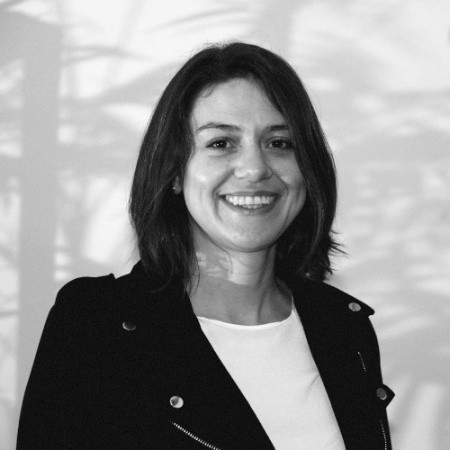Series: Westerners in India.

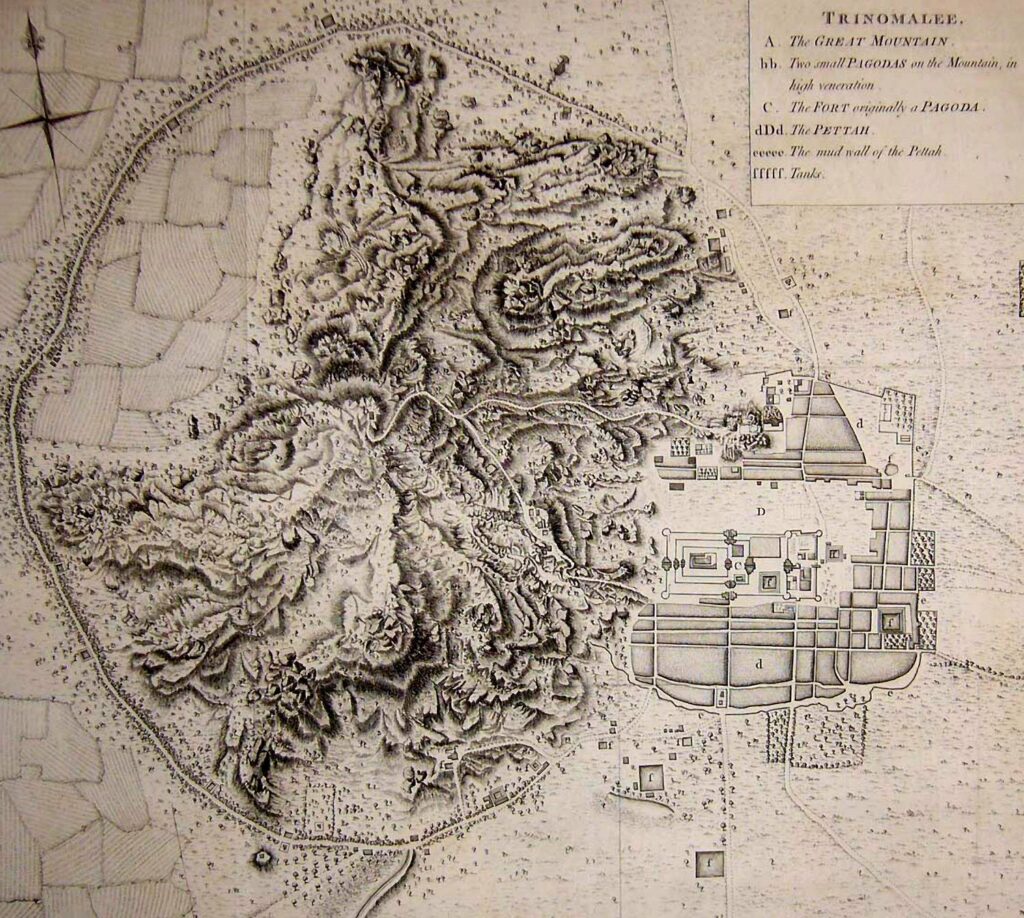

The following is an expanded and more compressive article that is sourced from Ashrams of India Volume 2.
In 1911, Frank Humphreys, a policeman stationed in India, became the first Westerner to discover Sri Ramana. He wrote articles about him which were first published in The International Psychic Gazette in 1913.
Sri Ramana only became relatively well known in and out of India after the publication of two books in 1934 and 1935 by Paul Brunton, who had first visited him in January 1931 along with Bhikshu Prajnananda (former military officer Frederick Fletcher known later as Swami Prajnananda).
Some of the other foreign visitors that followed included Maud Alice Piggot who in January 1935 is thought to be the first English lady to visit Sri Ramana,
American social psychologist, Professor Pryns Hopkins (Prynce Hopkins) visited Sri Ramana after reading about him in Paul Brunton’s A Search in Secret India,
Grant Duff (Douglas Ainslie 1865 – 1948) was a Scottish poet, translator, critic and diplomat born in Paris, France, visited in 1935,
American anthropologist and writer Walter Yeeling Evans-Wentz in 1935,
American Chemist Dr Bernhard Bey in 1935,
Paramahansa Yogananda (accompanied by his secretaries Richard Wright and Ettie Bletsch) in November 1935,
Maurice Frydman, a Polish-Jewish devotee who was a research engineer working in Bangalore was a frequent visitor from 1935,
Major A.W. Chadwick in November 1935,
Hans-Hasso Ludolf Martin von Veltheim-Ostrau in December 1935,
English Poet Lewis Thompson in approximately 1935 and stayed for 7 years,
Polish writer Wanda Dynowska (Uma Devi) lived in India from 1935 until her death in 1971 visited often,
American spiritual writer, author of the spiritual book series Life and Teaching of the Masters of the Far East, Baird T. Spalding (1872 – 1953) with a party of tourists that included the American couple Mr and Mrs Taylor in 1935 or 36,
S.S. Cohen, an Iraqi Jew, who made Ramanasramam his home in 1936,
American Dr Henry Hand in 1936,
American birth control advocate Margaret Sanger visited in January 1936,
There were some French ladies and gentlemen and American as visitors to the Asramam in January 1936,
33 year old Dutchman Sadhu Ekarasa (Dr G.H. Mees) came in 1936, (he mentored Hildegard Elsberg, a German Jew who lived in India for 10 years from 1937, teaching at a convent school in Kodaikanal – it is not known when she first arrived in the ashram but is thought to be 1937/38),
Olivier Lacombe (L’Attache Culturel, Consulat General de France, Calcutta) was a French doctor of philosophy who came for darshan in May 1936,
British scholar and Theosophist Duncan Greenlees, came in October 1936 for a few days,
French Dr Suzanne Alexandra Curtil Sen (Sujata Sen) in December 1936,
Pascaline Mallet visits in December 1936, a French writer and seeker whose 1938 book Turn Eastwards details her nine-month pilgrimage in India from December 1936 to September 1937,
Alfred Julius Emmanual Sorensen (Sunyata) was a Danish devotee made the first of four trips to Ramana in 1936,
American Mrs Roorna Jennings of the International Peace League, January 1937,
Professor Banning Richardson arrived in May 1937 and stayed for three days,
Swiss author Lizelle Reymond and future husband Jean Herbert in 1937,
David MacIver in 1938,
American engineer Guy Hague arrived in Sri Ramanasramam in 1938 after travelling the world, he stayed 2½ years,
Christina Austin brought Somerset Maugham (and his companion Gerald Haxton ?) to the ashram in January 1938 for a few hours (his 1944 novel The Razor’s Edge models its spiritual guru after Sri Ramana),
Three ladies on a short visit in Feburary 1938, Mrs Hearst from New Zealand, Mrs Craig and Mrs Allison from London,
A young English woman, identified as Miss J, arrived in May 1938, dressed in a Muslim sari, she had evidently been in North India and met Dr. G. H. Mees,
An American gentleman, Mr J. M. Lorey in June 1938,
Cuban-American writer of the 1920s and 30s Mercedes de Acosta stayed for three days in 1938,
renowned American painter Eliot C. Clark visited in 1938,
from Morocco, Bernard Duval in 1938 for about 15 days,
Two ladies, one Swiss and the other French, visited Maharshi in December 1938,
English woman Miss Ward-Jackson 1938/39,
Eleanor Pauline Noye arrived in 1939 and stayed for 10 months,
Ethel Merston visited in 1939,
Ella Maillart was a Swiss travel writer and photographer who remained in India from 1939 to 1945 and resided mostly in Tiruvannamalai,
William S. Spaulding Jr of New York City visited Sri Ramana in the 1930s,
Mother of Dr Suzanne Alexandra Curtil Sen, Jeanne Curtil and Suzannes’s daughter Monica arrived in 1940, Monica would attend school in Bangalore but would visit the ashram once or twice a year until 1952,
Lucia Osborne with her children Catherine, Frania and Adam, arrived in 1942,
Blanca Schlamm (Atmananda), an Austrian concert pianist in 1942,
William Samuel stayed and sat in the silence with Ramana Maharshi for 14 days in April 1944,
Alexander Phipps (Madhava Ashish) visited in 1944,
Australian travel writer Frank Clune visited in 1944,
Arthur Osborne in 1945,
Osborne’s fellow POW, Dutchman, Louis Hartz would visit after the Second World War,
Georges Le Bot, Private Secretary to the Governor of Pondicherry, and Chief of Cabinet of the French Government visited in December 1945,
British teacher Mr Phillips who was a former missionary and had been in Hyderabad for about 20 years visited in May 1946,
European Mr Evelyn in May 1946,
Mrs Barwell (whose husband was a barrister in Almora), accompanied by Australian Miss Eleanor Harriet Rivett, principal of the Women’s Christian College in Madras, visited in September 1946,
Wanda Dynowska (Uma Devi) arrived with a party of 25 Polish people, mostly girls in October 1946,
Miss Boman, a Swiss lady who had been in India for about eight years, and was head of the Baroda palace staff of servants, stayed for 4 days in October 1946,
American Robert Adams also stayed for three years from 1947 (disputed as to whether he was ever at the ashram),
Swiss Henri Hartung first came in 1947 for ten days,
American Sam Rappold arrived on the 27th of December, 1947,
Elsa Lowenstern is mentioned in Thelma Rappold’s 1948 diary entry,
a French sannyasin is also mentioned in the same diary who came for Bhagavan’s darshan, leaving France four months previously without any money, stowing away on a French ship bound for India. Barefoot and with nothing to call his own but the clothes on his back, he was making a pilgrimage through India in search of spirituality,
American Thelma Benn (later Rappold) spent nearly three years with Ramana Maharshi from February 1948 until Summer 1950 (her husband Sam Rappold was there for most of this time – these two Americans arrived in India independently, they married in Varanasi before leaving India), her friend from Seattle Mrs Wally Groeger visited her in the ashram in December 1948 and stayed for nearly a year, before going on to meet Swami Ramdas and then later returning to the States,
British national Sangharakshita (Dennis Philip Edward Lingwood) and his Indian friend Buddharakshita arrived in late November 1948, and stayed for six weeks,
American journalist Winthrop Sargeant arrived in 1948 for the Life Magazine article published in 1949,
American Photographer Eliot Elisofon spent two weeks on the ashram in 1948 taking the photos for Life Magazine that were published in 1949 (he made several trips to the ashram),
French photographer Henri Cartier-Bresson first visited in 1948, and later in 1950, arriving 10 days before the Maharshi’s mahasamadhi,
Krishna Prem (Ronald Nixon) met Ramana Maharshi in 1948,
two English women from South Africa Gertrude de Kock and Eureka Wessels arrived in 1948 staying for 10 days,
Stanford University professor Frederic Spiegelberg visited Ramana Maharshi sometime between 1948 and 1949,
friends of Eleanor Pauline Noye, Melva Cliff and Ananda Jennings were at the ashram for some weeks in 1949,
Swede Peer Wertin / Per Westin (Swami Ramanagiri) in 1949 and in 1950,
Mieczyslaw Demetriusz Sudowski (Mouni Sadhu) Polish author of spiritual, mystical and esoteric subjects in 1949 for a few months,
Henri Le Saux (Swami Abhishiktananda) first visited the ashram in January 1949 along with Fr. Jules Monchanin (Parama Arubi Ananda) who was on his third visit,
Dutch teacher and writer Wolter A. Keers was taken to Ramanasramam in 1950 by Roda Maclver, wife of David MacIver,
Miss Eleonore de Lavandeyra in 1950,
American yogini Judith Tyberg (Jyotipriya) stayed for a week sometime between 1947 and 1950.
Unidentified Western visitors and devotees of Ramana Maharshi at the end of the article.
https://archive.arunachala.org/ramana/devotees



Lucia Osborne with her children Catherine (Katya, Kitty) Frania and Adam, arrived in 1942.
During a summer holiday in Kashmir during 1942, the Osborne family were met by David MacIver who also owned a cottage opposite Ramanasramam. After a few weeks, Osborne had to return to Bangkok, Lucia and the three children went with McIver to Tiruvannamalai. Parting at the Lahore railway station, Lucia and the children went on to Bombay and then south, and Arthur went to Calcutta and then on to Thailand. Returning to Bangkok he was taken as a POW and held for three and a half years by the Japanese. Osborne arrived in Ramanasramam in 1945, following his internment to be reunited with his family.
Kitty Osborne writes in 2018 – My mother, Lucia Osborne, was born in Poland as Ludka Lipszyc on February 15, 1904. She came from a large orthodox Jewish family and met my father, Arthur Osborne, when he was in Warsaw teaching English. At the time, she was engaged to a very rich Jewish boy from Czech Republic, but from what I found over the years my mother looked at my future father once and made a decision. She knew what was good for her… and for him! They married in 1934, I was born in 1936, and two years later we went to England. Her family was not interested in marriage, they seriously threatened to renounce her, but she had never been a pushover … not then or at any other point in the future, she was just like that. When Lucia and her husband came to Yorkshire and met his family, it turned out that that this family wasn’t too happy about it either. “What, did you marry a Jewish woman ?! What a shame, ”etc. I was only two years old at the time, so I had no real memories of these events, but I picked up a lot of the emotional background by eavesdropping on adults talking, as children do when they grow up – they don’t realize they are listening.
Nevertheless, my parents sensed problems with the political climate at the time, so my father applied for a job as a lecturer at Chulalonghorn University in Thailand, then known as Siam.
They both wrote many letters and tried very hard to get Lucia’s family to join them, but the family did not seem to be concerned about Germany and Nazism at all. Then the borders were closed and no one was allowed to leave Poland. After the war, it turned out that my mother’s entire family, except for one sister and one brother out of ten siblings, had been murdered in various concentration camps. For the rest of her life, my mother could barely talk about it.
In Bangkok, we lived in a vast old house surrounded by an overgrown old garden. My brother Adam and my sister Frania were born there, and my memories, though somewhat blurred by time, show a happy and somewhat wild childhood. Adam and I spoke mostly Siamese and not English because it is a tonal language and it is much easier for children to learn it.
Although I did not realize it, my parents were already involved in the search for a guru who could show them a deeper meaning in life. In the 1940s and 1950s, spiritual ignorance and intolerance were much stronger than they are today, and the search for a deeper lifestyle was quite unusual. A small team of like-minded seekers formed a group that stayed in touch for many years and shared information.
The turning point on my parents’ spiritual path was 1936, the year of my birth. They met Martin Lings, who later was the private secretary of Rene Guenon, a leading thinker in the school of Eternal Philosophy. Rene Guenon said that there are universal truths and wisdom common to all major world religions. Inspired by this, my parents went to Switzerland the following year and met Frithjof Schuon, who initiated them in Sufi Shadhiliya-Alawiya. Lucy was given the Arabic name Shakina. Later, my father translated Guenon’s work, The Crisis of the Modern World, into English. About the same time, one of their group of seekers heard about Ramana Maharshi and came to Tiruvannamalai to investigate the matter, but [one of the group members] announced that Ramana was not a guru.
In 1941, my father took a long vacation from Bangkok. His university used a unified system for workers abroad – two years of work followed by six months of vacation, to give them time to visit their home country and return by boat. My parents were not interested in returning to England, so they went to Kashmir to meet the great Sufi master. During this trip, my father received a telegram telling him that the situation in Bangkok is very precarious and that he should not bring his family back until things are more settled. He returned on his own, promising to bring us back as soon as he could. Two days after his return, the Japanese bombed Pearl Harbour. They, too, marched to Siam and all the foreigners – including my father – were interned. Arthur was imprisoned in a POW camp on university grounds, which was under the direct supervision of the Siamese. He later claimed that this was the reason he survived, as many people under direct Japanese control were sent to work on Burma’s railroads. Most of these people did not survive.
Lucia found herself alone, without funds and with three small children: five, two and one year old. One of the aforementioned group of spiritual seekers, David MacIver, travelled to Tiruvannamalai, met Ramana Maharishi and was so impressed that he bought some land there and built a house. David lived in Mumbai working for The Illustrated Weekly of India, so he spent very little time in his house and gave it to my mother until she could manage and hire her own. Thus we came to Tiruvannamalai and Bhagavan.
When Lucia met Ramana Maharishi, she realized that whoever told them that He was not a guru was completely wrong. Not only was he a guru, there was also a Sat Guru; he was the greatest living embodiment of Divinity. She immediately wrote to Arthur and told him about it, but he did not receive any letters from his family for two years. We three children immediately accepted that Bhagavan was extraordinary. As far as I can remember, we never talked about it or thought about it… we just knew it was so. We talked with Bhagavan, showed Him our toys. We told Him our stories and He always responded to us on a level we understood. I remember that my mother spoke to him (through an interpreter) – usually she wanted to clarify some metaphysical problem that we were not interested in. People often said that Bhagavan’s answer to one person’s question can also solve the unwritten questions of others present. Much of what he said was specific to the person to whom he was addressing, but the answers also interested others. People even enjoyed comments about our strollers and reading books. I showed Him my nursery rhyme book, Mother Goose, and he noticed how worn it was, and then gave it to someone to rebind. Actually, now I think we remember showing everything to Bhagavan: letters, newspapers, sharing stories about our friends and families. The old hall was a fairly open and friendly place with local gossip as well as more serious conversations about spiritual quests. what he said was specific to the person to whom he was addressing, but the answers also interested others. People even enjoyed comments about our strollers and reading books. I showed Him my nursery rhyme book, Mother Goose, and he noticed how worn it was, and then gave it to someone to rebind. Actually, now I think we remember showing everything to Bhagavan: letters, newspapers, sharing stories about our friends and families. The old hall was a fairly open and friendly place with local gossip as well as more serious conversations about spiritual quests. what he said was specific to the person to whom he was addressing, but the answers also interested others. People even enjoyed comments about our strollers and reading books. I showed Him my nursery rhyme book, Mother Goose, and he noticed how worn it was, and then gave it to someone to rebind. Actually, now I think we remember showing everything to Bhagavan: letters, newspapers, sharing stories about our friends and families. The old hall was a fairly open and friendly place with local gossip as well as more serious conversations about spiritual quests. I showed Him my nursery rhyme book, Mother Goose, and he noticed how worn it was, and then gave it to someone to rebind. Actually, now I think we remember showing everything to Bhagavan: letters, newspapers, sharing stories about our friends and families. The old hall was a fairly open and friendly place with local gossip as well as more serious conversations about spiritual quests. I showed Him my nursery rhyme book, Mother Goose, and he noticed how worn it was, and then gave it to someone to rebind. Actually, now I think we remember showing everything to Bhagavan: letters, newspapers, sharing stories about our friends and families. The old hall was a fairly open and friendly place with local gossip as well as more serious conversations about spiritual quests.
Once we got to Tiruvannamalai by train from Madras. I called a horse-drawn carriage with a nice, sturdy horse to take us home. But my mother said, “No, we’ll take that horse-drawn carriage with a skinny, hopeless looking animal.” I said she was not fit, but my mother insisted, “If we don’t hire this animal, no one else will take advantage of it and then it will starve.” Indeed, that horse had died before we got to the station gate!
Lucia was a wonderful woman. She managed to create a home, feed, dress and raise her children in terrifyingly difficult circumstances. Ultimately, the British government granted her a pension which was issued as a loan during the war. It was some help, but it is interesting that her husband, my father, insisted on paying off his retirement in small sums after the war, despite the fact that my mother, who dealt with our family’s finances and was aware of our difficulties, noted a bit reluctantly, that Arthur was probably the only internee to ever pay that debt.
Lucia became one of Bhagavan’s most ardent and zealous devotees. She spent as much time as possible meditating in His presence in the Old Hall. My brother Adam once went to Bhagavan and told him that his daddy was in a concentration camp and would like Bhagavan to take care of him and keep him safe. Bhagavan smiled and nodded. It was enough for all of us. We knew our daddy would be safe and my mother stopped worrying.
We three children learned Tamil the way children do, but for Lucia it was much more difficult. The main problem was that written Tamil is completely different from spoken Tamil, and in those days there were no books to learn spoken Tamil! So my mother spoke a combination of the classical Tamil she had learned and the street, rough Tamil. We children laughed and teased her about it. I don’t think we realized that she already spoke seven languages anyway, but we probably wouldn’t have been more impressed even if we had known it; languages come so easily to children!
Once upon a time we were all in Madras with friends named Sharma. There, Lucia received a telegram saying that Arthur Osborne was dead – he was killed during the war. Her friend, Mrs. Sharma, immediately began to feel sorry for the mother of the loss, but Lucy was not interested in her comforts. “He’s not dead,” she assured her friend. “If he was dead, I would know it. In any case, Bhagavan said he would take care of Arthur. He’s not dead. Then a very peculiar scene happened in which Mrs. Sharma was still trying to comfort her mother by trying to confront the facts while my mother was consoling Mrs. Sharma who thought that Lucy had lost her mind in grief. In any case, it was all clear up in a few days, when Lucia received another telegram saying, “Sorry, that’s not the Osborne.” Interestingly, none of us even doubted that our father was safe. After all, Bhagavan has made it clear.
Lucia loved to walk around Mount Arunachala, the holy manifestation of Shiva on earth. I think she walked once a week. One time she went to pray for my father’s health because he was sick for a while. She was so engrossed in her thoughts that she passed right next to the entrance to our path. Instead of going in the opposite direction during pradakshina, she continued walking and circled the mountain twice in a row! Other times she was walking, it was raining, or rather heavy downpour. Being quite close to one of the mantapamas standing on the hill, she threw herself there and sought shelter. Unfortunately, the mantapam was very old, as are most, and leaked very heavily. Finally she pressed herself from behind into a small temple built for a deity and sat down to wait out the rain. Some of the villagers followed her in because they, too, wanted to avoid the downpour. My mother usually wore white saris, and when she moved a little in her recess there was an immediate panic and people shouted “pissasu, pissasu” which means “spirit, spirit”. The best thing happened when several people came to us the next day and told my mother to be careful when walking around the mountain, as there is a ghost lurking in the mantapama and it could attack her.
As the eldest of the three Osborne children, I should have understood some of the extraordinary difficulties my mother had to grapple with, but I must admit that I had no idea. Lucia somehow made our life carefree and fun, and we had time to run wild around the area. I don’t remember ever feeling poor or deprived of anything. She also managed to save some money and buy a piece of land, admittedly very cheap, on which she built a house for us after my father returned from the camp. She once told me that the whole house only cost 5,000 rupees. My mother never threw anything away. It has always been used for pieces of rusting metal, pieces of cracked cans… whatever you find. One time she broke her leg and was completely immobilized. I took advantage of it and threw myself into the old warehouse. I got rid of piles of rotten, rusty springs and completely dilapidated electric stoves… in fact, we found a huge pile of scrap metal. I threw all these things in the garden and told Unnamalai to get rid of it. When I returned a few months later, the first thing I saw in the garden was the same pile of rubbish. “Why?” – I asked. “I told you to throw out all this trash.”
It was made clear to me quite clearly that when Amma’s health improved and she started walking again, she immediately wanted to know what happened to her pile of trash, and no one was prepared for her anger, telling her they had been thrown away. She would have kept it there forever if I hadn’t picked up the garbage myself and disposed of it.
Unnamalai accidentally came to see my mother when she was about 16 and a leper. My mother had a reputation as a homeopathic doctor, and Unnamalai was hoping for a cure. In fact, our wonderful leper hospital was nearby, and my mother sent her there. Unnamalai was completely cured and stayed with us from then on until she retired in the 1980s. She and my mother were an amazing team – my mother was making her hell and Unnamalai didn’t owe her.
My mother turned saving into an art form, and my childhood memories surely contain heaps of unbelievable junk stuck in unbelievable places. The old yellow plastic frisbee became our salad bowl, and other unlikely containers were bowls or bowls that appeared on our table, constantly entertaining our guests. Lucy was indescribably friendly. Almost all who came to the ashram spent some time in our home before going to their own place. My mother felt she was lucky and could be close to everyone with Bhagavan’s grace, so she willingly offered hospitality to anyone who needed her.
My father’s health was almost completely destroyed during his internment as he was more or less starved during the war. My mother studied homeopathy so that she could care for it herself, and she did it for the rest of her life. She took care of its comfort, well-being and every aspect of life. She guided his diet and made him a home where he could feel comfortable. It was a small house, but we loved it. In terms of diet, it seems to me that my father’s regime consisted mainly of removing whatever he liked from the menu – coffee, broad beans, oranges, etc. I stole pieces from him that he liked, but only when my mother was not watching.
My father had a hard time finding work after returning home, and these were troubled times. But with Bhagavan’s help, it was successful. Then Arthur founded the ashram magazine, The Mountain Path, and edited it until his death in 1970. Just before he died, his last word to his wife, my mother Lucia, was “Thank you.”
After the death of her father, Lucia edited the magazine until the arrival of Viswanathan, who took over the work. It was not a small achievement for a Polish woman.
My parents were only 60 when my father died, although he grew old quickly due to the hardships of the war. Lucia’s health began to deteriorate as well, and she spent more time in England since, where she had relatives and the climate was milder. She would probably find a hospitable home in every country in the world, with people who used to live with us in Tiruvannamalai and who continued to correspond with her for the rest of her life. She needed open-heart surgery at the end, but was never completely healthy again. She died in London on December 2, 1987. Before she left us, she had completed the first draft of the book, which included her beliefs and views. Many of them were later published in The Mountain Path.
I was with her until the end, and after cremation, her ashes were placed in my suitcase in preparation for my trip to India. For three days and nights, she harassed me from beyond the grave, saying, “I want to go home, please take me home.” I remember one evening sitting up in bed and telling her, “Look, you’re dead and I’m not. I need sleep, I’m alive and you have to let me sleep. I promise I’ll take you home. Eventually, when she was buried next to my father in Tiruvannamalai, she found peace.
Lucia Osborne was a brave woman who endured all the trials and tribulations of life with total trust in Bhagavan. Even though she was tough and often extremely controversial, she was also exceptionally kind and generous. She had great wisdom, and many loved and respected her. It continues today. I often meet her admirers, people who loved and appreciated her then, and who remember her to this day. indika.pl
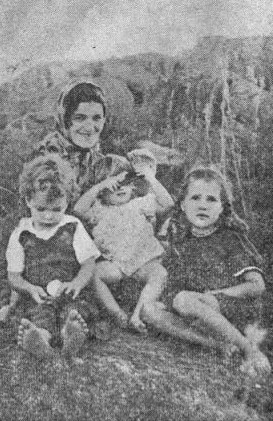

Lucia writes – Our stay in Kashmir was nearing its end in September 1941 as Arthur’s six months leave from the Chulalongkorn University in Bangkok was nearly up. We were getting ready to return to Siam without having seen Ramana Maharshi because our friends maintained that it would have been far too hot for the children to go there from April to September. Unexpectedly we received a letter from the British High Commissioner that women and children should not go back as there was the likelihood of the war extending to Siam. Men holding positions of prestige should return. One of our friends, David McIver, had a cottage in Tiruvannamalai and it was arranged for me and the children to stay in it as he himself would be travelling most of the time. I was delighted, probably because of the possibility of making a sculpture of the Maharshi. We all left Kashmir and parted at Lahore.
Arthur on his way back to Bangkok, our friends on their travels and the children and myself to Tiruvannamalai. David had already informed the Ashram about our visit. At the station in Tiruvannamalai we took two horse-carts (jutkas), one for the luggage and the other for us. I did not notice much on the way not even the mountain Arunachala as I was too preoccupied with the children, three live wires, and seeing to it that they did not fall out of the cart and that the street urchins hanging on to the back of the running cart did not get hurt. There was also excitement over Frania who was nearly one year old suddenly starting to speak for the first time and fiercely telling the little boys “Jao, Jao” in Hindi which means “Go, Go” or “Let go.”
Our friend’s commodious cottage was in a spacious garden full of flowers; a riot of colours, red and yellow predominating. The first few days I was very busy getting settled and did not go to the Ashram. Kitty who was five years old then was the first to see him. A sadhu-swami friend of David’s was also living in one of the rooms and he took Kitty to the hall of the Maharshi. She was the first western child to come to the ashram and created quite a stir with her golden locks and appearance. She was used to being stared at and admired and blest. There was a small table or stool before the couch on which the devotees put their offerings but when Kitty stood with her tray of fruit, not quite sure what to do with it, the Maharshi smilingly pointed to the stool and so Kitty, still holding the fruit, sat herself down on it with her back towards the Maharshi! Someone, possibly Bhagavan himself, remarked that Kitty was making an offering of herself. I wondered later how Marpa the Translator, the Guru of the great Milarepa, would have interpreted it.
Before leaving Bangkok for our holiday in India Arthur showed me a booklet, or probably Who am I? Spiritual Instruction received from India with a picture of the Maharshi in it. The picture impressed me greatly as a model, so caught up in sculpture was I at the time. Perhaps this was a sort of vichara (Self-enquiry), in clay to express the essence of the model “Who are you?” Never have I seen a face so alive, so serene and wise, so interesting. Even as a child I used to watch myself and wonder who I was and here was a book showing the way to find out but I was not interested to read it, or simply it did not occur to me to do so. If Arthur was disappointed he never showed it. After arriving in Tiruvannamalai I still had the conceited attitude of judging for myself and finding out just by seeing the Maharshi without ever having gone deeply into his teaching.
On entering the Ashram hall for the first time, from the door I perceived a figure reclining on a couch. Actually I did not see anything much except his extraordinary eyes transparent like water, looking at me. There was no more any question of judging for myself or finding out. Genuine, so transparently genuine, was he that to doubt it would have been like doubting the innocence of a baby; an extraordinary combination of such innocence and great wisdom. I greeted him in Indian fashion with the palms folded in namaskaram and sat down on the floor among others near the couch. I closed my eyes and the thought came to me or it had, I could almost say ‘recalled itself to me,’ “There is only God. All is one.” There was a feeling of great ease mixed with unease. Those eyes could see through me. I sat like that for ten or fifteen minutes. Someone told me that the Maharshi never shifted his eyes from me and that it was very remarkable. But it was not initiation. This happened later.
I started going to the hall mornings and evenings and concentrated on the heart, the spiritual heart on the right side. I did not find meditation difficult but sitting cross legged was another matter. How painful it could be in the beginning. But I persisted.
One early morning I sat down in the hall a few yards from the couch to meditate. Bhagavan was busy with some letters and papers brought from the office. Suddenly it happened. What actually happened is very hard to say. Indescribable bliss of not being weighed down any more, waves of bliss and fear, of lightness, as if my heart was expanding, expanding. In the midst of it I noticed Bhagavan suddenly turning to me with a searching, almost startled look, letters and papers forgotten. Afterwards I tried to describe this experience and it turned out to be a poem which was surprising, as I was not given to writing poetry and find it hard enough to express myself even in prose. The beginning of it I have forgotten. It was something about my confined heart trying to free itself; like a fluttering bird flying out of its cage into the boundless sky, into freedom void.
High, higher so near, Over waves of bliss and fear
High, higher so near, fly heart shrank in fear of death
Was it Life?
Actually the expression ‘high’ does not express it. It was without dimensions or embracing all dimensions, including a bottomless precipice or void. Nothing to hold on to in fearful blissfulness. Words are so limited. I showed it to Bhagavan in the evening. He read it with obvious interest, sat up from his reclining position to read it, then put it under the pillow. A little later I saw him read it again. He did not give it back to me. It felt very much like a near miss.
Soon afterwards the war extended to Siam, the Japanese having invaded the country and all communications from Arthur ceased. Not a single letter for four years. No news at all even through the Red Cross. Prompted by me, Adam, who was about three years old, went up to Bhagavan and asked him: “Bhagavan, please bring back my daddy safely.” Bhagavan nodded, graciously assenting. That was enough. It was astonishing how we did not worry on the whole. Really strange, for someone like me who was given to anxiety and worrying over matters of scarcely any import, watching my anxious thoughts angrily, unable to shut them off. Yes ‘to shut them off’ like a tap, that is what I felt one should be able to do. Worrying never helps, never changes anything, so why harbour and activate such negative feelings?
Often the children would come into the hall, Frania still in the crawling stage on all fours as if prostrating. Once she crawled first to Bhagavan, then to me. He patted her saying to those around, obviously delighted: “You see she did not go first to her mother; Bhagavan comes first with her.” This he said in a most impersonal way. Adam would run jumping for joy and breathing loud like a little colt up and down in the hall between the two rows of seated devotees, men and women apart, occasionally stopping in his tracks to give me a brief hug. Bhagavan looked on with a smile which Kitty described to her father probably in the last letter to reach him from us: “Oh Daddy, I am so happy to be here. When Bhagavan smiles everyone must be happy.”
A most amazing vital period of my life had started.
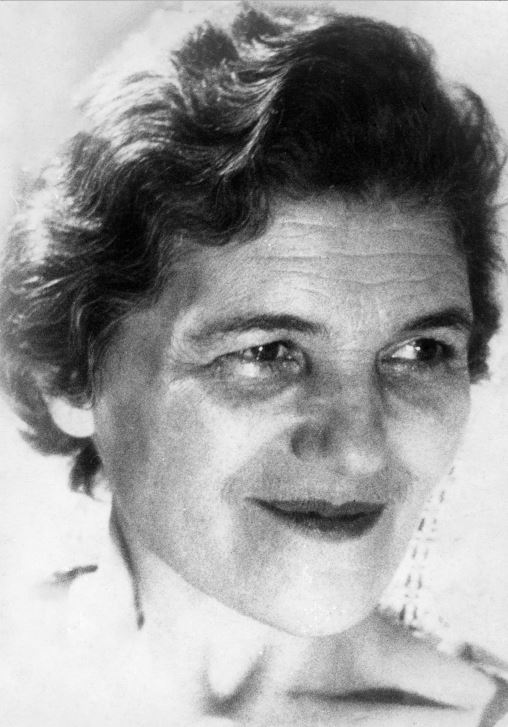
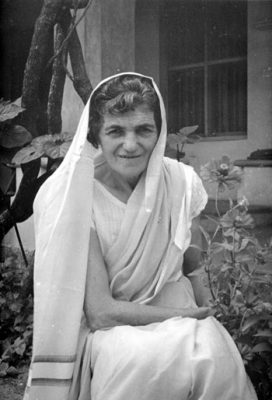
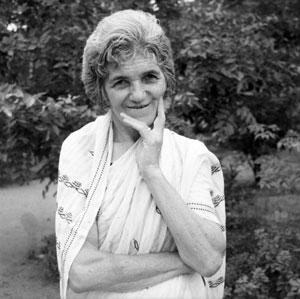
Catherine (Katya, Kitty) Osborne





From The Mountain Path April 2003 Obituary – ADAM OSBORNE was born in Bangkok on 6th March 1939, but he came to India with his parents at the age of 3. He spent the next 8 years in Tiruvannamalai when he was not in school in Kodaikanal and he played and talked and ran about in and out of the hall where Bhagavan sat. He went to University in England and then took his Ph.D in America where he became a citizen. He married an American and his 3 children were born there.
He was a writer on computer technology and then he invented the first portable computer which was a breakthrough into modern procedure. The system he inaugurated is ongoing and we still don’t know where it will end. He went bankrupt and lost a vast fortune through naiveté in business practices.
He developed Organic Brain Syndrome and came back to spend his last years in India where he died peacefully in his sleep on 18th March 2003, at Kodaikanal.
Adam made a speech about Indians lacking national pride which touched the hearts of almost every Indian who read it. The full text is printed at the back of the journal.
From being a go-getting typical American and epitomising the New World success story, he was forced to retire to a compulsorily quiet life dictated by his illness. His condition deteriorated over a period of ten years to the point where he could neither speak nor move by himself, but throughout this time he behaved with incredible fortitude and dignity. He was unfailingly polite to everyone around him and he never complained. Whatever he needed to learn and however hard it might have been, he became a gentleman who endured everything that was thrown at him with courage and fortitude. His death was, one suspects, a welcome release to him from a life that had become a relentless burden. He is now with Bhagavan.
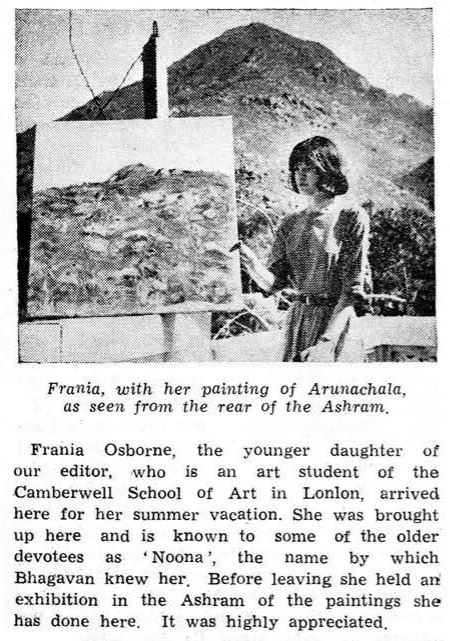
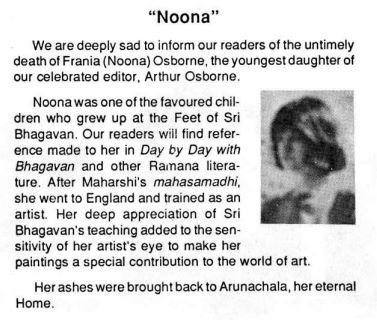
Blanca Schlamm (Atmananda) (1904-1985), an Austrian concert pianist came to the ashram in 1942 and stayed for six weeks.
Blanca first travelled to India in 1925, to attend the 50th anniversary celebrations of The Theosophical Society, at its headquarters in Adyar, Madras. She returned to India in 1935, and remained there for the rest of her life. In 1942, she went to Tiruvannamalai, to see Ramana Maharshi, hoping that he would be able to give her the peace of mind she had been unable to obtain from JK’s teachings. She stayed for about six weeks.
After an interval of over 12 years, her diary recommences with an entry ‘Ramanashram, 17th May 1942.’ Whilst there, Blanca felt peace and the power of the higher Self; talked to other seekers; visited the mountain Arunachala and had various visions and dreams. Throughout the rest of her diaries Blanca makes reference to Ramana with deep reverence and affection, but her destiny was to become the disciple of another guru, Anandamayi Ma.

Unidentified European Woman in 1943. From Monica Bose’s book The Hill of Fire she writes “It was in 1943 to the best of my recollection, that a young European woman came to visit the Ashram. Since I was spending Christmas in Tiruvannamalai that year, my mother invited some of the Ashramites including this young woman home for a meal. While she was with us I noticed a strange look in her eyes. Nothing in her behaviour, however, gave us any indication of what was to follow. When she got back to her small cottage near the Ashram she found that all her belongings had been stolen. Theft in those parts was not infrequent since the surrounding population was very poor. The shock she got when she found all her things had gone seriously disturbed the balance of her mind, and we heard the next day that she had been found lying naked and unconscious in the ditch that ran along the temple wall. She was taken to the hospital in Vellore for treatment. I saw her again at the Ashram a year or two later and she looked a different person. I think that the Maharshi’s instruction on how to abide in the still centre of oneself, away from the turmoil of thought and emotion, must have helped her, as it did many others.”
In the book Monica goes on further to write about some of the Westerners arriving at the ashram; “Suzanne would become reconciled with her original faith, the Roman Catholic religion. First, though, she had to overcome her prejudice against the Church, which she had long believed to be intolerant and arrogant in its attitude towards other religions. The lack of understanding and the righteous superiority generally shown by Christian visitors to the Ashram had done little to mitigate that opinion. Most Christians came there predisposed to negate everything that the Maharshi told them in the course of their talks with him, which they usually kept very brief, as if afraid of being led astray by him into pagan ways of thinking. A friend of mine from Madras, after spending just a short time in the hall came out in a state of some agitation. He admitted to me that he had felt the Maharshi was about to hypnotize him, as that was what he had been told to expect by some members of his Christian community in Madras. Suzanne had only contempt for such an attitude. But then, her own attitude would be transformed after she met, on her return to Tiruvannamalai in 1952, two notable Christian religious, a missionary priest, Father Jules Monchanin, and a Benedictine monk, Dom Henri Le Saux also known as Swami Abhishiktananda. In 1950 they had founded together a Christian contemplative ashram, Shantivanam, on the banks of the Kaveri River near the small town of Kullitalai some 240 kilometres south of Tiruvannamalai.”
William Samuel (1924 – 1996) sat with Ramana Maharshi in 1944. While a 21 year old captain in the US Army and a veteran of three years fighting with the Chinese Nationalist army against the Japanese in China, he took a period of R&R at the ashram where he stayed for two weeks in April of 1944. He writes in one of his books The Awareness of Self-Discovery about his time with Ramana Maharshi. “Some years ago, I was honoured to be the first American student of a renowned teacher in India. For fourteen days a group of us sat at the feet of this “Master,” during which time he spoke not one word – not so much as a grunt – until the final day when he bade us farewell and assured us we had learned much. And to my surprise, I had… It took months before the seeds of those silent days began to sprout one by one, revealing that there are indeed many things for which the uptight, recondite babble of books and teachers is more hindrance than a help.”
William Samuel (1924-1996) was a renown spiritual master of metaphysics and higher Truth. He was known as the teacher’s teacher. He passed along his knowledge with brilliance and humble humor as a writer and speaker for over 40 years. William Samuel devoted his life to the search for Truth. His quest to study at the fountainheads of the world’s ideas took him twice around the globe, into its remotest places. His journey included time in China with Mr. Shieh the venerated Taoist Monk and, in 1944, a visit with Ramana Maharshi in India. Mr. Samuel’s ability to instruct in a clear, simple and effective way has lead many to discover the fabled “peace beyond understanding.” wiliamsamuel.com
The Awareness Of Self-Discovery (1970) by William Samuel, is a book is for those who want Illumination itself, not a description of it – and for those who want to know how to live it. William Samuel did not embrace the idea of being called a teacher, saying “I’ve been telling my own story – how it happened and what it has allowed me to understand–for over 30 years. That is not the same as being a teacher.” He was a prolific writer of truth, science, religion, and spiritual awakening and authored many books.
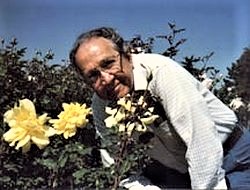

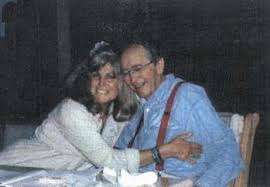

Alexander Phipps (Madhava Ashish) visited in 1944, and his guru Ronald Nixon (Krishna Prem) visited in 1948. Madhava Ashish (1920 – 1997) was a Hindu mystic with many European followers, who began his life as a conventional member of the old officer class.
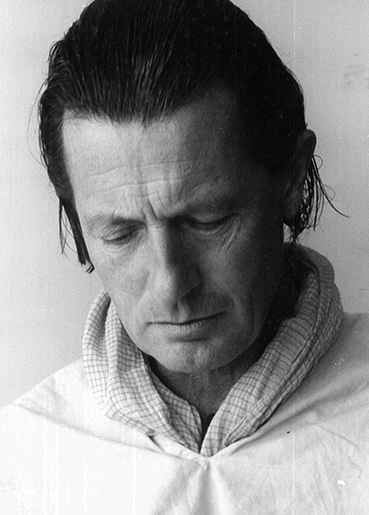

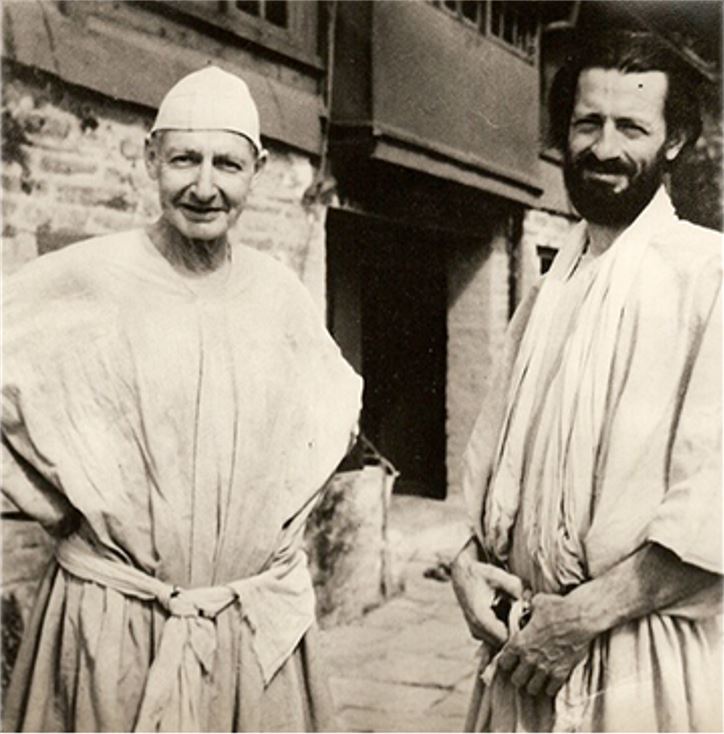
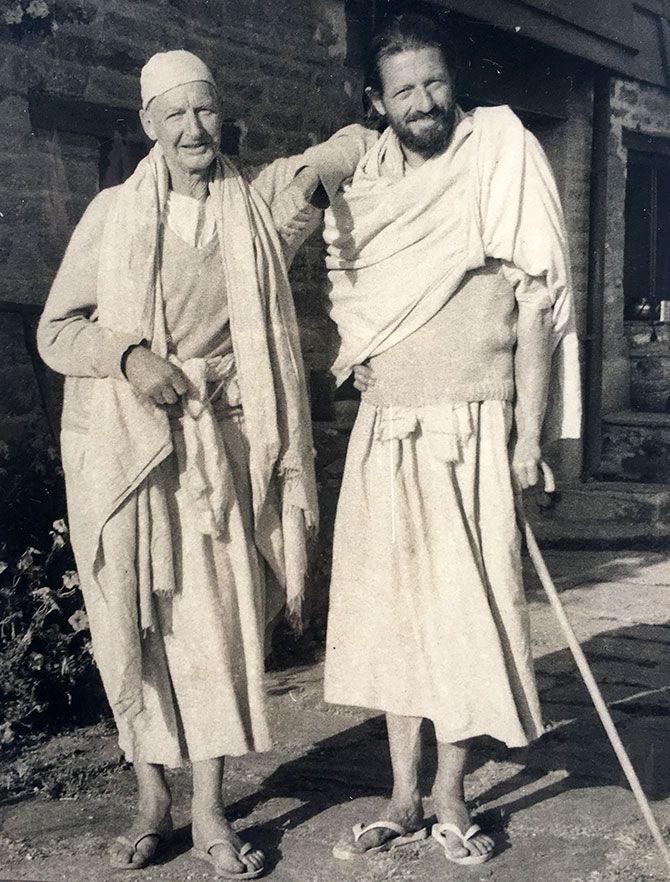
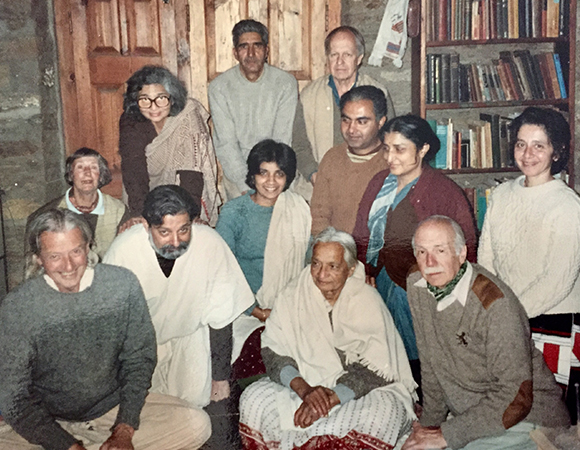
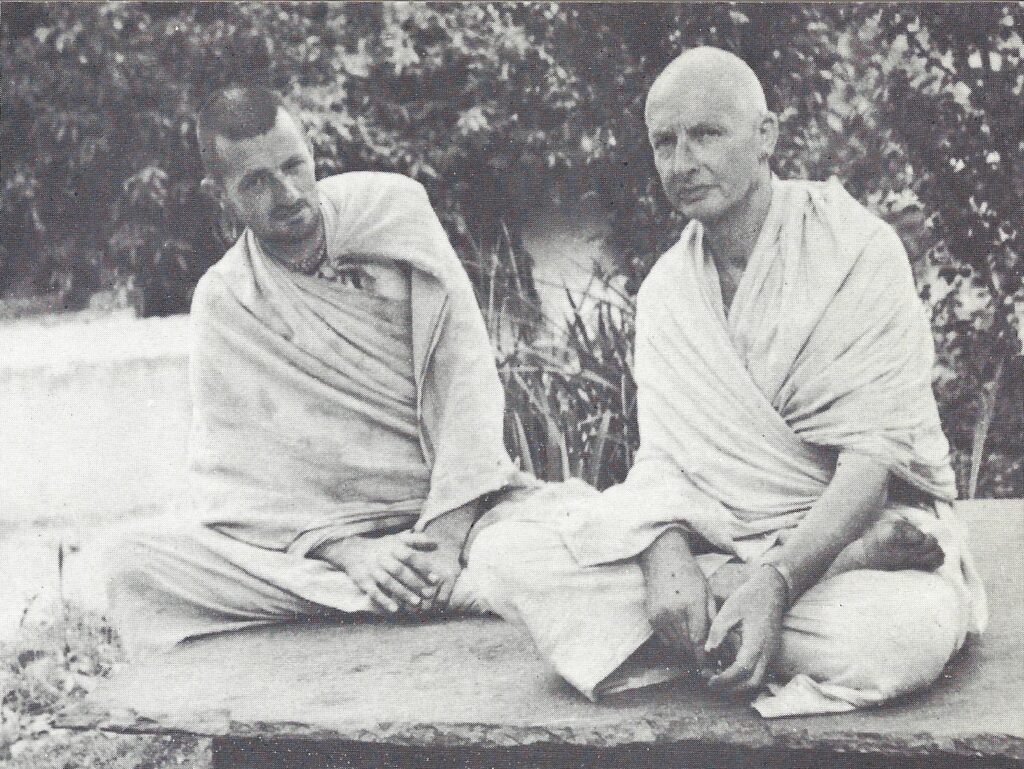
This photo is from Himalayan Memoirs by Navnit Parekh – Sri Madhav-Ashish and Swami Sri Krishna-Prem at Mirtola-Ashram.
Australian travel writer Frank Clune visited in early 1944.
Francis Patrick Clune, OBE, (27 November 1893 – 11 March 1971) was a best-selling Australian author, travel writer and popular historian.
From his 1946 book Song of India he writes –
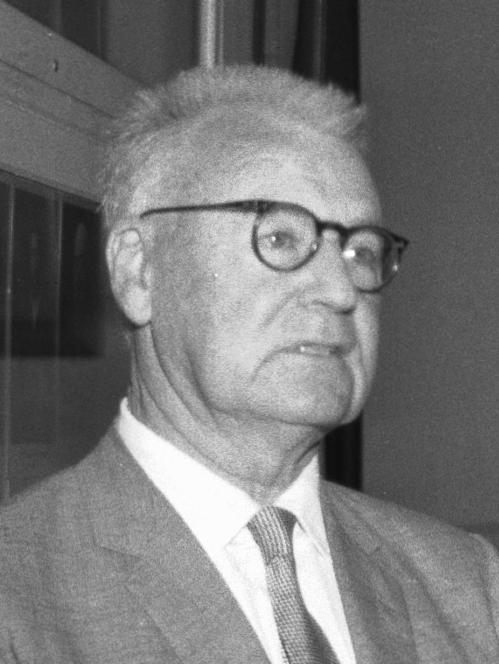
My next pilgrimage was to the Ashram of Shri Maharshi, the ‘Saint of Tiruvannamalai,’ about 70 miles from Pondicherry. I stayed a day and a night in this Ashram, and had a talk with the saint, who is not a silent one, like the Yogi of Pondicherry. In fact, Shri Maharshi is a likeable old chap, very human and approachable.
Born in the south of India about 70 years ago, he began having ‘‘visions’’ in his ‘teens, and, obeying a ‘‘voice,’’ he went to Tiruvannamalai, where he’s been ever since. Not highly educated in ‘‘book-learning,’’ he has attracted disciples and established an Ashram solely by the extreme spirituality of his personality, and by the simplicity of his teachings, which are taken down in the Tamil language by his disciples, translated, and printed as ‘‘gospels.’’ Great is his fame, and he is venerated by the multitude. People come from all over India just to see him. He gives his blessing free to everybody who asks for it. In some queer way, that is all his own, he “radiates’’ peace and spiritual joy.
Shri Aurobindo is a ‘‘ learned ’’ saint, while Shri Maharshi is a ‘‘simple’’ saint – but both have arrived at the same goal of self-purification by the spiritual discipline of Yoga, the Indian system of mind-control.
The aim is “ecstasy,’’ to be attained through meditation. The Christian saints, down the ages, have also achieved ecstasy, or “union with God,’’ by prayer and meditation, and by monastic spiritual discipline, becoming revered for their purity of soul, which works miracles. This may be the same thing as “Yoga,’’ but under a different name. India is the land where holy men still strive to be saints, of the non-Christian variety. They are revered as truth-seekers and truth-finders. In or bustling, money-crazed modern civilization, we are inclined to jeer at saints, both Christian and non-Christian – but it may be that the saints, seeking and finding peace, inner peace, can well afford to smile benignantly at those who mock them.
India’s message to the Western world – and even to modern Christianity – is that life without religion is incomplete. Whatever form the religion may take, whatever name of God may be invoked, the devotee who seeks the Truth sincerely will find at least something more than he who never seeks at all.
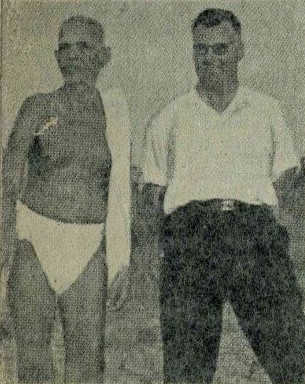
Before leaving the Ashram, I attempted to interview the saint – but he turned the tables and interviewed me for half an hour, quizzing me about my adventures in many lands. What interested him most, I think, was my mention of the Stone Age aborigines of Central Australia, and of the giant stone named “Oolera’’ – Ayer’s Rock – the biggest gibber in the world, an aboriginal place of pilgrimage.
I got only one good question in, asking him the meaning of the tiger-skin on which he sat. ‘‘It is a symbol of my fierceness to protect my religion,’’ was his smiling reply.
“But what is your religion?’’ I innocently asked.
“Seeking the truth,’’ was his prompt reply.
So ended my pilgrimage to the Saint of Tiruvannamalai. I think it is not so much his actual teaching as his calm and serene atmosphere which attracts disciples. He appears, in some indefinable way, to have entirely purged his soul of evil, and to emanate goodness in a kind of aura. To our westernised minds, the whole rigmarole has its funny side, when reduced to descriptive words – but actually the old boy isn’t funny at all. He’s immensely dignified and convincing as a kind personality. Some Christian bishops also have this quality – but I doubt whether they could radiate it, sitting clothed only in a loin-cloth, on a tiger-skin!
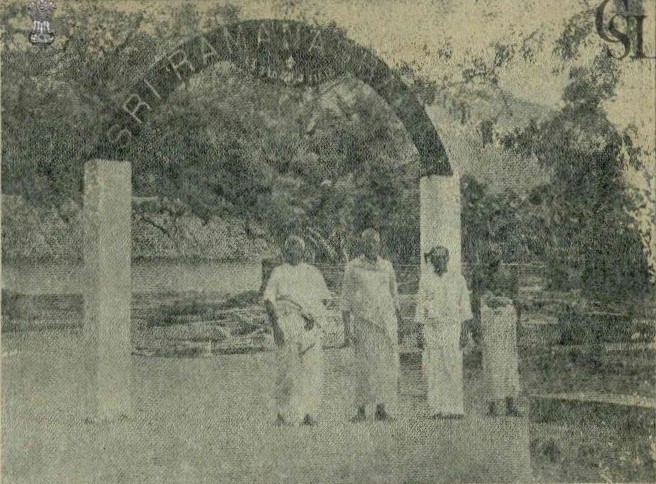
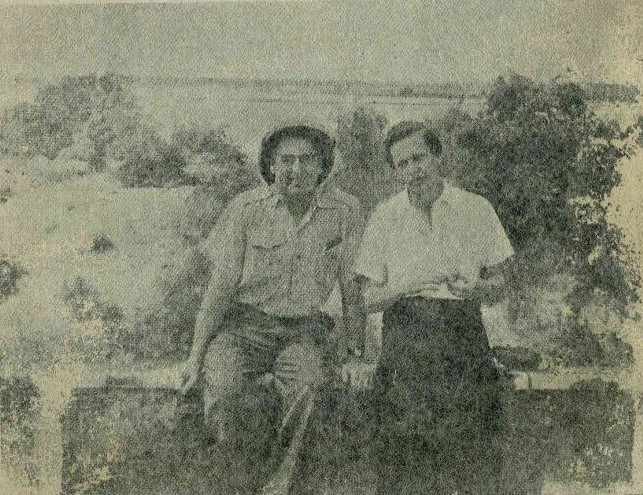
Download: Song of India by Frank Clune
https://archive.org/details/dli.csl.6610
https://archive.org/details/dli.ministry.06414/page/3/mode/2up
Writer Arthur Osborne (1906 – 1970) was initially was a follower of the French metaphysician René Guénon. One of the members the René Guénon group, David MacIver, sent the Osborne family a photograph of Ramana Maharshi and two of Bhagavan’s books, cautioning them that Ramana Maharshi was not a guru as he did not give initiations or accept anyone as a disciple. But Arthur and Lucia Osborne were captivated by the picture wanted to go to India and meet Ramana Maharshi. During a summer holiday Kashmir in 1942, they were met by David MacIver who also owned a cottage opposite Ramanasramam. After a few weeks, Osborne had to return to Bangkok, Lucia and the three children went with McIver to Tiruvannamalai.
Parting at the Lahore railway station, Lucia and the children went on to Bombay and then south, and Arthur went to Calcutta and then on to Thailand. From My Life And Quest, Arthur writes that his daughter Catherine was the first to see Bhagavan. She stepped into the hall where he used to sit, a small, beautiful child with curly gold hair, bearing a tray of fruit in her hands, the customary offering. Bhagavan pointed to the low table beside his couch where such offerings were placed, and she, misunderstanding, sat down on it herself, holding the tray in her lap. There was a burst of laughter. “She has given herself as an offering to Bhagavan,” someone said. A day or two later my wife entered the hall and sat down. Immediately Bhagavan turned his luminous eyes on her in a gaze so concentrated that there was a vibration she could actually hear. She returned the gaze, losing all sense of time, the mind stilled, feeling like a bird caught by a snake, yet glad to be caught. An older devotee who watched told her that this was the silent initiation and that it had lasted about fifteen minutes. Usually it was quite short, a minute or two.
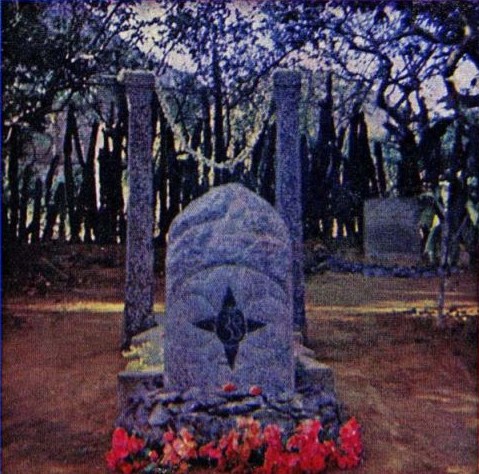
Osborne returned to Bangkok he was taken as a POW and held for three and a half years by the Japenese. Osborne’s only solace was Bhagavan’s picture and the two books. When the Japanese came to arrest him from the university campus, some urge prompted him to take these three things. While in the prison camp, he created and tended to a very nice garden. His personality, and his talks there, drew many people to him. One among them was Louis Hurst, who came to Bhagavan after the Second World War.
Osborne arrived in Sri Ramanasramam in 1945, following his internment to be reunited with his family. He describes his first meeting with Ramana Maharshi in My Life And Quest, “I entered the ashram hall on the morning of my arrival, before Bhagavan had returned from his daily walk on the hill. I was a little awed to find how small it was and how close to him I should be sitting; I had expected something grander and less intimate. And then he entered and, to my surprise, there was no great impression. Certainly far less than his photograph had made. Just a white-haired, very gracious man, walking a little stiffly from rheumatism and with a slight stoop. As soon as he had eased himself on to the couch he smiled at me and then turned to those around and to my young son and said: ‘So Adam’s prayer has been answered; his Daddy has come back safely.’ I felt his kindness but no more. I appreciated that it was for my sake that he had spoken English, since Adam knew Tamil.”
Their bungalow was built by his wife Lucia and four workmen, without a plan and without an architect.
Apart from a three year period in Madras and another time in Calcutta from 1952 to 1958 for work, he made Tiruvannamalai his home, spending the rest of his life there writing and raising his children (who were the first Western children at Ramanasramam).
Osborne authored many books about Ramana Maharshi, he also founded and published the ashram journal The Mountain Path which still enjoys a global circulation. He died in 1970, his body much weakened by the effect of his years in the internment camp.

The photo of Lucia Osborne at the bungalow near Ramanasramam, Tiruvannamalai on the 29th of January 1981, was taken from the 2004 book New Lives, 54 Interviews with Westerners on their search for spiritual fulfilment in India (newlives.freeola.net) Compiled, edited and mainly photographed by Malcolm Tillis. Lucia spoke fluent Tamil and practised Homeopathy.
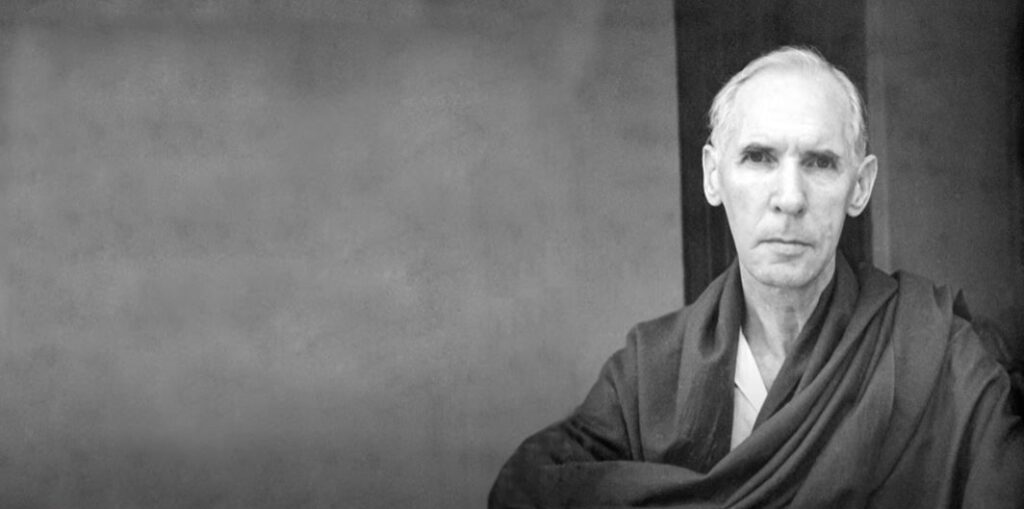
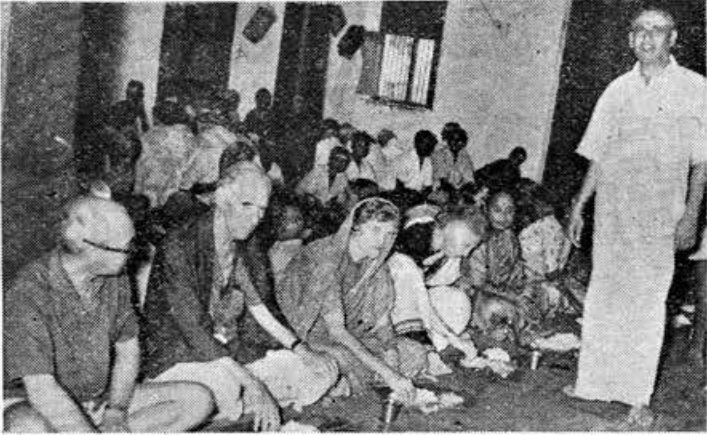

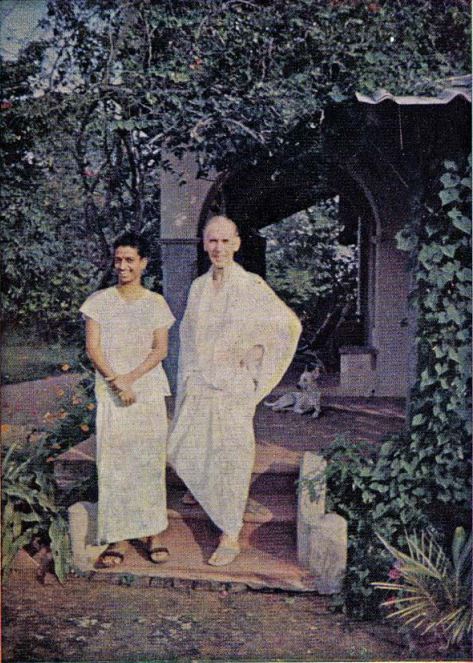
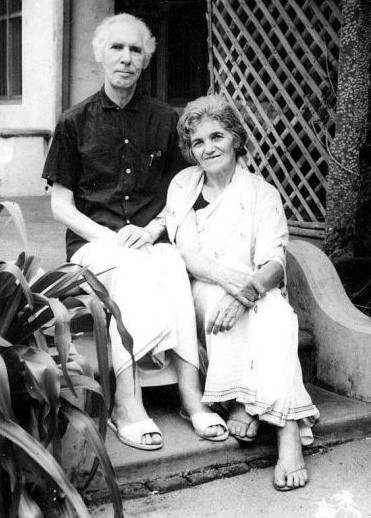
Nagar, after their return from England in 1969, Photo: The Mountain Path October 1969.
Mr. & Mrs. OSBORNE After a year’s absence abroad, Mr. & Mrs. Osborne have returned back to Sri Ramanasramam looking very much better. They had been to Europe for a change of climate and rest following a period of Mr. Osborne’s illness and heavy work . They almost lived in retirement, in England and in Spain and are sorry not to have been able to meet all friends interested in Sri Bhagavan’s teachings and devoted to Him . They feel confirmed in their impression about the unrest and spiritual hunger prevalent, particularly among young people in the world of disintegrating values, without anchorage at certainty, and their seeking for guidance which they need. If and when Mr. Osborne repeats his visit abroad, he hopes to be of all help he can in the service of Sri Bhagavan. We are all very glad that they are back at the abode of Sri Bhagavan.
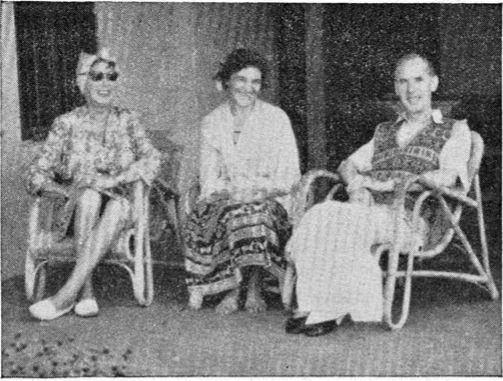
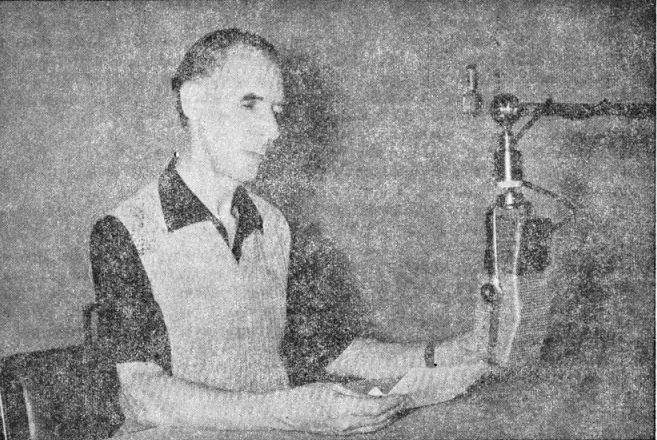
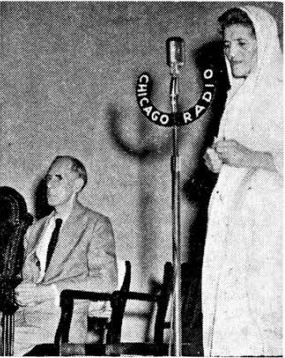


Face to Face with Sri Ramana Maharshi Compiled and Edited by Professor Laxmi Narain.
https://www.stillnessspeaks.com/wp-content/uploads/2016/07/Face_to_Face_with_Sri_Ramana_Maharshi.pdf
An excerpt form Chapter 15 of the biography Ramana Maharshi And The Path Of Self-Knowledge written by Arthur Osborne;
My three children, the only European children at Tiruvannamalai, were conspicuous among the devotees. One evening in December 1946, Sri Bhagavan initiated the two elder of them into meditation, and if their efforts to describe it fail, so do those of older people. Kitty, who was ten, wrote: “When I was sitting in the hall this evening Bhagavan smiled at me and I shut my eyes and began to meditate. As soon as I shut my eyes I felt very happy and felt that Bhagavan was very, very near to me and very real and that he was in me. It wasn’t like being happy and excited about anything. I don’t know what to say, simply very happy and that Bhagavan is so lovely.”
And Adam, who was seven, wrote, “When I was sitting in the hall I didn’t feel happy so I began to pray and I felt very happy, but not like having a new toy, just loving Bhagavan and everyone.”
Not that children sat often or long hours in the hall. When they felt like it they sat; more often they played about.
When Frania, the youngest child, was seven the other two were talking about their friends and she, having no real friends yet but not wanting to be left out, said that Dr. Syed was the best friend she had in the world. Sri Bhagavan was told.
“Ah?” he replied, with perfunctory interest.
And her mother said, ‘What about Bhagavan?’
“Ah?” This time he turned his head and showed real interest.
“Frania said, ‘Bhagavan is not in the world’.”
“Ah!” He sat upright with an expression of delight, placing his forefinger against the side of his nose in a manner he had when showing surprise. He translated the story into Tamil and repeated it delightedly to others who entered the hall.
Later Dr. Syed asked the child where Bhagavan was if not in the world, and she replied, “He is everywhere.”
Still he continued in Quranic vein, “How can we say that he is not a man in the world like us when we see him sitting on the couch and eating and drinking and walking about?”
And the child replied, “Let’s talk about something else.”
The Mountain Path October 1970 is almost entirely taken up with the life story of Arthur Osborne.
Download:
https://realization.org/down/mountain-path/7-4.1970-Oct.pdf
An article by Ravi S. Iyer How Arthur Osborne was directed by Ramana Maharshi in dream to write the book, The Incredible Sai Baba (on Shirdi Sai)
https://ravisiyer.blogspot.com/2019/12/how-arthur-osborne-got-directed-by.html
Osborne’s fellow POW, Dutchman, Louis Hartz would visit after the Second World War.
From The Mountain Path, April 1964, How I Met The Maharshi by Louis Hartz.
I met Arthur Osborne in an internment camp in Bangkok during the Second World War. At first I had little contact with him because he was very reserved. After some time, however, I approached him. I had a craving to understand and asked him point blank what is Truth. What sticks in my memory is how, sitting beside his bed in the common dormitory, he said. “I will tell you one truth – Infinity minus X is a contradiction in terms because by the exclusion of X the first term ceases to be infinite. You grant that?” Yes, I granted that.
“WELL, then,” he said, “think of God as Infinity and yourself as X and try to work it out.” When I asked for more explanation he just said: “Think this over and come tomorrow at this time and tell me what you make of it.”
I returned to my place in the dormitory, which was only some eight or ten steps distant, and suddenly it flashed upon me that he was right, that you cannot take anything away from the Infinite, and that I was not apart from it, only I had not known.
The thought made me so happy that I could hardly wait to speak to him the next day, but I did not like to disturb him earlier.
From that time onward he started to instruct me and after a few weeks he showed me a photograph of the Maharshi. There was an urgency in his voice as he spoke of him and he handled the photograph with reverence. I began to understand that there was only one ‘I’ and that it was in me and was everywhere.
The Maharshi grew so much in my heart that I felt him nearer to me than my parents or my wife. He lived more vividly in me than any person I had known. After some time we received permission to write a Red Cross letter to our families and I used mine to write to the Maharshi and ask him for guidance.
Then the war ended and I left the camp. The desire to enjoy life sprang up in me again.
I was strongly drawn to the spiritual path but even more strongly, for the time being, to a worldly life. I wanted to make money, to have power and fine clothes, to be important. In camp I had eliminated day-dreaming as far as possible. When I went to bed at night I slept straight away. But now my nights were often filled with planning and scheming.
A few years later when I was in Europe and due to return to Siam on business, I wrote to Osborne, who was living at Tiruvannamalai, to suggest that I should break my journey in India and stay there for a few days. He at once wrote back arranging to meet me and conduct me there and invited me to stay at his house.
In Madras we hired a car and drove to Tiruvannamalai. It was an old car and I felt that I was being slowly roasted in the midday heat. When I let my eyes rest on the sunbaked scenery or the country folk sheltering under the wayside trees I saw only the face of the Maharshi looming up before me. Nothing else registered.
I was terribly scared that the Maharshi would look in my eyes and see into me. I cursed myself for a fool for coming to this desolate place, with its heat and discomfort. I don’t know what prevented me from turning back; perhaps I was afraid to show Osborne what a coward I was. The nearer we approached the Ashram the more I shrank from meeting the Maharshi.
It was nearly dusk when we arrived and he had already retired, but Osborne went in to see him and asked whether he would see me for a few moments. I entered the hall and saw an elderly man reclining on a couch, who gave the impression of great reserve and certain shyness. It was not the severe Master or the Guru with the burning eyes that I had expected. Osborne explained who I was, and his replies were monosyllabic and sometimes in Tamiḷ. With a slow movement of the head he turned to me and held my eyes for a moment. His eyes were like empty, bottomless pools and at the same time they worked like magic mirrors, because suddenly I felt at peace, as though I had come home after a long journey.
I can’t recall where I slept that night, but I do remember that before going to bed I sat and talked with a number of people, Indians and foreigners, at Osborne’s place. One of them was a diplomat from some European country, stationed in China. He talked about seeing spirits and even conversing with them, and it struck me as funny that anyone should be interested in such things at a place like this.
Sitting in the hall the next day I saw that the Maharshi’s smile was tender and gracious. I not only lost my fears but felt at ease. I had no questions to ask. Before coming I had prepared a number of questions that had been worrying me to ask the Maharshi, but now I couldn’t remember them. My doubts had simply evaporated. Questions seemed unimportant.
I felt that there was nothing strange about the Maharshi. He was just a man who was himself, whereas all of us were growing away from ourselves. He was natural; it was we who were not. We call him a saint or sage, but I felt that to be like him is the inheritance of everybody; only we throw it away.
There were a lot of people in the hall – Indians and foreigners, learned professors and simple country people. I reminded the Maharshi about the Red Cross letter I had sent him and he replied that he wanted me to come and I had come. There was something childlike about him: he was free and natural and could laugh with the spontaneity that only a child shows.
A discussion started in the hall and they appealed to the Maharshi to say who was right. Someone spoke about unity and I objected that the word implied two to be united and that a better word was Oneness; and the Maharshi confirmed this. He said that there is only One, and that One is indivisible. I felt that he meant that the divisions are all unreal, just as we say rain, ice, water, coffee, washing water, but it is all water.
A group of devotees started singing and I asked the Maharshi what he felt about it. He laughed and replied that it pleased them to sing and made them feel peaceful.
Next morning again I sat in the hall. There was a yogi with matted hair. The diplomat was there, sitting in concentrated thought. I wondered whether I should imitate him, but I did not feel like meditating. Suddenly the Maharshi looked at me with great intensity. His eyes took possession of me. I don’t know how long it lasted, but I felt at ease and happy.
Afterwards, a disciple who had been with him for twenty years told me that this was the silent initiation. I felt that it probably was, but I wanted to make sure, so in the hall that afternoon I said: “Bhagavan, I want your initiation….”
And he replied: “You have it already.[1]”
Knowing myself and feeling anxious about what would happen when I left his presence, I asked for some sort of reassurance from him, and he replied very firmly and decisively: “Even if you let go of Bhagavan, Bhagavan will never let go of you.”
There was some whispering and exchange of glances when people heard that. The diplomat whispered to a Muslim professor who was sitting beside him and then the latter asked the Maharshi whether this guarantee applied only to me or to him also. The Maharshi did not look very pleased but replied briefly: “To all.”
Nevertheless, I felt that there was something intensely personal in it, that it had been a confirmation of the initiation and a direct, personal guarantee of protection. Certain it is that, whatever else may have happened, there has been no day since then when his face or his words have not influenced me.
— Mountain Path, April 1964
Footnote:
[1] This is the only occasion on which I have ever known the Maharshi give an express verbal confirmation of having given initiation to anyone. It will be noted that the request was phrased in such a way that the confirmation could be given without any statement implying duality. [The Mountain Path Editor]
From My Life and Quest by Arthur Osborne;
Louis Hartz was one who approached me himself. A very conspicuous young man from Holland who, for some reason or other, had not been evacuated with the rest of the Dutch; short, with black hair and eager eyes, he was obviously seeking.
Several times he engaged an associate of mine in long discussions but went away unconvinced. Then I saw him walking up and down the camp with an elderly gentleman who had at one time been the head of a school or college and overheard a snatch of their talk as they passed:
“When I was younger I read the Bible, but of course I don’t believe it now.”
“Well — er — Mr.Hartz, what exactly in the Bible do you not believe?”
“All of it.”
In view of such a brash reply, it can be imagined that I was not disposed to explain to him at any great length, much less to enter into an argument, when he approached me a day or two later and announced that he wanted to know the Truth. “I will tell you one truth,” I said. “Infinity minus x is a contradiction in terms, because by the exclusion of x the first term ceases to be infinite.”
Yes, he saw that.
“Very well, then,” I told him, “think of Infinity as God and x as yourself. Now go and think it over and come tomorrow and tell me what you make of it.” That was all; no more explanation.
When he came back next day he told me that there had been no need to think it over. Before even he got back to his place in the dormitory it had flashed on his heart that it was true.
He had been ripe for understanding and therefore a single explanation had been enough. Moreover, it had been the right kind of explanation that I was led to give him, because, like my wife, he had the intuitive type of mind which cannot read a whole chapter about what can be said in a sentence.
He could never read Guenon, but he read and re-read the Tao Te Ching. However, brilliant initial understanding is no guarantee of a smooth or rapid quest. Since Realization is quite different from mental understanding, every preoccupation with the ego is an obstacle to progress on it. The process must continue until the whole nature is transmuted and all egoism dissolved.
The internees found various occupations during the daytime; in the evening many of them used to sit around on the lawn in small groups, and ours formed one group among the others. A certain power flowed through me at that time.
Sometimes two of the group would discuss some point and decide to ask me about it in the evening, and when evening came I would spontaneously explain it without the question being raised. One person who joined us was of a psychic disposition, and the first time he sat in our evening group he saw a vortex of blue light encircling it and rising to a spiral in the centre. In general I had a feeling of how to respond to the needs of the various people, what to say and do.
This illustrates the dangers of a false guru. There is nothing personal in such powers. I had never consciously practised telepathy and I myself never saw any blue lights; even if I had it would have meant nothing; and yet on the basis of such happenings a man can build up a reputation for himself and start posing as a guru, and if he attributes the power to himself it will be both to his detriment and to that of the people he is supposed to be guiding.
Fortunately I was not drawn into any such aberration. Indeed, before the camp broke up I had ceased to exert any influence or to guide the others at all. There was a psychic crisis in camp when one went mad and most of those who had joined me took fright and drew back. That was what was visible outwardly, but inner events are more fundamental, and in myself I felt at this time a cessation of the power of guidance. I no longer felt that I knew what to do and say; I no longer felt any influence over the others; nor did they any longer feel it. This did not seem to me a privation or a cause for regret, simply a change of course, because the interest in guiding others
evaporated together with the power to do so. I vaguely felt it to be a transfer from the spiritual influence of the order into which I had been initiated to that of Bhagavan. More and more I felt his presence and he seemed to dominate and to bestow grace.
Although I had only seen him in photographs, his face was more vivid to me, more easily visualized, than any I had ever known. I was content simply to feel his pervading graciousness without occupying my mind at all with what I had been told about his not being a guru.
Bhagavan, as I was later to discover, did not encourage people to play the guru, even to the limited extent to which I had been doing so. He would not absolutely forbid it, for that would be doctrinaire. If asked he might say: “If it is a man’s destiny to be a guru he will be.” And he knew that some of his devotees acted so. But on the whole he discouraged it. Even apart from the direct and obvious danger of flattering a man’s ego and perhaps inducing him to let himself be regarded as a realized man when he is not, it means a turning of the energy outwards when the aspirant still needs to turn it inwards. If it does not actually put a stop to his further progress, it at least makes it more difficult.
And what happened afterwards? Of all those I had known in camp only Hartz was drawn to Bhagavan after the war. For the first year or two he concentrated on building up a business and making money. Then he broke a business trip from Europe to Thailand to spend a few days at Tiruvannamalai. It was the hot season when I was in the hills with my family. The children were going to a convent school in the hills and we used to spend several months there in the summer, so as to be able to take them out of the boarding house and have them at home with us. I went to Colombo to meet Hartz and we spent the night at the house of K. Ramachandra, a friend who always welcomed devotees of Bhagavan. Next day we flew to Madras and stayed with Dr. T.N. Krishnaswami, another devotee. The railway journey from there to Tiruvannamalai is roundabout and takes a whole day and night, and the excellent bus service which now plies had not yet been started, so Hartz hired a car for the trip. He was not averse to showing the advantages of being wealthy.
Bhagavan was very gracious to him. Indeed, a photograph of Bhagavan taken by him on this trip is evidence enough of the love and encouragement with which Bhagavan regarded him. He received the initiation by look, but, although told by the devotees that this was Bhagavan’s mode of initiation, he wanted to make quite sure and therefore said: “I want Bhagavan’s initiation.” Bhagavan replies: “You have it already.” This is the only occasion of which I know when he explicitly confirmed having given initiation.
In another way also Hartz desired assurance: he perhaps feared that when he got back into life of the world with all its distractions his steadfastness might weaken. He asked Bhagavan for some guarantee and was given the tremendous assurance: “Even if you let go of Bhagavan, Bhagavan will never let go of you.”
Once Bhagavan has taken up a person, his destiny becomes more purposeful, is speeded up, so to say. From a worldly point of view this may be for good or ill; prosperity may be needed for one man’s development, adversity for another. Evidently Hartz was of the latter type, because from this time his business got into difficulties and within a few years it had evaporated completely. He had planned to come back and even to build a house at Tiruvannamalai, but he was not able to. How many such cases have I seen, where the first visit was made easy but a planned return was frustrated year after year! He went through many vicissitudes and for a period of years I did not hear from him at all; but Bhagavan did not let go of him.
Day by Day with Bhagavan From the Diary of A. DEVARAJA MUDALIAR.
https://selfdefinition.org/ramana/Ramana-Maharshi-Day-by-Day-with-Bhagavan.pdf
23/12/1945 Afternoon; Mons. Georges Le Bot, Private Secretary to the Governor of Pondicherry, and Chief of Cabinet of the French Government there, came to Bhagavan. He could not easily squat down on the floor and so Bhagavan asked us to give him a seat. We placed for him a chair opposite to Bhagavan. He had brought with him his request written in French. After expressing his greetings to Bhagavan through some interpreters who came with him and who spoke Tamil, he produced his French writing. Our Balaram Reddi tried to interpret the same to Bhagavan.
But he found it rather difficult, as the French was rather high-flown. So we sent for Mr. Osborne (whose wife and three children have been living for nearly five years here and who himself returned from Siam about a month back) and he came and explained the gist as follows: “I know little. I am even less. But I know what I am speaking about. I am not asking for words, explanations or arguments, but for active help by Maharshi’s spiritual influence. I did some sadhana and attained to a stage where the ego was near being annihilated. I wanted the ego to be annihilated. But at the same time I wanted to be there to see it being killed. This looked like having contradictory desires. I pray Maharshi may do something by his influence, in which I fully believe, to enable me to reach the final stage and kill the ego. I do not want mere arguments or explanations addressed to the mind, but real help. Will Maharshi please do this for me?”
He had also written out another question: “I have been having for my motto ‘Liberate yourself’. Is that all right or would Maharshi suggest any other motto or ideal for me?”
Bhagavan kept silent for a few minutes, all the while however steadily looking at the visitor. After a few minutes the visitor said, “I feel that I am not now in a state in which I can readily receive any influence which Maharshi may be pleased to send. After some time, I shall come again when I am in that state of exaltation in which I may be able to assimilate his influence or spiritual help.” He added, “May I have a little conversation with this interpreter (Mr. Osborne) and come here some other time?” Bhagavan said, “Yes, you can certainly go and have some talk.” They both went out. The Sarvadhikari gave the visitor some fruits and coffee and he took leave expressing his desire to come here some other time. After the visitor left the hall, Bhagavan said, “He seems to have read about all this and to have done some sadhana. He is certainly no novice.” Someone suggested that the books in French, in our library, on Bhagavan’s teachings might be shown to the visitor. They were accordingly taken out and shown to him while he was still with the Sarvadhikari, having coffee. He looked at them and said he had read them all.
In the evening, after parayana, Mr. Osborne said that before Mons. Georges Le Bot left, he said the following: “I had the experience described by me, twice, first by my own efforts, and the second time under the silent influence of a French philosopher now dead, who held my wrist and brought me to the same stage without any effort on my part. Both times I kept approaching the breaking point in waves but shrank back. It was because of the second experience that I decided that Maharshi could again bring me to that point.”
Day by Day with Bhagavan From the Diary of A. DEVARAJA MUDALIAR.
https://selfdefinition.org/ramana/Ramana-Maharshi-Day-by-Day-with-Bhagavan.pdf
02/04/1946 In the afternoon, an European walked into the hall, sat in a corner and walked away after a few minutes. Bhagavan turned to me and asked me if I didn’t know him. I told Bhagavan I had seen him here before, but I had forgotten his name. He is a friend of Mr. McIver. Bhagavan said, “His name is Evelyn. His wife — don’t you know he married that Parsi girl who used to come and stay with Mrs. Taleyarkhan — has written to Viswanathan to look after her husband, saying he had come out of the hospital and that he is better now.”
Day by Day with Bhagavan From the Diary of A. DEVARAJA MUDALIAR.
https://selfdefinition.org/ramana/Ramana-Maharshi-Day-by-Day-with-Bhagavan.pdf
31/5/1946 Mr Phillips, an Englishman who used to be a missionary and is now a teacher and who has been about 20 years in Hyderabad, came this morning. He said: “I lost my son in the war. What is the way for his salvation?”
Bhagavan was silent for a while and then replied. “Your worry is due to thinking. Anxiety is a creation of the mind. Your real nature is peace. Peace has not got to be achieved; it is our nature. To find consolation, you may reflect: ‘God gave, God has taken away; He knows best’. But the true remedy is to enquire into your true nature. It is because you feel that your son does not exist that you feel grief. If you knew that he existed you would not feel grief. That means that the source of the grief is mental and not an actual reality. There is a story given in some books how two boys went on a pilgrimage and after some days news came back that one of them was dead. However, the wrong one was reported dead, and the result was that the mother who had lost her son went about as cheerful as ever, while the one who had still got her son was weeping and lamenting. So it is not any object or condition that causes grief but only our thought about it. Your son came from the Self and was absorbed back into the Self. Before he was born, where was he apart from the Self? He is our Self in reality. In deep sleep the thought of ‘I’ or ‘child’ or ‘death’ does not occur to you, and you are the same person who existed in sleep. If you enquire in this way and find out your real nature, you will know your son’s real nature also. He always exists. It is only you who think he is lost. You create a son in your mind, and think that he is lost, but in the Self he always exists.”
K.M. Jivrajani: What is the nature of life after physical death?
Bhagavan: Find out about your present life. Why do you worry about life after death? If you realize the present you will know everything.
Day by Day with Bhagavan From the Diary of A. DEVARAJA MUDALIAR.
https://selfdefinition.org/ramana/Ramana-Maharshi-Day-by-Day-with-Bhagavan.pdf
13/9/1946 Today, one Mrs. Barwell (whose husband, it is said, is a barrister now staying at Almora), accompanied by the principal of the Women’s Christian College at Madras, visited the Asramam. The former comes introduced by Miss Merston and has already written to the Asramam for accommodation. The Asramam has not been able to find accommodation for her. But today, Mr. McIver has promised to find accommodation for her in his compound and so she is planning to go and come back here with her things in a week’s time. Her friend also goes back with her and intends to spend the forthcoming dasara holidays here with some of her students. This lady (the principal) seems to have already met some well-known disciples of Bhagavan, such as Grant Duff.
Mrs Barwell (whose husband was a barrister in Almora), accompanied by Miss Eleanor Harriet Rivett (1883 – 1972), principal of the Women’s Christian College in Madras, visited in September 1946.

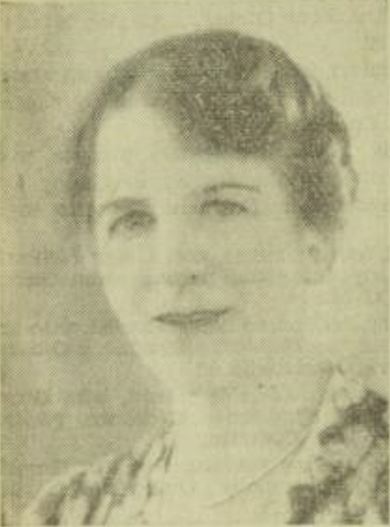
From the Wireless Weekly March 25 1938 News Talks – March, April – page 4
After thirty years in India, Miss Eleanor Rivett is now enjoying a holiday in Australia. In February, 1907, she was appointed principal of the United Missionary Girls’ High School in Calcuta. Under her guidance this school has grown steadily until today it is one of India’s greatest and outstanding schools. So striking has been Miss Rivett’s success in the handling of the education of young Indians, that she was some years ago called on to the Board of Advice on “Women’s Education in India.” She is now honorary secretary of this Board of Women’s Education, and also of the Bengal Women’s Education League.
In her work for Indian education, Miss Rivett has made a feature of handicrafts. She encouraged the revival of ancient Indian arts and crafts.
In one of the series of talks that Miss Rivett is shortly to broadcast over the national stations, she intends to explain some of these ancient Indian arts and crafts, and show how she uses them as one means of educating young India.
But it is not only of education that Miss Rivett can speak. In a series of broadcasts from the national stations commencing on Monday, March 28, at 7.40 p.m., E.S.T., and continued on Mondays, April 4 and 11, Miss Rivett will speak of “Modern India.”
What are the aims of young India? Does it want complete independence from the British Empire? Would it be satisfied with a political status such as is enjoyed by Australia and the other Dominions? Anyway, what chance would young India have of moulding the whole of this sub-continent into a united and prosperous nation? These are some of the questions that Miss Rivett will discuss in her series of talks under the general title, “India Moves Forward.”
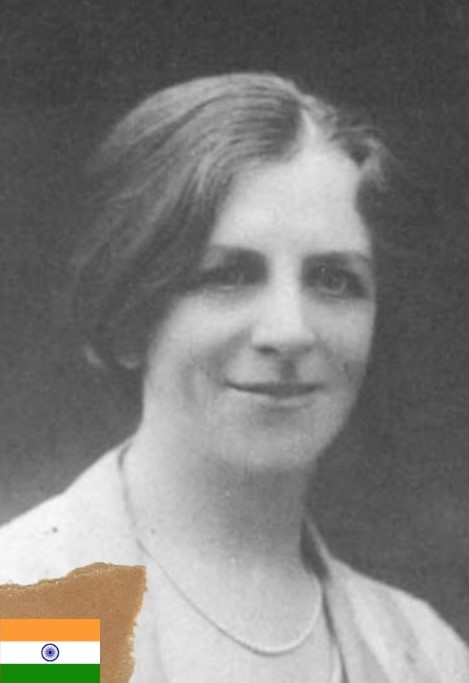
Day by Day with Bhagavan From the Diary of A. DEVARAJA MUDALIAR.
9/10/1946 This morning, Nagamma read out her Telugu account of the Jubilee celebrations which appeared in the journal Navodaya. Last evening a European lady and gentleman arrived here, with an introduction to Bhagavan from Mr. D.S. Sastri. About 2-30 p.m. today, the lady came and sat in the hall along with other ladies and had her legs stretched out in front of her and opposite Bhagavan. T.S.R. went to her and quietly told her that it was not quite good form here to sit like that before Bhagavan; and she folded her legs. Bhagavan was greatly annoyed at this and rebuked T.S.R. saying, “Why this mischief ? It is difficult for them to squat at all on the floor like us. Why should you make it more difficult by imposing further restrictions?” After saying this, Bhagavan added, “Now, my conscience pricks me that I am having my legs stretched out in front of all.” So saying, he drew in his legs, folded them and kept on like that till 4-45, when he rose as usual.
Day by Day with Bhagavan From the Diary of A. DEVARAJA MUDALIAR.
https://selfdefinition.org/ramana/Ramana-Maharshi-Day-by-Day-with-Bhagavan.pdf
11/10/1946 This evening, the Polish lady, Uma Devi, arrived with a party of 25 Polish people, mostly girls, from the Kolhapur State, where there is a refugee camp of about 5,000 Poles.
(Polish writer Wanda Dynowska (Uma Devi) lived in India from 1935 until her death in 1971 visited often.)
12/10/1946 This afternoon the Polish party entertained Bhagavan with their folk-songs and folk dances.
14/10/1946 This morning I told Bhagavan, “Last night, as desired by Uma Devi, I took some of the Polish party round the Hill and on the way explained to them the tradition about the Hill and the various gods of our religion. They said ‘How many gods? How can there be so many gods?’ Though I explained to them that the same God is worshipped in various aspects, etc., they said they could not understand it all.” Thereupon, Bhagavan suggested that they should peruse the book All is One which had been translated into English and asked me to find out if typed copies of the English translation were available for being given to them. I brought three copies from the Mauni. Bhagavan gave one to Uma Devi, one to the girls of the party and had the third in his hands. Meanwhile Mr. T.K.S. came there and asked for the third copy and Bhagavan gave it to him. Uma Devi said that she had finished her Polish translation of the Gita and that only her introduction and Sir Radhakrishnan’s foreword had to be written before the book could be sent to the press.
15/10/1946 This morning the Polish party left.

Souvenir photo from a month-long expedition across southern India organized by Wanda Dynowska (seated, centre). A group of twenty-five young people gave performances of Polish songs and national dances, while also learning about the culture, art, architecture and traditions of their host country. Their itinerary was Bangalore (today Bengaluru), Trinomalee /Trinomali (today Tiruvannamalai), Madras, Madurai, Tenkasi, Courtallam (today Kutralam), Trivandrum (today Thiruvananthapuram), Nagorkoil, Cape Comorin (today Kanyakumari), Mysore (today Mysuru).
Day by Day with Bhagavan From the Diary of A. DEVARAJA MUDALIAR.
https://selfdefinition.org/ramana/Ramana-Maharshi-Day-by-Day-with-Bhagavan.pdf
16/10/1946 This night, the above Dr. Roy took leave of Bhagavan, saying he was leaving the following morning. Mrs. Taleyarkhan also told Bhagavan that one Miss Boman, a Swiss lady who has been here for the last three days, would be leaving tomorrow, and Miss B. made her namaskarams and left. (This Miss B., it seems, has been in India for about eight years, at the head of the Baroda palace staff of servants. It seems she does not believe in God, but believes in social service. She has come here having heard of Bhagavan from Mrs. T. when the Maharani of Baroda was staying at Ooty last summer and Miss B. was in the Rani’s party. Before coming here she wrote to Mrs. T. “I am coming to see your God and hope I can make him mine too”, (or words to that effect).
Robert Adams (1928 – 1997) was an Advaita teacher from Manhattan, New York. As a child, he would often be visited at night by an old man who sat on the end of his bed. When he was about 14, he went to the library and passed by the philosophy section and saw a book on yoga masters. Not knowing what yoga was about he opened a book (Who am I? by Ramana Maharshi) and there was a picture of Ramana Maharshi, it was the same old man who had been appearing to him on the end of his bed.
Later he discovered that he had a siddhi power in so much that he could manifest what he wanted. In his early teens, he used that power by saying “God God God” which gave him a God experience, a kind of samadhi trance that never left him. At the age of 16, he often visited Christian mystic Joel S. Goldsmith in Manhattan, who became his first teacher, helping him to better understand his enlightenment. Goldsmith sent him on to Paramahansa Yogananda at the Self-Realization Fellowship in Encinitas, California. When he asked Yogananda if he was his guru, Yogananda said no, and that Ramana Maharshi was and that he should go to him as soon as possible.
He arrived in Ramanasramam in 1947 at the age of 18 and stayed until a few months before Ramana Maharshi’s passing. He had many conversations with the Maharshi about everyday things. Ramana Maharshi would often bring food to his room. Robert’s sojourns are not mentioned in any of the books compiled about the significant events of the ashram.
From 1950 Adams spent 17 years travelling around India and stayed with Nisargadatta Maharaj for 6 months, Anandamayi Ma, Neem Karoli Baba, Swami Ramdas, Swami Brahmananda ‘the Staff of God’ in Varanasi and others, but he never met anyone who exuded such compassion, such love, such bliss as Ramana Maharshi.
Swami Brahmananda was about 90 years old and had three disciples who had been with him for about 50 years. He was invited to sit by him, perhaps being the first Westerner to do so, he stayed for a few days listening to him say nothing. On the third day, he announced that his body was in pain, but he still had work to finish on this plane and was going to leave his body the next day at 3.00 pm and would take on the body of a younger person. He said that someone would slip on the street and crack his head and that he would take up that body. At 3.00 pm the next day he died while sitting in the lotus posture. Adams and the disciples heard a commotion outside, and sure enough, a young man had slipped on the street in the rain and hit his head. A crowd had gathered that included a doctor who pronounced him dead. All of a sudden, the young man got up and ran into the forest. No one ever heard of him again.
The Robert Adams wikipedia page says that none of his claims of visiting India or Ramana Maharshi’s ashram have ever been verified by anyone except himself. His claims of living in Arthur Osborne’s house have been questioned by Katya Osborne and Michael James and found to be likely untrue.
Ramana Maharshi’s grandnephew V. Ganesan, born in 1936, was with Ramana when he died. Ganesan has made a particular effort to contact and to get to know those who had deep spiritual experiences with Sri Ramana. Of Robert Adams he writes in The Human Gospel of Ramana Maharshi that Adams spent the three years at the ashram after meeting Bhagavan in a state of silence and quietude, never outwardly indulging himself in other people’s affairs. Inwardly, he was established in quietude during this period, and outwardly, in non-indulgence. There was no need for him to talk further to Bhagavan or to anyone else. That is why nobody knew Robert Adams, even though he stayed at Ramanashram for three years. Endeavouring to confirm Robert’s story, Ganesan says that one or two on the ashram said that there was a young mad fellow by the name of Robert Adams.
Face to Face with Sri Ramana Maharshi Compiled and Edited by Professor Laxmi Narain.
https://www.stillnessspeaks.com/wp-content/uploads/2016/07/Face_to_Face_with_Sri_Ramana_Maharshi.pdf
All Available Biographical Information about Robert Adams from People who Knew Him.


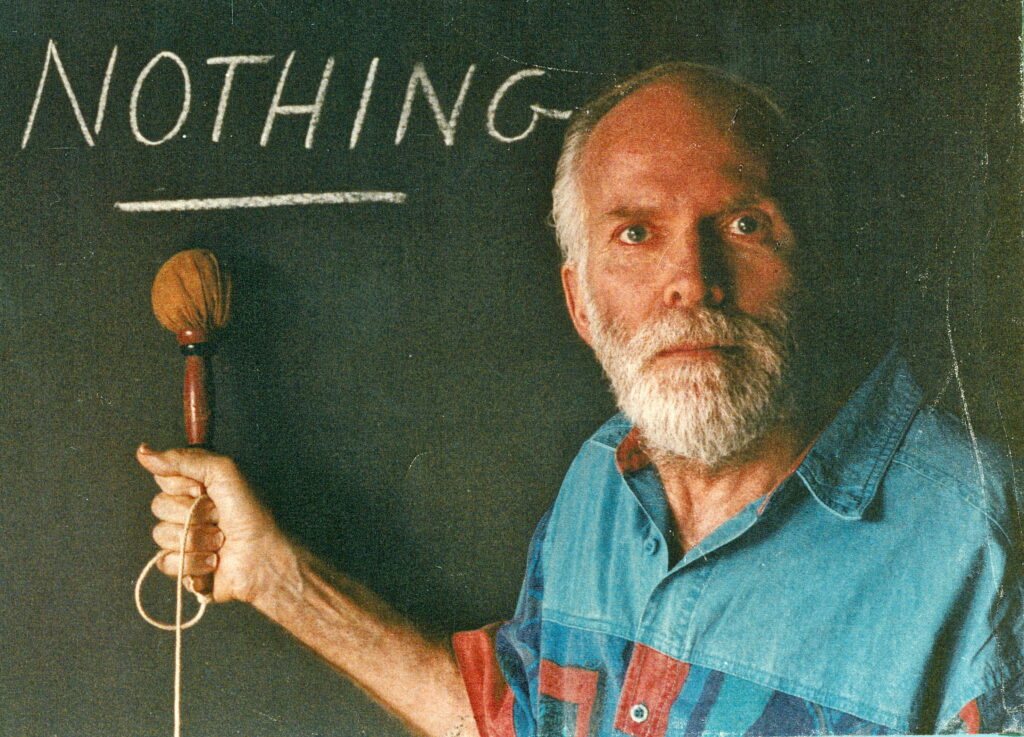
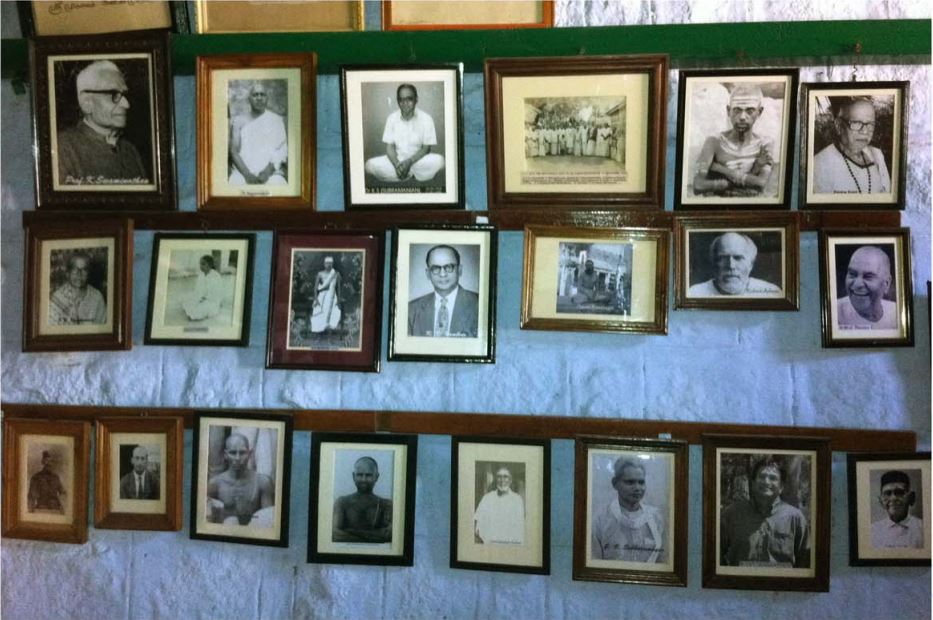

Silence is the Ultimate Reality by Robert Adams, Page 20
American Sam Rappold arrived on December 27th, 1947.
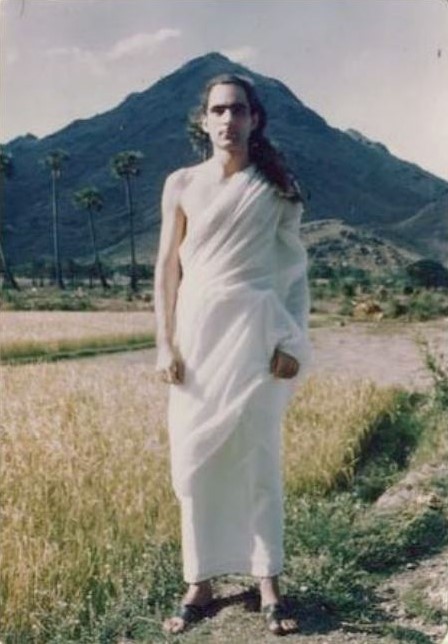
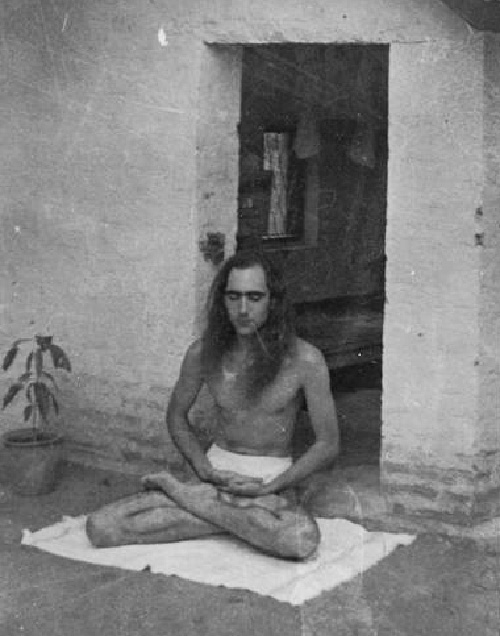
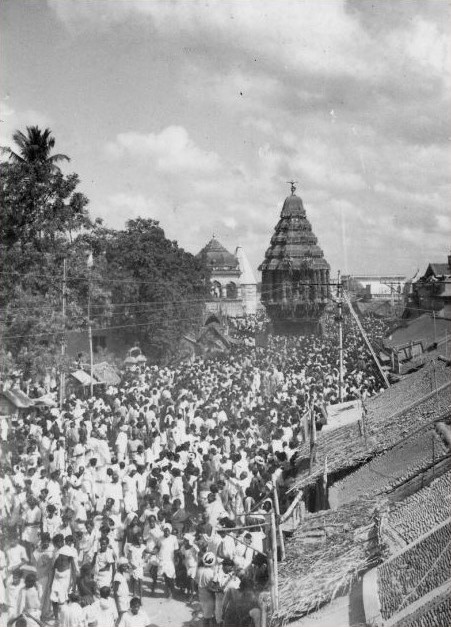
From Saranagati eNewsletter January 2025 Sam Rappold, an American sadhu, arrived at Sri Ramanasramam in late 1947. Immersing himself in meditation and dialogues with Bhagavan Ramana, he became an integral part of ashram life. Thelma Benn, a fellow devotee present at the time, noted Sam’s enigmatic presence in her diary.
A few unpublished interactions in the Hall, preserved by Thelma and others, were not included in the segment on Sam’s conversations with Bhagavan in the December issue. In this issue, Sam Rappold recalls the late 1940s in the Ashram.
Arrival at the Ashram
Sam’s first encounter with Bhagavan left an indelible impression. He recalled: When I first arrived at Sri Ramanasramam at 8am on 27th December 1947, I was fed at the Ashram dining hall. Breakfast for the day was just over. All then went with Ramana Maharshi to the pandal outside the old hall and sat for the day’s darshan. I went forward, near Maharshi’s couch, prostrated on the floor at his side and as my head touched the floor my legs disappeared. It was three days before I could feel the ground beneath me again.
The Gaze of the Master
A few weeks later, while sitting in the Hall, Rappold contemplated undertaking a pilgrimage to Tibet, inspired by a group of devotees who had just returned from such a journey. Reflecting on this desire while sitting in the Hall before Bhagavan, he experienced an unforgettable moment: Just then I felt Maharshi’s strong gaze upon me. Looking up, I saw him staring intently, his expression stern. Instantly, my resolve to go to Tibet dissolved, disappearing from my mind altogether. His inscrutable power instructed me in silence, binding me to his path. I gave no further thought to leaving his side. Such was the inscrutable power exercised by Maharshi and experienced by those dedicated to following his path.
Bhagavan’s Care and Compassion
One day, after returning from a trip into town, Rappold presented fruit as an offering to Bhagavan in the Jubilee pandal adjacent to the Old Hall. Bhagavan’s response revealed his deep concern for Sam’s wellbeing. Rappold writes:
After prostrating, I took a place alongside devotees sitting at Bhagavan’s feet. Bhagavan then said to T. P. Ramachandra, serving as a personal assistant at that hour, “Why does he bring me fruit. He needs it more than I do.”
I had been struggling to prepare proper meals, begrudging the time away from Bhagavan, and was living very simply. T. P. Ramachandra came over to me and said that someone had told Bhagavan I was living on raw cabbage and therefore, Bhagavan was concerned about my health. I then got up and went over to Bhagavan sitting on his couch and said: “Bhagavan, Subramanya is cooking for me now”. His expression turned to that of a pouting child. He said, “Oh, I didn’t know until now.” That simple expression melted my entire being. In that moment, his love bound me to him with bonds stronger than steel, with a simple heart-enrapturing expression, with a glowing smile, a penetrating look of profound clarity. All I could mumble at the moment from my heart was, “I’m sorry Bhagavan” and stumbled unsteadily to my sitting place again.
Words, Words, Words
Rappold was very enthusiastic about queries he made to Bhagavan in the Hall. But his enthusiasm for philosophical discussions sometimes bordered on verbosity. One day, after he had questioned Bhagavan at length about philosophies and their relevance for sadhana, questions which Bhagavan graciously and patiently answered, Bhagavan responded with gentle humour: “Words, words, words,” he said in English, signalling that it was time to end the discourse. Sam took the hint, deciding to remain silent before Bhagavan for the next several weeks. When he resumed asking questions, he did so with greater discernment.
The Mob Incident
On January 31, 1948, the day after Mahatma Gandhi’s assassination, civil unrest erupted across India. Tiruvannamalai was no exception. In town, a rumour spread that a Muslim hotel keeper upon hearing the news of Gandhi’s death commented: “If the Mahatma has been killed, I will pass out sweets.” It is unclear whether anyone had ever actually said this or not. But so great were the tensions that every opportunity became an excuse to visit vengeance upon the opposing faction.
One morning at about 10 am, Arthur Osborne, Rappold, and two other devotees were sitting alone with Bhagavan in the Old Hall along with two of Bhagavan’s attendants. Just then a shouting mob approached the Ashram. Sam vividly recounts the scene: The Maharshi was seated as usual on his couch and the steel barred windows were hastily shuttered from the inside while the two doors were barred. Swami Satchitananda and T.P. Ramachandra made ready to protect Bhagavan from any harm. As the howling mob beat on the barred doors, Bhagavan sat unperturbed on his couch, unconcerned. What a tremendous lesson this was to us.
Osborne and I, less enlightened, sprang into action to protect our guru, who would do nothing whatsoever to resist the multitude coming toward him. We seized two heavy straight-back oak chairs that might serve as clubs if circumstances demanded them. The door was only a few feet wide and thus no more than two persons could squeeze through at a time, so that two men armed with those powerful club-like chairs could well hold off a surging mob of fanatic frenzy. However, after perhaps two minutes of grim readiness, Osborne and I relaxed, lowering the chair-clubs as the mob moved on.
Later that day, Tiruvannamalai was ablaze. By 5pm, the Indian Army moved in and by 7pm, they imposed a curfew on the entire town and environs, which included Ramanasramam. The curfew lasted ten days.
A Troubled Devotee
In March 1948, a German Jewish woman named Lisa Ilsa Lowenstern arrived at Ramanasramam for a month-long holiday from her teaching in Bangalore. Thelma Benn discusses her in her biography, telling how they became friends, went many times on pradakshina together and once climbed the hill with other devotees in an all-day outing.
Ilsa was a Holocaust survivor. Though deeply drawn to Bhagavan, her profound psychological scars periodically manifested, particularly toward the end of her previous stay in 1946. At that time, Raja Iyer, who was in charge of Ashram accommodations, told Ilsa to leave the Ashram. Around this time, she was offered a teaching job in Bangalore. She took the letter to Bhagavan so that he could help her decide what to do. She got no verbal answer, but those who looked on said Bhagavan wanted her to go. Raja Iyer had once said that she was unbalanced and it turned out to be true. As the situation became more serious in April of 1948, Bhagavan asked Sam Rappold and Thelma Benn to care for her. Rappold reports the following:
So great was the psychic power of the Maharishi that minds with great weaknesses could not bear the pressure. Ilsa came from a Jewish family and had seen the Nazis kill her entire family and relatives. She and an aged Rabbi were the only ones spared. She was subject to bouts of depression, and now, as Bhagavan stated: “Whatever is inside will come out in sadhana, and the coming out process is full of surprises.”
In the spring of 1948, her mental episodes became unpredictable and often extreme. By the fourth week of her visit, she had become erratic and deeply distraught, sometimes stripping off her clothes and wandering naked. The police frequently intervened, detaining her in protective custody until arrangements could be made for medical care. Such interventions often involved bureaucratic delays and additional challenges for those who cared for her. Rappold writes: Daily I would report Ilsa’s welfare and progress to Bhagavan. On one occasion our efforts on Ilsa’s behalf reached an impasse and I went to Bhagavan and in an apologetic way explained the situation and became very frustrated. Bhagavan just waved with a downward sweep of his hand as if to say, ‘Well, that’s the way it is!’
Bhagavan displayed compassion toward Ilsa, understanding that her mental upheavals were part of the ‘process’ he described as inevitable during spiritual practice. Sam Rappold and Thelma Benn faced immense challenges in managing her erratic behaviour, which included violent outbursts. At times, she locked herself in her room and created a chaotic scene by mixing and scattering her possessions, including food, clothing, and household items. In one episode, she poured sugar, water, and other substances over her belongings, attracting hordes of ants. On another occasion, she appeared at the construction site of the Mother’s Shrine, dancing wildly on the seat designated for Bhagavan and shocking onlookers, including visiting dignitaries. Rappold and Thelma, along with other members of the Ashram community, worked tirelessly to help her often in coordination with local police and hospital authorities. Once, at the hospital, six men were required to feed her through a tube, as she believed her food was poisoned. Hospital staff were eager to discharge her, unable to manage her behaviour. On another occasion, when Ilsa became violent, Sam and Thelma had to transport her to the police station for protective detention. The journey was not without incident: Ilsa had to be shackled hand and foot while transported from the Ashram to the police station holding cell. We made the two mile journey in a two-wheeled cart drawn by a miniature pony. Thelma held Ilsa around the shoulders and I held her shackled legs. Somehow Ilsa got one arm loose from the arm-restraints, whirled around and socked Thelma in the mouth with her fist loosening one of her front teeth.
Ilsa’s periodic episodes of distress were challenging for us and other devotees, but Bhagavan’s compassion remained unwavering.
Ilsa’s story is both tragic and inspiring. It reflects the profound impact of trauma and grief on the human psyche and the challenges of integrating spiritual practice with deep psychological wounds. Yet it also illustrates the power of compassion, as Bhagavan and the Ashram community sought to provide support despite the immense difficulties. For Ilsa, the Ashram was both a sanctuary and a crucible, a place where her inner struggles were laid bare in the presence of a teacher whose compassion knew no bounds.
Bhagavan’s Humility
Late in 1949, Bhagavan’s condition became very frail owing to the cancer and his rheumatism. This happened after the inauguration of the new temple complex, which included the newly constructed Mother’s Shrine and the adjacent New Hall where Bhagavan was now giving darshan. Bhagavan walked with a cane and three attendants followed, one on each side and one behind. Shortly before the 11 am dinner bell rang, a crippled man on a small-sized mattress was brought in for darshan and was placed on the floor right next to Bhagavan’s stone couch: When the lunch bell rang, Bhagavan, with his usual promptness rubbed his rheumatic legs, got off the stone couch, stood and tried to walk out in the six-inch space remaining between the now-vacated mattress. He tottered as if about to fall. Devotees stood respectfully as usual for Bhagavan’s exit, but no one sought to remove the obstruction in his path. So, I, standing directly in front of the couch and perhaps six feet from the mattress, swooped over, gathered up the mattress in one quick motion. Bhagavan rebuked me on the spot with the following words, “Did you come all the way from California to make me comfortable?” Startled, I dropped the mattress like a hot potato, realizing the profound lesson in his words. Bhagavan then negotiated the very narrow passage, and unsteadily went out of the New Hall toward the dining hall, complaining how too much fuss was being made over him. Swami Satchidananda, the slight, short ascetic, walked behind Bhagavan, ever alert for a possible tumble or faltering step.
Rappold tells how the New Hall door sill at that time was a large stone slab perhaps 6” x 6” and had to be stepped over with due care: It was quite an obstacle for Bhagavan to cross, and so some loving devotees fashioned two fine thick pink cushions, which were placed on each side of the sill as Bhagavan approached and removed after he had passed. On several occasions with severity Bhagavan said, “That should not be put there for just one man”. He thus took extra pains not to step on the cushions but would step over the obstacles only with great difficulty. In time the cushions were removed and not put out again. Such was Bhagavan’s desire not to appear special or different from others even though in this state of physical debility.
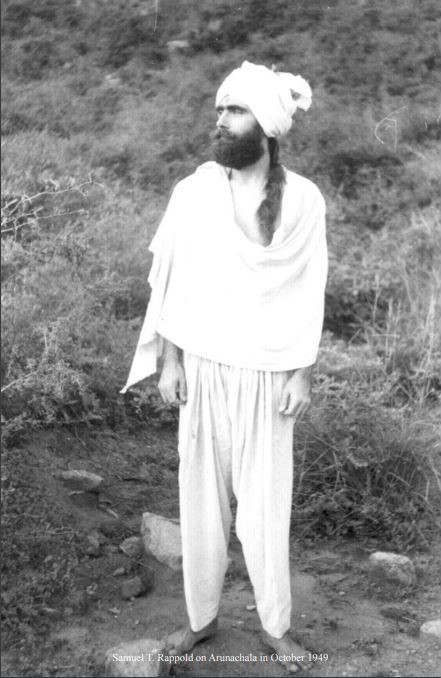
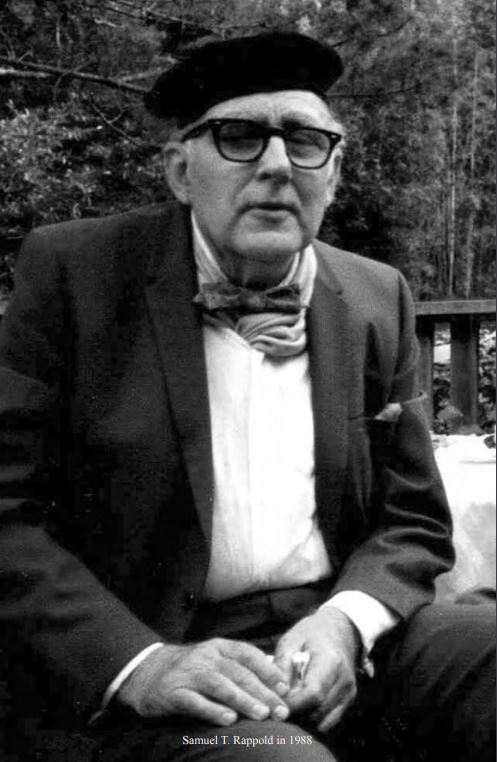
From Mountain Path October-December 2023. A Tribute to My Father
Samuel Rappold was an American who came to Tiruvannamalai on 27th December 1947 and finally left in January 1951. Later he married Thelma Dyke another devotee in residence whose diary was published in the Mountain Path about the last years of Bhagavan’s earthly life. Permission to publish the following article, a transcript of his conversations with Bhagavan has been kindly given by their son, Ray Rappold who was born Ramana Samuel Rappold in 1952.
In 1948, Sam from Chicago and Thelma from Ohio met at Ramana Ashram and experienced deep recognition and soul connection. After Bhagavan’s 1950 Mahasamadhi, they left the ashram and went their separate ways. A year later they married and moved to Chicago to live a spiritual life. My mother was 47 when I was born in 1952, and I was a surprise! This Tribute tells the story of how my father Sam came to the ashram and the profound impact Ramana Maharshi had on his life.
Samuel Thomas Rappold was born in Chicago in 1917. His father was a hardworking and highly successful real estate broker and lawyer. His mother was a nurse, and he became fascinated with Eastern thought after reading of the Buddha in the Encyclopædia Britannica at age 8. Sam loved the trumpet, ham radio, growing vegetables and fruits, and always followed his heart. As a teenager, he played trumpet in the school orchestra and ROTC band, and at night he performed in Al Capone’s speakeasies.
At the age of 19, he had a serious accident and lost his sight. He regained his sight two years later while living in the Northwoods of Wisconsin among Native Americans. He wanted to become a doctor, but eyesight weakness stopped him. Sam’s father financed Sam’s travels to the Far East and China in the 1930s. He studied Buddhism, Taoism, and brought his transcription of the Tao Te Ching to the US. During World War II, he was unable to serve in the military due to poor eyesight and lived at the Yogananda Ashram in the Los Angeles area.
While living with Yogananda, Sam learned about Ramana Maharshi. As soon as the travel ban was lifted after the war, he immediately went directly to Ramana’s ashram in India. He became devoted and sat with Bhagavan almost daily until his Mahāsamādhi. Bhagavan told many foreigners to return home, but not my father. He patiently answered Sam’s questions. Gradually Sam shed his delusions and aspirations, met my mother, and returned to Chicago to work in his father’s real estate office in 1951.
After I was born, he rode the train to and from Chicago every day from the quiet rural town of Wonder Lake where we lived. I watched and “helped” him in his basement workshop as he made his own ham radio gear. I picked up his design skills and developed a lifelong love of electronics.
Five years later, my parents felt shackled by family ties and Chicago consciousness, so we moved to Hawaii in 1959, just in time for the statehood parade. In 1962, my parents divorced, and my mother and I moved to San Francisco. My father always wanted to be a doctor, so he enrolled in chiropractic college in Los Angeles. Due to poor eyesight and part-time work to pay for his studies, it took him 6 years to complete a 4-year diploma.
Every summer I lived with him for a few weeks when he was in chiropractic college, and he took me to his classes. Every Sunday we went to the Theosophical Society in Los Angeles to hear Manly Hall and others. In 1969 he graduated, moved to San Francisco, and opened his own chiropractic office.
We saw each other more when he moved to San Francisco, and regularly had dinner. He loved Chinese and Mexican food. Living the simple life Ramana taught, he moved to Redway, a rural town of 3,000 near Eureka, California in 1976.
A classic country doctor, he saw patients in his home with his ham radio room. Everyone talked about his healing hands. Some people couldn’t pay, and he’d treat them anyway. He said: “These people are suffering, I can’t refuse them.” They loved him and brought him fruits, vegetables, chickens and whatever they could.
He walked several miles daily to stay in shape, and everyone knew him or saw him walking. In his last 6 years, he met and married the love of his life, a Mormon woman. She died 6 months before he did, and the Mormon ladies continued looking after my father.
In 1997, he was coming to live with us in Sebastopol, California. My wife was pregnant with our second child, and he reached a harmonious state of understanding with my mother. Over Christmas we all spent 10 days together.
When he walked around our house and yard, he was so happy and felt very content. We went back to Redway to pack. He died suddenly 4 days later of unknown causes.
I love my Father and send him Love. As a proud father, he loved me in his own way. It’s been over 25 years since Sam passed away, and I still hear some of the quotes he gave me as gifts. He quoted Ramana Maharshi: “Why are you crying, I’m not going anywhere.” Looking back at my father’s life during the time I knew him, he lived in accordance with this teaching.
CONVERSATIONS BETWEEN THE MAHARSHI (RAMANA MAHARSHI) AND SAMUEL T. RAPPOLD
By Samuel T. Rappold
Question: The book ‘Who Am I?’ says: The mind has a unique power whereby thoughts are generated. What is that power and where are its roots and origin?
Answer: It is the mind itself. Kill the mind completely and thoughts cannot arise, for without the mind there are no questions, no arising of self, world and Ishwara.
Question: Then Ishwara too, is only in the mind?
Answer: There is no thought of ‘another’ without the thought ‘me’.
Question: Then, I am the beginning and the end? That there is nothing save what is seen of the mind itself?
Answer: Yes, I am the beginning and the end. He who sees his Self, sees the Self of all, and does not heed the differences, which is duality.
Question: Does the wise man, the fully enlightened Sage think thoughts and have thoughts of his own?
Answer: Yes, the ONLY difference between the wise man and the fool is that in doing the same things – the Sage KNOWS who he is and what is happening and the fool does not.
Question: Then the ONLY difference between the wise man and the fool is that the Sage KNOWS and the fool does not?
Answer: Yes
Question: As Ishwara, is Brahman, also a creation of the mind?
Answer: Jiva, Ishwara, Brahman are all creations of the mind, maya. When the mind is still, there is Brahman. There can be no creation without the mind. Realisation is complete cessation of the mind, effected by vichara. Brahman is repose in Itself (abidance). It is not realised at some future time but ever is NOW. When the process of vichara reaches its culmination, it is seen that one has never been the mind, but THAT. The seer is in the world but not of it. Of that state it cannot be written, for publication is by sadhana with commentary by mounam. Terms are but attempts to name and describe conditions, and most have no meaning in Reality. All things are resolved in the Pure Mind. Maharshi’s way is to realise NOW what is and has ever been, ever-present. Hold fast to THAT – which does not move, sattva, and becomes subtle as the other and Clear. This is the Self – It will not appear in front of you. In sadhana put aside all sense of “I” – for you are THAT – and you, otherness and motion. Eternal persistence in THAT state achieves the goal. Be still and know that I AM God. All things are in the mind, yoga nidra, OM sounds, lights, samadhi, etc. Bhagawan commenting on the “word” said, “When a jnani speaks, it is the word of God.”
Question: Yogis say the word is the Nada.
Answer: “Nada, OM, Pranava – all are symbols of THAT which the jnani IS.”
Question: Then, I AM THAT? I am the beginning and the end?
Answer: Yes, for the jnani IS THAT!
Question: Bhagawan has said turiya, the 4th state is the abidance as the Heart and Turiyateeta, the 5th state follows. How is the turiyateeta brought about?
Answer: Turiya pertains only to the 3 states – of waking, dreaming and deep sleep – to the one who experiences them as successive states; as the changing pictures on the cinema screen. Turiyateeta is the screen which ever persists. You are THAT. BE it. It is the natural. Turiya and turiyateeta are the same, and there is really no 5th state. Terms are for explanation and philosophical convenience. Only for the ignorant are there the different states, for the jnani there is but his one, ever-present state, changeless, silent, Being, which cannot be divided. Jnani does not identify himself with the apparent changes.
Question: Is the intellect diminished or obliterated in THAT state?
Answer: No, being THAT does not mean being lunatic. The jnani, the Realised One, no longer HAS an intellect, but IS that and all things – which for HIM are merged in His Oneness, Being, and do not stand separately as his possessions or attributes. It is thought and individuality that keeps samsara going. Be still and know that I AM God; no, be still and know that I AM. I AM GOD is a thought. Kill the ever-arising ego, I-thought at its source and rise to more refined, higher spheres of consciousness.
Question: Is the love-experience of the mind?
Answer: Bhakti, jnana, are all the same in the Oneness. To the bhakta, THAT is love, to the jnani THAT is the Self, is bliss.
Question: What is the meaning of the word ‘kaivalya’?
Answer: Oneness. But even this term implies duality of some sort. THAT cannot be adequately described by all the words – mukti, etc. To say of It, unity, salvation, integration, etc. implies duality of some sort. It is beyond all duality.
Question: Does kaivalya mean the same as advaita?
Answer: Yes
Question: Bhagawan has said bliss and the self are identical. In Mandukyopanishad, it says – mind should not be allowed bliss of the samadhis.
Answer: Bliss is all the same. Samadhi which changes has 8 stages and is for the sadhaka, and is a necessary preliminary. Samadhi pertains to the mind. The Real Bliss is beyond these samadhis and perpetual.
Question: Will Bhagawan please tell us of the stages of samadhi?
Answer: Samadhi is one, but is said to have 6 stages. Two main divisions are savikalpa and nirvikalpa. Savikalpa is with effort, is with thought. Nirvikalpa is effortless, it is the boundless ocean, without thought. There are 4 stages of savikalpa and 2 of nirvikalpa.
Question: What is the place of prapatti (surrender) in the life of vichara?
Answer: Prapatti and vichara merge into Self-realisation. Vichara IS prapatti and vice-versa.
Question: Bhagawan has said ‘what is inside must come out’. Is what comes out to be allowed to fully rise and take hold of one?
Answer: The vasanas will come out in sadhana and are to be cut off by returning attention to the Source. There is no good in going down to their level. Hold fast to the Oneness.
Question: What is the relation of ego to prakrti (substance) and pralaya (dissolution)?
Answer: Ego arises from prakrti, all is dissolved in pralaya.
Question: What is the difference between one’s own individual nature and the vasanas that seem to arise?
Answer: They are the same. Without the vasanas there is no individuality, when they are obliterated there is nothing left but your Real nature. That is found by vichara.
Question: What is the most important thing to be gained from the spiritual life of meditation?
Answer: Why do you want to be spiritual and these other things and not just BE yourself as you are?
Question: Bhagawan has said: until realisation there must be 2 indispensable sadhanas – hold onto the self and reject the extraneous thoughts.
Answer: They are the same, abiding as the Pure Self.
Question: Is this subtle mind?
Answer: It is the collection of impressions from which the gross mind arises as a reflection. But there is no distinction, it is all mind and thus not really a reflection.
Question: Is the subtle mind feeling and the gross mind thought?
Answer: In a sense, yes. But they co-arise (exist) and function as mind and cannot exist separately. The cinema must have darkness and light projected in illusory forms for there to be cinema.
Question: Bhagawan has said that the mind has 2 aspects, Veiling and Projection, light or darkness. Is darkness Veiling and projection thought?
Answer: Yes, it is mind, it is not the Reality.
Question: How then to realise that Supreme reality?
Answer: Why do you call it Supreme? It is your Real Nature. There is really no realisation, there is only Being: that alone always persists by Itself when the mind ceases as in deep sleep or in samadhi; as Satchitananda, Existence, Consciousness, Bliss. That is the real ‘I’ and that is Bliss.
Question: Is that real ‘I’ what Bhagavan calls ‘I-I’?
Answer: Yes. Abide only AS yourself. Be not afraid of that state, you will not cease to exist, for it IS Existence. All existence means knowing, knowing is becoming, becoming is Being.
Question: How can this help one to love one’s neighbour?
Answer: There is no neighbour – ‘love your neighbour as yourself’. Self is Bliss, Love, God. One loves because one loves oneself.
Question: Answering the question ‘what is the effort to realise the Self?
Answer: The effort to realise the Self is the giving up of all other efforts.
Question: Bhagawan, what is Consciousness?
Answer: Awareness of what exists – of what IS.
Question: What is conscience?
Answer: It is mind, but pure mind, sattva. It is the purest state of mind bathed in purity. But still mind, an operation of mind. Without individuality, the ‘I’ thought, there is no mind. Conscience is the inner voice, the voice of Atman – an inner urge or idea, persisting when ego is annihilated. It is still of the relative plane, but is the purest form of relativity. But whatever is going on there, the Light remains unaffected.
Question: Is it dangerous to try to live the karma of another?
Answer: It is dangerous to try to live the karma of another. Just be yourself, as you are.
Question: What is fullness or perfection?
Answer: To remain without thought is fullness or perfection, Be still. Be not like the train passenger who, after getting on and being seated on the train (self) puts his luggage on his own lap, thus suffering discomfort. Put the luggage down on the train’s floor and sit at ease – the train carries the weight anyway. The wise man makes the sweetly sane adjustment to life and living. The teacher and teaching are only the beginning, each ultimately makes his own way and path.
CONVERSATIONS WITH SRI BHAGAVAN Sam Rappold https://www.sriramana.org/saranagati/December_2024/
Swiss Henri Hartung (1921 – 1988) first came in 1947 for ten days, while in Bombay he met a Brahmin who told him without astonishment “I was waiting for you, I have to escort you to the Maharshi.” Two days and two nights later they reached the ashram.
“Two days and two nights of train travel followed. While admiring the Indian landscape and especially the noisy and colorful scenes, which occurred during the stops, I tried to assess myself. Finally, I framed some ten questions that remained essential for me – the meaning of my presence on earth, what happens after death? Why? How? etc. I reached the Ashram.”
“During the next ten days, I shared the ritual life of the Ashram, sitting for hours in front of Sri Ramana in the meditation hall. On the day of my departure, precise answers to every one of the questions I had prepared were given to me, without my asking them. Sometimes through a few words written by himself, sometimes through answers to questions, sometimes through some shared domestic chores, especially in the kitchen, most often in silence: all this being a really subtle transmission of an exceptional spiritual reality.”
“Till his last day, the Maharshi will make it possible for his visitors from the next town or from a remote place, on foot and penniless or in luxurious cars, to see him, even to talk to him. They came to bow in front of the living incarnation of the divine reality in human form. He was there, amongst us, without ever showing any sort of ambition or a particle of pride. A smile of love and peace and the look which I feel while writing these lines can never be described in words.”
Thirty years after the first meeting, I am once again at Tiruvannamalai, with my wife. A pilgrimage, which goes to the depths of my soul, as it did thirty years ago in 1947. The Maharshi’s life serves as a concrete reference to our personal growth. He was the last link of a chain of wise and holy men whose origin is beyond time and whose influence gives meaning to our life, a harmony to our behavior and peace to our hearts.
Hartung was in India on business when he was approached by Raja Rao (1908 – 2006), an Indian writer in a café, who was consequently a disciple of Sri Atmananda (Krishna Menon, 1883 – 1959), yet suggested to Hartung that he go to see Sri Ramana Maharshi. Hartung’s encounter with Ramana Maharshi was decisive. Along with Paul Brunton (1898 – 1981) and Jean Herbert (1897 – 1980), Hartung became instrumental in making Sri Ramana Maharshi’s teachings known to the French speaking public. In 1977, Henri Hartung and his wife Sylvie Hartung, established an ashram in Switzerland named Centre de Rencontres Spirituelles et de Méditation (spiritual meeting and meditation centre), which also brought awareness of Ramana Maharshi’s teachings. While Hartung’s initial encounter with the Sage of Arunachala occurred in 1947, he returned thirty-years later in 1977 and then in 1988 to be once again at Ramanasramam and this was his final darshan.
Henri Hartung ran a Ramana Centre in Switzerland for many years. His French translation of Ulladu Naarpadu went into several editions. Influenced by French philosopher Rene Guenon, he authored Analogies of interest between Guenon and Ramana Maharshi.
Face to Face with Sri Ramana Maharshi Compiled and Edited by Professor Laxmi Narain.
https://www.stillnessspeaks.com/wp-content/uploads/2016/07/Face_to_Face_with_Sri_Ramana_Maharshi.pdf


Henri and Sylvie made a six day visit to the ashram in October 1977, where he writes in The Mountain Path January 1978 – “It was difficult for me to return to Sri Ramanasramam where Maharshi’s physical presence is now absent, exactly thirty years after I have had the rare good fortune of meeting Bhagavan. But it was quite necessary because my life has changed after that visit. Nevertheless I can write, now, that everything is perfect in the Ashram as ever.”
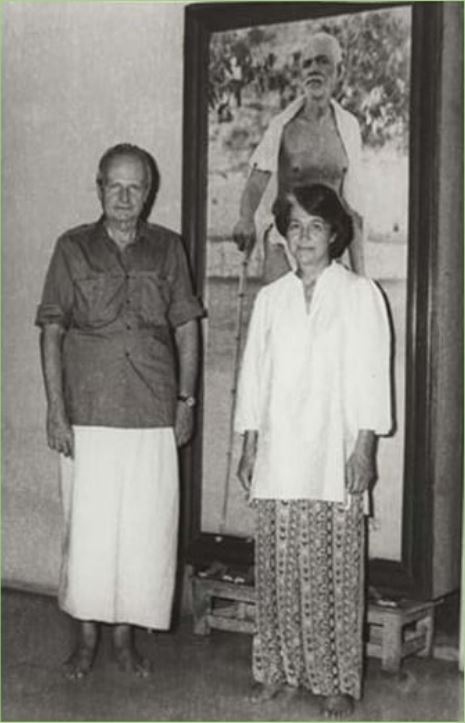
Day by Day with Bhagavan From the Diary of A. DEVARAJA MUDALIAR.
2/5/1947 In the afternoon, an European walked into the hall, sat in a corner and walked away after a few minutes. Bhagavan turned to me and asked me if I didn’t know him. I told Bhagavan I had seen him here before, but I had forgotten his name. He is a friend of Mr. McIver. Bhagavan said, “His name is Evelyn. His wife – don’t you know he married that Parsi girl who used to come and stay with Mrs. Taleyarkhan – has written to Viswanathan to look after her husband, saying he had come out of the hospital and that he is better now.”
Thelma Benn (Rappold) spent three years with Ramana Maharshi from 1948 at Sri Ramanasramam. She met her husband Sam Rappold (also an American) in Tiruvannamalai during those years. When she first met Sri Ramana, he said to her “You are what you are – accept it. When the time comes to give it up do it with grace.” At the ashram, she found her true home and teacher, it was as if she had lived several lifetimes in those few years that she was there with him. Thelma and Sam were married in Varanasi. A year after leaving India they had a baby boy whom they named Ramana Samuel. Thelma settled in California and passed away peacefully in 1998 aged 93. A friend brought her ashes to India and scattered them at one of her favourite places near Sri Ramanasramam.
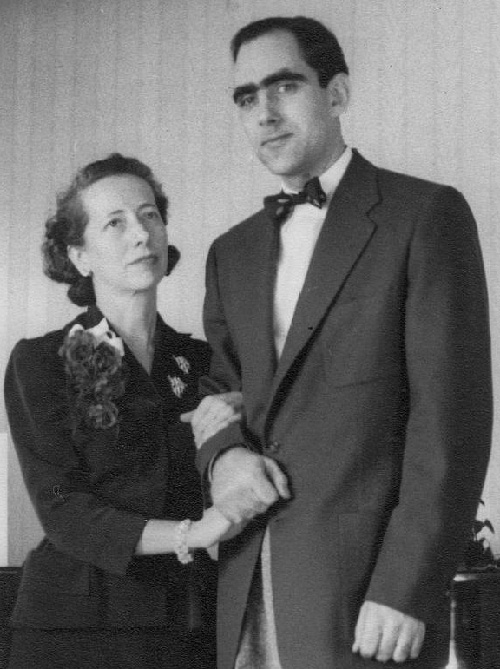
From the 2013 publication Thelma’s Diary 1935 by Thelma F. Dyke and Joyce M. Wiedie, the Glossary states that ‘Ramana Samuel Rappold – The only child of Thelma and Sam Rappold, named after their spiritual leader. In later years he changed his name to Ray. He is the father of Eric and Ella Rappold, Thelma’s grandchildren. He currently lives in Santa Rosa, California.
Face to Face with Sri Ramana Maharshi Compiled and Edited by Professor Laxmi Narain.
https://www.stillnessspeaks.com/wp-content/uploads/2016/07/Face_to_Face_with_Sri_Ramana_Maharshi.pdf

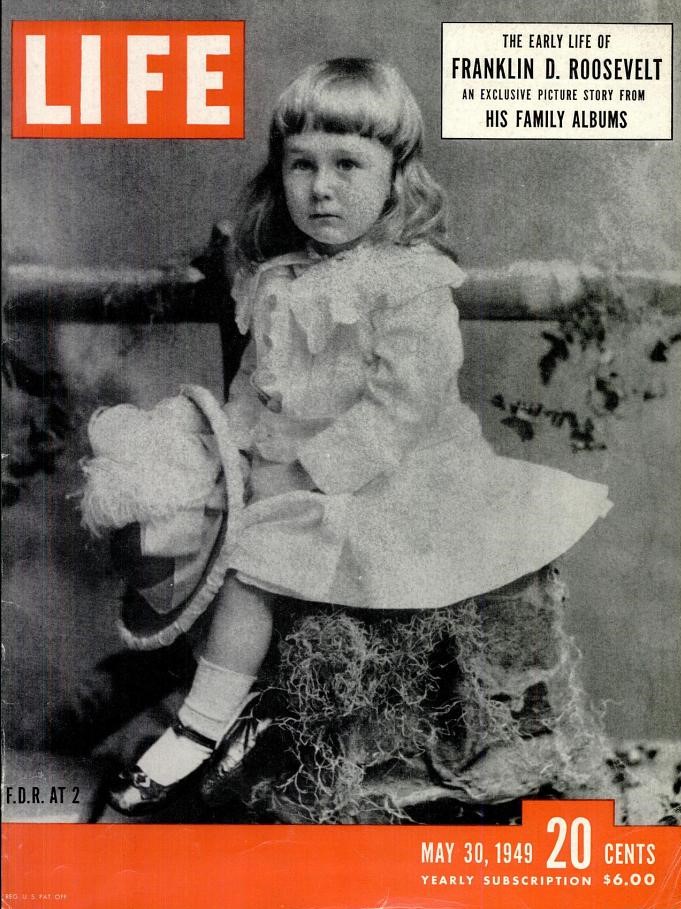
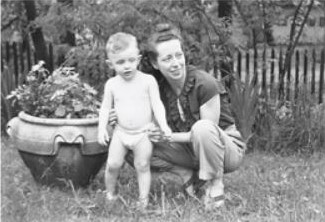
Thelma first visited India in September, 1935, with her sister Marge, arriving onboard the SS President Harrison, while on their 192 day round the world voyage. From Thelma’s Diary 1935 – Introduction – Thelma was fascinated and intrigued by what she believed to be life beyond the one known to her. At age twenty-nine, when this chronicle begins, she was looking for adventure and dreamed of traveling to places she’d only read about. Thelma’s Diary 1935 is an account in Thelma’s own words of the thoughts and travel adventures of two sisters that took them around the world.
After visiting Singapore and Penang, their next stop was India. After passing several small islands they entered Bombay’s harbour with its impressive buildings along the Apollo Bunder, the city’s pier. After lunch at the Taj Mahal, they witnessed the most gruesome sight they’d ever seen, the funeral of an Indian mother. Her body was on a pile of wood that was set on fire. India’s poor would save and save in the hope of having the luxury of a funeral like the one Thelma and Marge witnessed, but the smell of burning flesh was something the two never forgot. They were glad to move on to a more pleasant scene, the beautiful hanging gardens on Malabar Hill.
Thelma’s Dairy 1935 Chapter VIII India
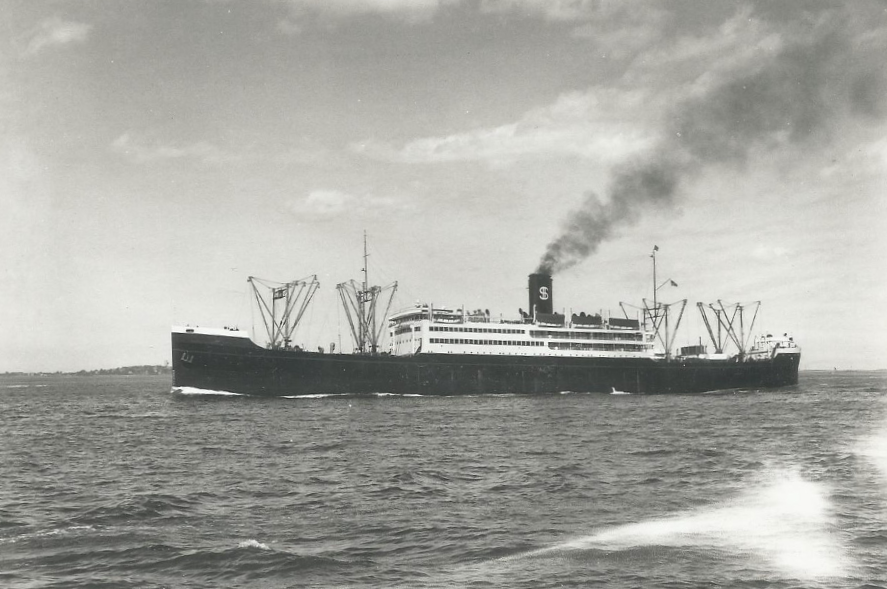
Dollar Steamship Lines/American Mail Line
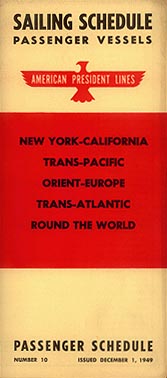
Sailings October 1935-August 1937 (issued January 24, 1936) for:
President Hoover, President Coolidge, President Cleveland, President Wilson, President Polk, President Monroe, President Lincoln, President Hayes, President Van Buren, President Taft, President Garfield, President Pierce, President Adams, President Harrison, President Johnson (Dollar Lines); President McKinley, President Grant, President Jefferson, President Jackson (American Mail Line)
Ports of call (Dollar Lines): Los Angeles, San Francisco, Honolulu, Yokohama, Kobe, Shanghai, Hong Kong, Manila; Boston, New York, Havana, Cristobal, Balboa, Los Angeles, San Francisco, Yokohama, Honolulu, Kobe, Shanghai, Hong Kong, Manila;
Boston, New York, Havana, Cristobal, Balboa, Los Angeles, San Francisco, Honolulu, Kobe, Shanghai, Hong Kong, Manila, Singapore, Penang, Colombo, Bombay, Suez, Port Said, Alexandria, Naples, Genoa, Marseilles
Ports of call (American Mail Line): Seattle, Victoria, Yokohama, Shimidzu, Nagoya, Kobe, Shanghai, Hong Kong, Manila
KACHIDOKI MARU was a Japanese Passenger Vessel of 10,509 tons. She was formerly the Wolverine State American Passenger Vessel later renamed PRESIDENT HARRISON in 1922 and operated for the US Shipping Board on the US Pacific coast/East coast of South America trade. Transferred to Dollar Steamship Lines 1923. Inaugurated first Round-the-World service for Dollar Lines January 5, 1924. Sold to Dollar Lines 1926. Transferred to APL 1938. In December 1941 the PRESIDENT HARRISON was chartered by the government to remove elements of the 4th Marines and Navy personnel from Shanghai. While on her way to Chinwangtao to embark other Marines, she was captured by the Japanese Navy off Shanghai on the 8th of December 1941. She was renamed KAKKO MARU and later renamed KACHIDOKI MARU. On the 12th of September 1944 she was sunk by torpedo from the American submarine USS Pampanito off Hainan while carrying 750 Allied prisoners of war.
On September 4th, 2,218 Australian and British prisoners of war, who had survived the building of the Death Railway, were marched the three miles from the Valley Road camp in Singapore to the docks to board the two twenty-three year old passenger/cargo ships RAKUYO MARU (9,500 tons) and the KACHIDOKI MARU. Both vessels were bound for Formosa. In the South China Sea, the twelve ship convoy, including three transports, two tankers and four escorting destroyers, was attacked by three American submarines, the Growler, Sealion and the Pampanito. The RAKUYO MARU and KACHIDOKI MARU were both sunk by torpedoes 300 miles west of Cape Bojeador, Luzon. A total of 1,144 British and Australian POW’s lost their lives. Among those lost were thirty-three men from HMAS Perth. All told there were 1,074 survivors, 141 were picked up by the three submarines. The USS Queenfish and USS Barb arrived later and in heavy seas rescued another thirty-two before heading for Saipan. The Japanese destroyers rescued 520 British prisoners from the KACHIDOKI MARU (488 POW´s and crew had died) and 277 British and Australians from the RAKUYO MARU, to again become Prisoners of War. Read more at wrecksite: https://www.wrecksite.eu/wreck.aspx?157924
British national Sangharakshita (Dennis Philip Edward Lingwood) and his Indian friend Satyapriya/Buddharakshita arrived in late November 1948, and stayed for six weeks. They stayed in the nearby Virupaksha Cave. Having been conscripted into the British Army and posted to India, at the end of the war Sangharakshita handed in his rifle, left the camp where he was stationed and deserted. In August 1947, at the age of twenty-two, Sangharakshita (1925 – 2018) took one of the most important steps of his life. He burned his identity papers, gave away all he had and, dressed in a saffron robe, he “went forward,” becoming a wandering ascetic with his friend, a Bengali novice Buddhist, the future Buddharakshita. He changed his name to Anagarika Dharmapriya. The two friends spent two years mainly in South India. Sometimes they stopped somewhere to meditate and study. At other times they wandered, living on alms for food and shelter. They spent fifteen months in 1947 – 48, in the Ramakrishna Mission centre at Muvattupuzha with the consent of Swami Tapasyananda and Swami Agamananda. They visited the ashrams of various Hindu masters, including Anandamayi, Swami Ramdas, and Ramana Maharshi. While in a cave near the ashram of Ramana Maharshi, the one who was not yet Sangharakshita had a vivid vision of Amitabha Buddha; he took this as confirmation that it was now time for him to seek ordination as a Buddhist monk. In May 1949 he became a novice monk, or sramanera, in a ceremony conducted by the Burmese monk, U Chandramani, who was then the most senior monk in India. It was then that he was given the name Sangharakshita (Pali: Sangharakkhita), which means “protected by the spiritual community.” Sangharakshita took full bhikkhu ordination the following year, with another Burmese bhikkhu, U Kawinda, as his preceptor (upādhyāya), and with the Ven. Jagdish Kashyap as his teacher (ācārya). He studied Pali, Abhidhamma, and Logic with Jagdish Kashyap at Benares (Varanasi) University. In 1950, at Kashyap’s suggestion, Sangharakshita moved to the hill town of Kalimpong close to the borders of India, Bhutan, Nepal. and Sikkim, and only a few miles from Tibet. Kalimpong was his base for 14 years until his return to England in 1966.
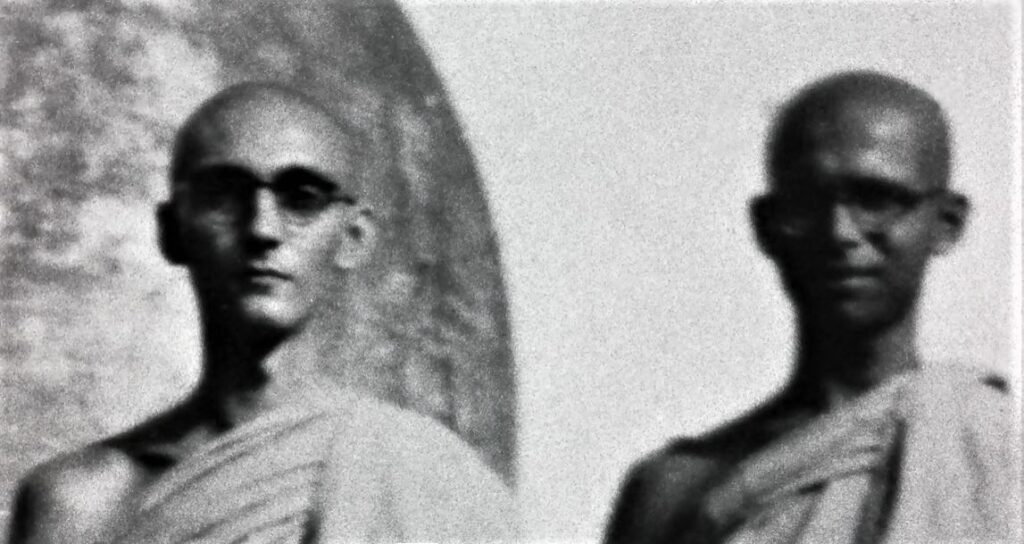
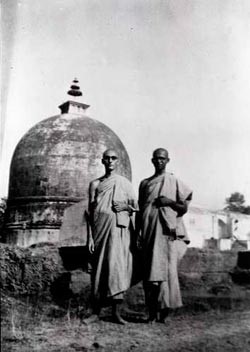
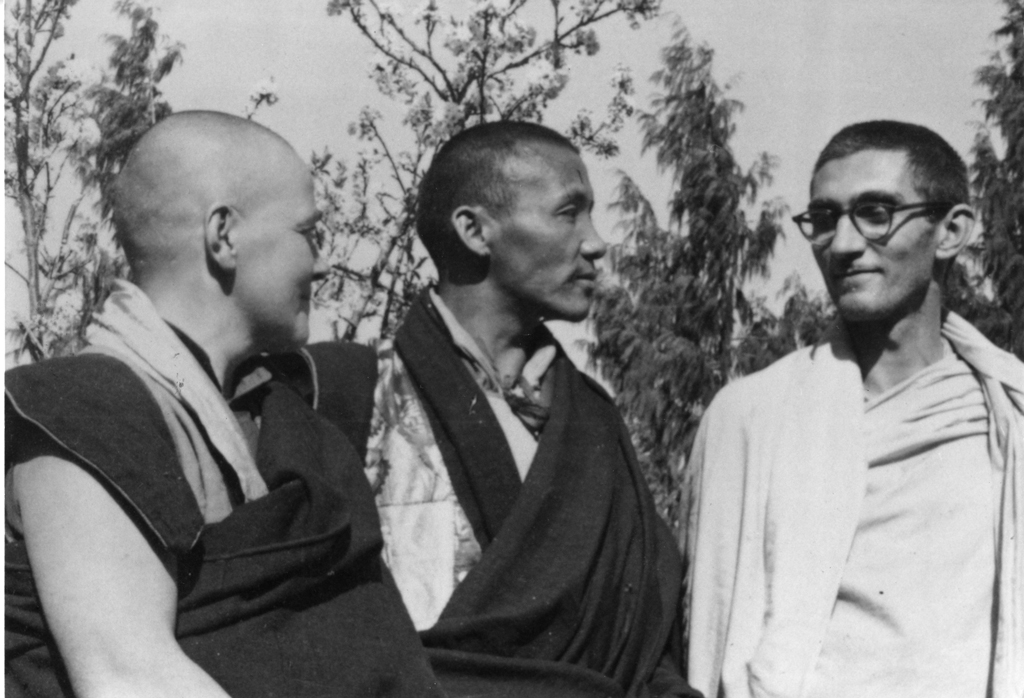

American journalist Winthrop Sargeant arrived in 1948 for Life Magazine’s Ramana Maharshi article published in 1949.
Arvind Lal writes – Sargeant was one of the three ‘Senior Writers’ of Life magazine in 1949, making him an influential writer of that time. Previously he had been with the New York Philharmonic Orchestra as a violinist, and then a music critic for Life magazine. He left Life magazine in 1949 to become a music critic and writer for The New Yorker. He died in 1986 at the age of 82. His encounter with Ramana Maharshi seems to have affected him more than he lets on in this article, because he subsequently took up the study of the Bhagavad Gita as a life-long quest. He learnt Sanskrit and even published his own translation in 751 pages, with the rather ponderous subtitle : The Bhagavad Gita – An interlinear translation from the Sanskrit, with word-for-word transliteration and translation, and complete grammatical commentary, as well as a readable prose translation and page-by-page vocabularies Doubleday, NY, 1979.
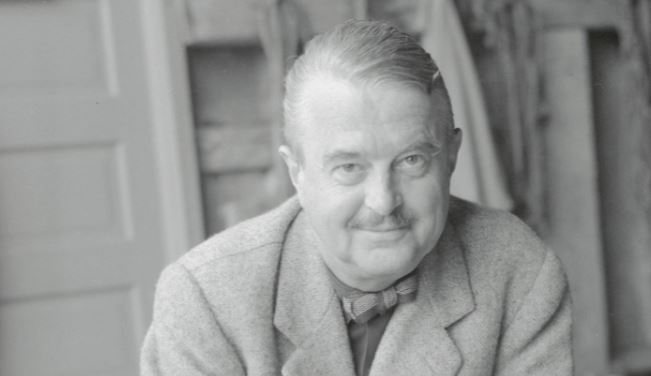

Download:
American Photographer Eliot Elisofon spent two weeks on the ashram in 1948 taking the photos for Life Magazine that were published in 1949. He made several trips to the ashram.
From the diary of American ashram resident and devottee Thelma Benn (later Rappold), who spent three years with Ramana Maharshi from February 1948 until Summer 1950.
About two months ago one of the top editors of Life Magazine, a Mr. Sargant, was here one afternoon. That particular afternoon Mrs. Groeger and I had gone to Major Chadwick’s to have Ramon, his servant, read our palms. While there Harindranath, the poet, called me out to meet Mr. Sargant. We talked for a long time about various topics of interest and then he went away. During the big celebration who should appear on the scene but Mr. Elisofon, Life Magazine’s no. 1 photographer to “shoot” the place, and so unless something unforeseen happens, Sri Ramanasramam should make Life Magazine sometime during the latter part of May.
Mr. Elisofon stayed in the same room Wally had when she first arrived which meant we were close neighbours. Madan Gopal, his host had me over on occasions to help entertain the American. He was here for four days and when he left, he gave me a few tins of miscellaneous articles from the good old USA. What a treat.

French photographer Henri Cartier-Bresson traveled throughout Asia as a press photographer made at least one visit, his first, to Sri Ramanasramam in 1948. His work took him to the funeral of Mahatma Gandhi in Delhi in 1948 and later to the Mahasamadhi of Sri Ramana Maharshi in April, 1950, arriving ten days before the Maharshi’s mahasamadhi.
He noted the following astronomical event which appeared in the night sky over the sacred mountain Arunachala as Ramana died: “I saw a shooting star with a luminous tail unlike any I had ever seen before moving slowly across the sky and reaching the top of Arunachala, the mountain, disappearing behind it. We immediately looked at our watches. It was 8:47. We raced to the ashram only to find that the master had passed in to Mahanirvana at that exact minute. Nor was this experience only documented by a select few … All the English and Tamil papers which arrived this morning from Madras referred to the meteor which had been seen in the sky over the entire state of Madras at 8:47 on the night of April 14 by a large number of people in different places. These eyewitnesses had been struck by its peculiar look and behavior.”
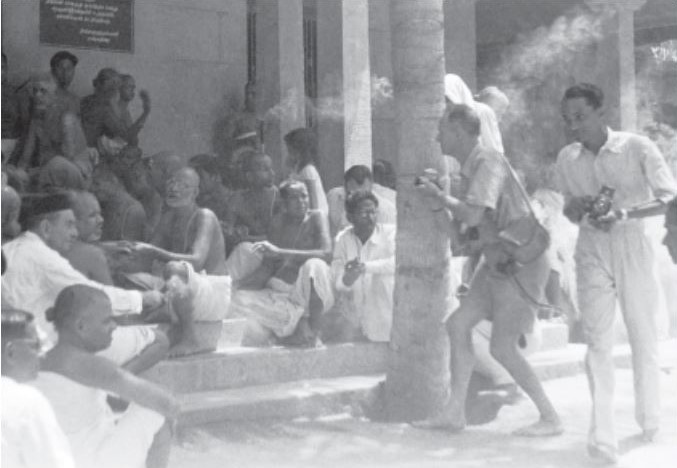
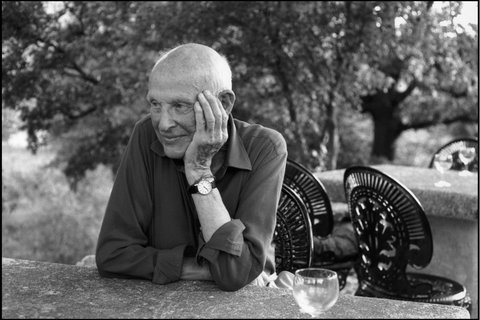
When Krishna Prem (Ronald Nixon) met Ramana Maharshi in 1948, Ramana remarked, “Krishna Prem is a rare combination of a jnani (person of Knowledge) and a bhakta (person of Devotion).” Ronald Henry Nixon (1898 – 1965) was a British spiritual aspirant who went to India in the early 20th century. Together with his spiritual teacher Sri Yashoda Mai (1882 – 1944), he founded the Mirtola Ashram, in Mirtola, near Almora.
Face to Face with Sri Ramana Maharshi Compiled and Edited by Professor Laxmi Narain.
https://www.stillnessspeaks.com/wp-content/uploads/2016/07/Face_to_Face_with_Sri_Ramana_Maharshi.pdf
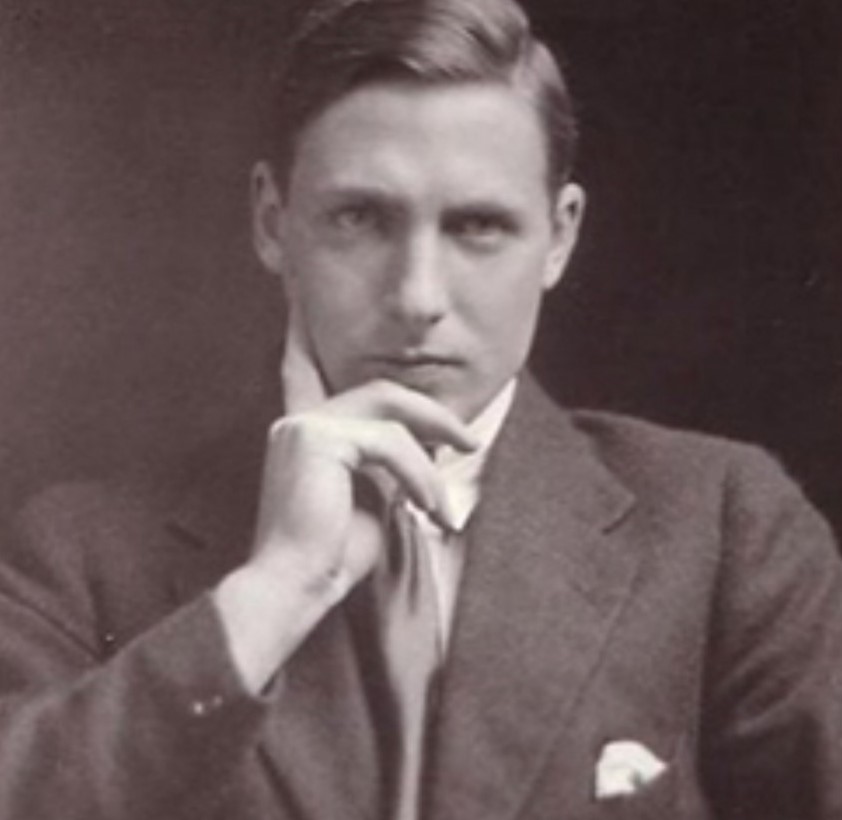


An old friend of Thelma Rappold, Mrs. Wally Groeger, arrived in India from Seattle via Colombo on 1st December 1948. Thelma went to Madras on the 2nd to meet her. From God Men and Con Men by Robert Carr, we learn that she stayed for nearly a year, before going on to meet Swami Ramdas and then later returning to the States.
Stanford University professor Frederic Spiegelberg visited Ramana Maharshi sometime between 1948 and 1949. Spiegelberg (1897 – 1994) visited India on a Rockefeller grant in 1948 and 49, where he had the darshan of Sri Aurobindo in Pondicherry and Ramana Maharshi, where he said that he discussed philosophy with the Maharshi. He also had extensive correspondence with Sivananda.
Spiegelberg was also involved in founding the Esalen Institute with former student Michael Murphy and Dick Price.
From The Nirvana Express by Mick Brown ~ Frederic Spiegelberg was a refugee from Nazi Germany who taught comparative religion at Stanford University in California in the 1950s. Born in 1897 in Hamburg, as a young theology student, Spiegelberg had experienced a moment of spontaneous realisation while walking in the countryside and musing on the poet Rilke, when he was suddenly filled with a consciousness of ‘something deep, something holy’ that he would describe as his ‘Higher self’. Coming upon a church, he was seized with the certainty that no single building, ideology or belief system could contain the feeling of holiness he was experiencing.
Spiegelberg’s experience was to be the catalyst for his studies of mystic experience in myriad religious traditions.
He went on to study with Carl Jung, and acquired an extensive knowledge of Sanskrit and Tibetan iconography. In 1937, Spiegelberg forced to give up his post as lecturer in religious history at the Universi of Dresden and flee from Germany. In London, he met the youthful Alan Watts, who would go on to become one of the foremost popularism of Zen Buddhism in the West. ‘He wore a hat with an exceedingly brim,’ Watts later wrote of Spiegelberg, ‘spoke English with a delicate German accent which always suggests a sense of authority and culture, and was propagating the theory that the highest form of religion was to transcend religion. He called it “the religion of non-religion phrase echoed in Rajneesh’s ‘religionless religiousness’).
Born in 1915, Watts had developed an interest in Buddhism while student at the King’s School in Canterbury (Somerset Maugham’s alma mater), striking up a correspondence with Christmas Humphreys, was head of what was then the London Buddhist Lodge and would later become the Buddhist Society. ‘We assumed from the tone and conntent of his letters that he was at least a senior master,’ Humphreys w remember. ‘In due course he turned up at a meeting, aged seventeen, a talked to us on Zen with the voice of authority.’
Two years later, Watts published his first book, The Spirit of Zen (1936) By the age of twenty, he was secretary of the London Buddhist Lodge publishing Spiegelberg’s first essay on the subject of ‘The Religion of Religion’ in the Buddhist Lodge journal, Buddhism in England, in 1938.
In late 1937, Spiegelberg left Britain for America (Watts would follow a year later), taking up a position as professor of comparative religion Stanford University in Palo Alto. He quickly earned a reputation as inspiring and highly popular teacher; a favourite device was to use popular comic strips and newspaper advertisements to illustrate metaphysical points. In 1949, he was awarded a Rockefeller Grant, and spent six months travelling in Tibet and India, where he visited the ashrams of both Ramana Maharshi and Sri Aurobindo, taking darshan on one of the rare occasion when Aurobindo emerged from seclusion in his room to be seen by his disciples.
Spiegelberg calculated that there were 2,200 people waiting in li to see the guru that afternoon. Aurobindo would be sitting in darshan just four hours. That would leave each devotee just six and a half seco standing (or kneeling) in front of the guru. Spiegelberg tried in vain to negotiate with an attendant for more time. The attendant pointed out that if he were paying for an X-ray exam, five seconds would be more than sufficient and any longer would burn him severely. Nonplussed by the ingenuity of this explanation, Spiegelberg took his place in front of the guru – and was duly ‘X-rayed’, as he would put it, down to the very ground of his being.22 He would later dedicate his 1951 book, Spiritual Practices of India, “To Sri Aurobindo, for having X-rayed the author for five seconds lasting an eternity and for thereby calling forth the atman within as the only reality which he notices in any visitor.’
Spiegelberg’s time in India deeply informed his course at Stanford, which moved from the Brahminical scriptures, through the Vedas and Upanishads, to Buddhism, St Paul and Plotinus, to Ramakrishna as the exemplar of the unity of world religions and Sri Aurobindo as the philosopher of the future.
His teachings galvanised one student in particular a 20-year-old named Michael Murphy. Born in 1930, the son of a lawyer, Murphy had grown up in Salinas, northern California, where his grandfather was the town’s much-loved doctor-whose accomplishments included bringing the infant John Steinbeck squawking into the world and supposedly saving his life when he had pneumonia. Steinbeck acknowledged him by naming the physician in his novel East of Eden ‘Dr Murphy’.
Murphy’s family were literate and cultured-H. L. Mencken, Jonathan Swift, George Bernard Shaw and Clarence Darrow were his father’s heroes and not particularly religious; but the young Murphy was an altar boy, and for a period in his adolescence thought that he might become an Episcopalian priest. The family expectation was that he should become a doctor like his grandfather, and he enrolled at Stanford as a pre-med student. It was curiosity that led him to one of Spiegelberg’s comparative religion classes. As Murphy remembers:
To be highly technical, I was blown away. He came out on the German, tall, handsome. And he stood there in utter silence in front of these 650 Stanford students, who were habitually and chronically restless, until it fell quiet. And then, in this very powerful voice-’Atman is Brahman’… That single sentence lit me up, and by the end of that lecture I knew I was going to stay on that course and that I would never be the same.
Spiegelberg’s accounts of his meetings with Ramana Maharshi and Sri Aurobindo would touch a particular chord in Murphy. As a high school student he had read everything by Somerset Maugham, and the book and film of The Razor’s Edge had left a deep impression on him. It was a thrilling experience to listen to someone who had actually met the figure that inspired the guru of Maugham’s book. ‘Spiegelberg said that Ramana Maharshi just radiated the most unbelievable radiance Murphy recalls,
He said he would sit there and kind of glow in the dark. Spiegelberg described vividly asking him, but what about evolution? What about the world? And Ramana Maharshi waved his hand in front of his face, as if a windscreen wiper was clearing the water off a car, and said ‘You, you Westerners, are in love with the shadows. Universe is all shadows…” Maya, you know…
Then Ramana Maharshi would always say, ‘Who is doing the asking?
He would always go back to that. Atman.
I would say Ramana Maharshi was deeply realised. I see him as a gold standard for integrity. But his world view was incomplete and when he says the world is all shadows I think he’s wrong.
More enthralling still to Murphy was Sri Aurobindo. At Spiegelberg’s suggestion, he read Aurobindo’s book The Life Divine (1939), in which the philosopher argued that the next step in evolution would be the development of a higher state of consciousness that Aurobindo called the ‘Supermind’. Aurobindo’s teaching about the evolution of consciousness and what Murphy described as ‘its power to transform flesh’, struck a deep chord: ‘For me, it’s a fact. And, as it were, I took vows that this is what I was going to spend the rest of my life furthering.’
Leaving university, Murphy served his obligatory spell in the army where he passed most of his tour of duty in Puerto Rico, reading meditating and playing baseball and his other great life passion – golf. On his discharge in 1955, he returned to Stanford and enrolled in a doctoral programme in the philosophy department. But he quickly grew unhappy with the course, and in 1956 he dropped out and, following Spiegelberg’s footsteps, set off for India -stopping off in Scotland on the way to play a round of golf at the famous Old Course at St Andrews.
Murphy made his way to Pondicherry and to what Sri Aurobindo h called his ‘laboratory of evolution’. Aurobindo had died six years earlier and the ashram was now under the sole guidance and control of the Mothe For Murphy, the ashram provided the perfect environment in which ‘anchor my practice’, as he put it. Granted the privilege of meditating in Aurobindo’s room, he lost consciousness of the outside world almost immediately, immersed in the lingering radiance od Aurobindo’s presence.
Murphy also threw himself into the ashram’s sporting and physical fitness regime, coaching swimming and basketball and setting up a softball team – ’Somebody had to do it. And it was a really good gig.’ But he grew to dislike the ‘cult-like’ features of the ashram, and the personality worship of Aurobindo and the Mother: ‘The Mother was a phenomenal human being. I would say she did not like some of this cult-like behaviour that grew up around the ashram – but it’s not just a matter of not encouraging it; you have to actively work against it. And that she did not do.’
After sixteen months in Pondicherry, Murphy returned to California. He took a part-time job as a bellhop in a hotel in Palo Alto, and spent every free hour meditating and working on a metaphysical adventure novel about a golfer-guru named Shivas Irons, set on a course based on the Old Course at St Andrews. Published in 1971, Golf in the Kingdom would go on to sell over a million copies and be translated into some twenty languages. In 1960, Murphy moved to San Francisco and took a room in a meditation centre called the Cultural Integration Fellowship, that had been set up by a follower of Sri Aurobindo named Haridas Chaudhuri. It was there he met Richard Price.
The son of Jewish immigrants from Lithuania, Price had been a student at Stanford at the same time as Murphy, although the two had never met. After graduating in 1952 with a BA in psychology, Price studied briefly at Harvard and spent time in the military before returning to Stanford, where he enrolled in a course taught by Spiegelberg on the Bhagavad Gita. Just as it had with Murphy, Spiegelberg’s passion lit a spark in Price. For the first time, he would later recall, he began to see religion as something more than ‘a system of deceit and the enforcement of social rules’.
At Spiegelberg’s suggestion, he began to take classes at the American Academy of Asian Studies, which Spiegelberg had founded, and where Alan Watts was now Dean and principal teacher. At the same time he immersed himself in the bohemian milieu of the North Beach, mixing with the Beat poets and writers including Lawrence Ferlinghetti, Allen Ginsberg and Gary Snyder.



Judith Tyberg, Haridas Chaudhuri who was sent to the US by Sri Aurobindo to work with these people, and Alan Watts.

friends of Eleanor Pauline Noye, Melva Cliff and Ananda (formerly Mabel) Jennings were at the ashram for some weeks in 1949.
In a letter from Eleanor Pauline Noye to Paul Brunton, she writes “I thank you again for your kind invitation to visit you before I left America. Ananda Jennings was there for a few weeks. Melva Cliff also, she left a couple of days before I arrived, she said she could not stand the heat, the {chaises} etc and wanted a Guru to teach her, in an Ashram some place up north; I have not heard from her.” https://www.pbarchives.org/archive/series/letter/
In a letter from Madeleine Goss to Paul Brunton, she writes “I have had real inspiration this winter from my contacts with Ananda Jennings – She has recently returned to India. (Perhaps you do not know – or know of her – She knows Brunton quite well – has spent some time in India, and lived at the Maharishee’s Ashrama – Has been devoting her entire life to the spiritual quest – this last winter alone “in retreat” at the Ojai-) I feel that she has gone very far – her personality radiates the most beautiful – joyous – peace and141 she has given me an understanding of Reality which has, I might almost say, transformed my life – Much of this, I know I owe to Brunton, for without his initial help I should not have been ready to realize the Truth – For there is only one Truth – and through whatever medium it comes it will be recognised by the heart that is ready to receive it.”
Ananda Jennings was the first Western woman to participate in an intensive Chan retreat in China. She was, in that sense, very much an outsider. But she had spent the previous two decades studying Buddhist doctrine and practice while living in coastal California, and she felt a special affinity with the Chan tradition. The reason she had come to China, she told the monks at Nanhua, was to study the sudden teachings of the Chan school, which the Indian Patriarch Bodhidharma had transmitted from India some 1,500 years earlier. After learning that those teachings still flourished in China, Jennings determined to visit the body and the monastery of the celebrated Sixth Ancestor and study under an awakened master of the Chan lineage. Like Bodhidharma, she felt called to enact a transmission of the dharma, not from India to China but from China to the United States. Jennings, who had converted from Christianity to Buddhism in her 30s, was thus a new kind of missionary. She devoted her life to spreading the Buddhist teachings in the Christian West.
At the age of 25, Mabel Hunt married Frank Dickinson Coop (1893–1976), a Christian theologian educated at Cambridge. It was around this time, she told the monks at Nanhua Monastery, that she began to take a serious interest in Buddhism. What initially drew her away from her husband’s and parents’ firm Christian faith is not entirely clear, but her move to California may have played some role. The Reverend Hunt, “worn by the strain of war and revolution,” left China in 1920 and eventually accepted a teaching position at the Baptist Theological Seminary in Los Angeles. Mabel settled in nearby Ojai. In the 1920s and 30s, the small, largely rural town of Ojai was becoming a centre of Hindu and Buddhist-inspired religious movements. The Happy Valley Foundation, established by Annie Besant (1847–1933) and Jiddu Krishnamurti (1895–1986), was based in Ojai, as was the Krotona Institute of Theosophy. Neither Theosophy nor the teachings of popular India gurus much impressed Mabel, however. She would later express her disappointment with the British Buddhist Lodge precisely because of its Theosophical origins, and she dismissed the Indian path of “Worship” as inferior to her preferred method of “letting undivided Mind flow through.” Soteriological differences aside, Mabel’s residence in Ojai put her in close proximity to several of the alternative, Eastern-inflected religious communities that were taking root in coastal California at that time.
Mabel’s turn towards Buddhism may have been a factor in her divorce from Coop several years later. As she explained to the author and self-styled mystic Paul Brunton, “The churches very sensibly advocate a normal married life for those on the religious stage. But, in this final stage, which we teach, one has to be alone.” It was therefore imperative, Mabel said, that “whoever wishes to follow this [Buddhist] teaching must give up everything and live like a hermit.” Following her divorce, she began a four-year period of isolation during which, according to her own account, she did not read, did not meet with anyone, did not eat in the evening, and did not “engage in any activity whatsoever.” She emerged from this period transformed. She would later say that after her retirement, “I found to my surprise that all my discoveries therein during meditation were recorded in the Buddhist Bible.” It was probably during this time that she adopted the name of Shakyamuni’s great disciple, Ananda. (How she acquired the surname Jennings, like many other details of her biography, remains a mystery.)


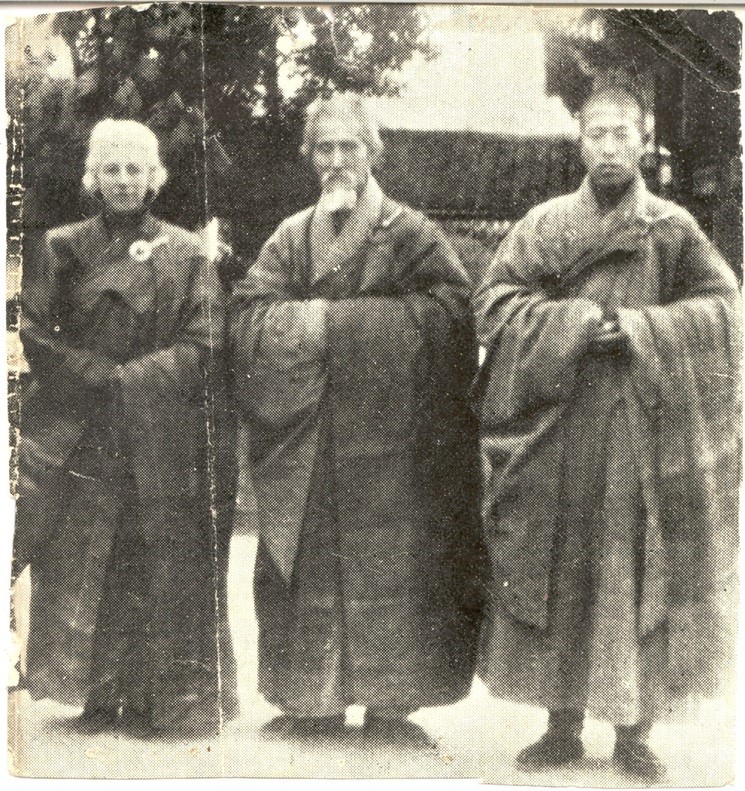
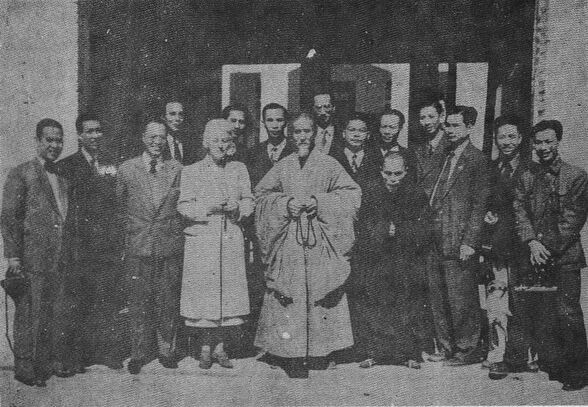
Peer Wertin / Per Westin (b. 1921 Stockholm, d. 1955 Madras, India) (Swami Ramanagiri) was a natural born western mystic who become a holy man in India and attained Moksha (liberation) under Ramana Maharshi.
In his youth he came across Swami Vivekananda’s Raja Yoga and found he had an immediate affinity with the subject matter, so much so that he began to develop yogic siddhis soon after beginning the practices. He came to India in 1945 on a two-year scholarship to study philosophy at Banaras Hindu University. While in Benares he met Alfred Sorensen (Sunyata) who invited him to stay in Almora. In early 1949 he went to Tiruvannamalai to meet Ramana Maharshi for the first time. He did self-enquiry intensively for forty days in Bhagavan’s presence and was rewarded, on Sivaratri day 1949, with a direct experience of the Self. He returned to Almora, and in March 1950 he had a premonition that Bhagavan was about to pass away. Swami Ramanagiri made it to Ramanasramam in time. On the black-and-white film that was taken around the time of Bhagavan’s passing away he can be seen paying his respects to the body of Bhagavan shortly before it was interred. There is a line of people filing past the body; he is the tall, thin foreigner with long hair (see the YouTube video below).

From Dancing with the Void : The Innerstandings of a Rare-born Mystic by Sunyata
Peer A Wertin was born to an aristocratic Swedish family in 1921. He became a wandering Pilgrim in India in 1945 and subsequently renounced hist property worth about eight million dollars. He was related to the king of Sweden. He practiced the “who am I” technique of Ramana Maharshi with intense zeal. He had a direct experience of the Self on Sivaratri day in 1949, after he had undertaken intensive yoga practice for 40 days in Bhagavan’s presence in the ashram in Tiruvannamalai. Ramana Maharshi gave him the name Ramanagiri. After eight years in the Himalayas Peer died, his body depleted by tuberculosis.
Peer A. Wertin, who was given the name of Ramana Giri by Maharshi Ramana in the mid-1940s, was often Wuji’s guest in his Himalayan sanctuary in Almora. After eight years of intense yogic sadhana, he flew beyond as a real and full fledged Paramahansa. Did Peer try too intensively and too immaturely? After eight years in Himalayan Bharat, Peer’s body had to go, the physical one depleted by tuberculosis and left behind for Sri Agni (God of Fire) to consume. But Peer himself had transcended body awareness, and he “came through” and “beyond.” One in a hundred thousand, or per- haps one in a million, comes to Realization like this. -Sunyata
It was on a sunny winter day in holy Benares in the early 1940s that I met Peer A. Wertin. He came gliding along by the shore where the washer men were busy splashing the dirty linen of respectable egojies. I was sharing my leftover food with donkey friends, as human friends would always give me too much to eat. Peer seemed touched by my donkey friendship. Birds of a feather and kindred asses flock together! Peer was in a body of some 25 summers-tall, dark-haired, and slim.’ He was studious-looking, civilized, respectable and balanced. His upper lip was slightly damaged by some explosion during military duty. I detected a slight stoop, but no sign of T.B. then or later when he visited me in the Himalayas.
We went together to see some sadhus, gurus and learned Pandits in the holy Benares. One Guru fastened on Peer the name “Sri Hanuman.” I was not much impressed by the competence of that Guru nor with the name he gave to Peer. Since Peer had been in holy Bharat only a brief while then, I felt he would eventually find his due path. “Step by step as thou goest, the Way will open unto thee.”
Peer came to my Himalayan retreat in the Spring when the heat came upon the plains. He stayed in my upper Sunya cave on the hill’s crest. It had vast scenic views and a vaster expanse of silence. He imbibed the gracious solitude in the pure, Krishna blue akasha realm, while Paramhansa wings grew and unfurled. He had the psychological urge towards stark openness and nude- ness. It was the need of being natural, without the rags of ego deceit, artificial respectability or artistic hiding. In this purity, the mental fig leaves become positively indecent or a kind of vulgar prudery.
Peer felt right in that Himalayan setting with nature, with books and a rich inner life. In the outer play, there was the singing self-radiant Silence, the winds in the pines below, and the crescending of Aums. I left Peer lovely alone except for an occasional service and chat. Sometimes we played naturally, nakedly together raking pine needles or cutting grass or wood-all part of our Himalayan contemplation.
Peer Wertin was awarded a two-year scholarship in India to study religious and philosophical lore, but he renounced it all when he took to yoga and intensive Self inquiry. I had introduced him to Maharshi Ramana in Tiruvannamalai. In and through Maharshi, he eventually came to full “awakening,” conscious “Self awareness” or “Advaita experiencing.” “Hanuman,” the name given to him in Varanasi, dropped off and “Ramana Giri,” conferred on him by Ramana Maharshi, emerged. Comparisons are odious, yet Maharshi Ramana is Himalayan to many current molehills and tinpot, clap- trap gurus. Peer was blessed in Maharshi’s grace and sahaja recognition.
When I met him first, I asserted nothing. Himalaya and Sunyata have no need to assert. I could sense in him a certain Swedish occultism and an intense longing to realize the Truth. Ramanagiri later came through an ancient road, a homeward way, frequented by the wholly awakened ones. Here all mental concepts and ideals vanish. Only awareness remains, bereft of all theories and ideal abstractions. It is the serene state of exalted calm in absolute Silence. It has been called nirvana or turiya or sunya. Ramanagiri was in this state of “advaita experiencing.” I did pranam (salutation) to Ramanagiri in glad homage, in karuna love and in Himalayan ananda gratitude. Upon leaving my place, he went on a pilgrimage. His “Jiva Yatra” (soul’s journey) was lived mostly in South India, by seashores, in jungles and at the grail glowing, holy mountain Arunachala.
A few years later when he was still in his 30s, Ramanagiri left his body. He is deified and worshiped in a shrine or small temple on the seashore near Madras. Ramanagiri was in my Sunya cave in Almora and he is still here. Blessed be the name Sri Ramana Giri.
The following letter received by me was one of Peer’s last:
Dearest Sunya,
In this letter I must tell you that I have sailed away. I have sailed to a far-off place, a place which cannot be described by words. To describe it is to pollute it. The steamer on which I sailed is a very powerful one, but it rolls hard in the sea if the weather is stormy. The place is called by many names, but still no name can cover its Reality. Some used to call the place Nirvakalpa, others Satchitananda or Nirgun Brahman – some call it God or Self, others call it Pure Consciousness, or the ego- less state. To describe it is to put up a big wall before it. The name of the Steamer is Mind. With the help of Prana, one reaches the place that for the jiva seems so far away, and really speaking, is nearer than one’s own breath. If the sense weather is stormy, the steamer will roll badly in the samsaric ocean. By now, you must understand the art of my sailing and why I have been so silent.
Let me tell you what happened and why I have been so silent. The same day as I was going back to North India, I visited the Theosophical library at Adyar, and while walking in the garden, Shri Bhagwan Ramana Maharshi appeared before me. He asked me to follow him. I went along the seacoast to a little place where I sat down for meditation, when there Sri Bhagavan’s voice told me that my only duty (Dharma) from now onwards was the Self. Further, he gave me some upadesh [spiritual instruction] which I followed for some days. One night-between 12 and 2-Kundalini was aroused to Sahasrara and the jiva merged into the Self. On account of the sound Om from the waves of the sea, I was brought back to body awareness; other- wise, I would have left my body because in that state there is no one to come back-and no one to make any effort. After having regained body consciousness, I discovered that I had lost all my memory.
All events before the time of Sri Bhagavan’s appearance in the garden had gone out of my mind. Friends who had been very close to me looked like strangers. People whom I thought that I had never met before came and told me that we had met in Madras only a few days before. Everyone and every- thing looked so new and strange and unreal. Now I am getting back my memory, but mostly recollections connected with spiritual experiences and deep love. That is why I am writing to you, because those who are near my heart turn up again in this mind, which is so very different from the previous one.
The village people here have built a little. hut for me, but there is no post office in this little fishing village, the name of which I do not even know, so I cannot give you any address yet. I don’t think any postman will take the trouble to come down to the sandy beach, but I shall let you know later.
With all my love – Ramanagiri in Him.
Per Westin (Swami Ramanagiri) : The True Story by Ulf O, MA in Religious History, Sweden
https://medium.com/@ulfode/per-westin-swami-ramanagiri-2c4e1f6150ef
Polish Mystic and author of spiritual, mystical and esoteric subjects Mieczyslaw Demetriusz Sudowski (Mouni Sadhu) stayed on the ashram for a few months in 1949. His experiences there are beautifully described in the first book of his Mystic Trilogy entitled In Days of Great Peace.
www.mounisadhu.com
He married Catharine Gunt in 1936, who was killed in a bomb-attack at Wilno Poland during the German invasion, September 1939. He had no children. By the same source, Mieczyslaw Sudowski seems to have fought in the Polish army and was taken as a prisoner of war to the USSR (Sept.18,1939 to Nov.27,1939) and subsequently Germany (Nov.28,1939 to Jan.12,1945). Upon liberation he was moved to France and changed his name to Michael Sadau. He worked there for the US Army until November15,1946. On December 01,1946 he relocated to Brazil were he wrote his first book Quem Sou Eu?. He immigrated to Australia in June 1948. He changed his name to Mouni Sadhu after staying with Ramana Maharshi in 1949. An electrical mechanic by trade, a member of the Australian Society of Authors (his literary heirs) and very fond of cats according a friend, Miss Lapa.

Mouni Sadhu was definitely Catholic and his funeral was held at a Catholic church in Melbourne, Australia. The Springvale Cemetery in Melbourne is a beautiful botanical garden, with the vast area of cemetery laid out in sections of different faiths. Mouni Sadhu was cremated and the memorial here is a bronze plate with a niche containing his ashes.
Face to Face with Sri Ramana Maharshi Compiled and Edited by Professor Laxmi Narain.
https://www.stillnessspeaks.com/wp-content/uploads/2016/07/Face_to_Face_with_Sri_Ramana_Maharshi.pdf
Wikipedia: https://en.wikipedia.org/wiki/Mouni_Sadhu
Website: http://www.mounisadhu.com/
Mouni Sadhu was troubled by events at Sri Ramana Maharshi’s ashram, his letter to Thomas Merton in 1965 is reproduced below. Merton may be the most prominent Christian writer of the 20th century. He was a mystic writer, and he received a little pushback from traditional Catholics because he was close with men of all faiths and his writings reflected it. He lived alone in a little shed at the Abbey of Gethsemani in Kentucky and wrote many books, including his autobiography, the best-selling The Seven Storey Mountain. He was in Thailand visiting the Dalai Lama just weeks before he died in 1968. He was also very good friends with the Vietnamese Zen Buddhist monk and author Thích Nhất Hạnh. Merton was once an atheist and became a Catholic priest after attending Oxford. He became a priest after going through what he called his spiritual experience. The title of his autobiography is taken from Dante’s Inferno, which is the classic 13th century poet’s story of climbing the Seven Deadly Sins and rising out of hell to purgatory and finally up to heaven.
Rev. Father Thomas Merton. Abbey of Gethsemani, Trappist, Kentucky, U.S.A.
Reverend Father,
Please pardon me for writing to you without knowing you personally, but I have read a quotation from your letter to the editor of a South Indian quarterly – The Mountain Path and have also been informed of the use that certain people try to make of it.
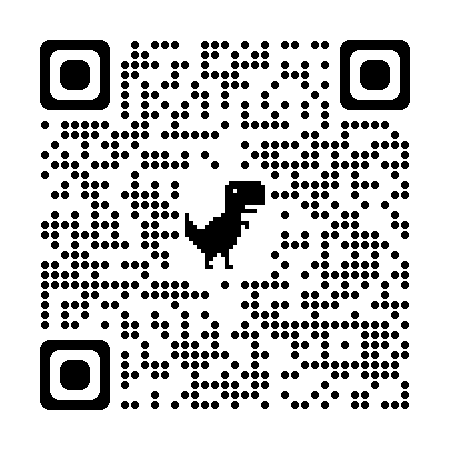
It so happens, that I too am a writer on psychological and spiritual themes (so far, six of my books have been published by leading publishers in both the U.K. and U.S.A.) and am Catholic born and bred. I have always been interested in the spiritual development of Man and have sought for it along many paths. In 1945, I encountered and studied the philosophy of the contemporary Indian saint and sage – Ramana Maharshi, and in 1949, I received an invitation to visit his ashram for several months, in order to obtain first-hand knowledge of him.
I found a saintly and extremely wise man, simple as he was, without any traces of egoism or pride, or even the desire to ‘convert’ anyone. It was his powerful spiritual radiation which attracted a man to him.
The Prior of the St Vincent de Paul Monastery (Headquarters at Rue de Sevres), where I spent a long retreat before leaving Europe in 1946, and who knew of my interest in Maharshi – as I did not hide anything – told me, that the Catholic religion does not say that there is no salvation apart from it. He also went on to say that even people who know nothing about Christ may be saved, if they have led a pure life and been devoted to the Supreme Being.
And I found full confirmation of this when I saw the Maharshi, seeing in him many features common to our Saints, especially certain ones whom I revere like St. Jean de Vianney (Cure d’Ars) and St Francis of Assisi.
The Maharshi was very gracious to me and it was in his presence that my love and understanding of Christ grew far beyond the admiration I had always had since my early childhood for the Redeemer, Who died for us on the Cross. The influence of the Indian Sage was so great, that I was told by an intellectual Catholic couple, that when they prayed to Christ while sitting at the feet of the Maharshi, they had the best prayers of their lives.
I have collected all his original teachings and writings, published during his lifetime, which he himself perused and corrected before they were printed by the ashram’s ruler (his brother). Therefore there cannot be any doubts about their authenticity and truthfulness. But Sri Maharshi was not so happy about his place of residence, surrounded as he was, mostly by fanatical Hindus and neurotic Europeans and Americans, and once he even said that if he left and settled in any other place, people would still build another ‘ashram’ around him. So he remained there until his death at Tiruvannamalai. What I could foresee, judging from the attitude of the inmates and many undiscriminating visitors, happened after his departure.
They try to deify the Maharshi, putting him above Christ and Buddha, ascribing sayings to him which he never pronounced, and changing what he said, for, under the present corruption of Eastern life, nobody can say what is truth and what is not, unless one takes the trouble to compare everything with the original texts, printed before 1950 (when the Maharshi died). However, I personally do just that.
On returning to Western life in the autumn of 1949, I started writing about what I had received from the Maharshi’s spiritual message. He was a firm admirer of Christ, and for me his words about Him are the most beautiful and intuitional I have read (see page 143 of the enclosed book). Mr. F.H. Humphreys, a former Deputy Commissioner of Police at Vellor in 1911, who became a disciple of the Maharshi, described his experiences in a world known report (also printed in Life and Teachings of Ramana Maharshi, 1936) and a few years later became a Catholic monk in England. Mr. P. Brunton, who wrote the first book about the Sage (A Search in Secret India) also gave an account of his experiences in it. Now, the son of the late Swamy Niranjananda (brother of the Maharshi) a Mr. Venkataraman, has taken possession of the whole property, including the buildings, of the former ashram, as if the wealth collected by his father from the offerings to Maharshi, was not sufficient for the whole of their very large family. He now concentrates on getting new sources of income, one of them being the quarterly The Mountain Path edited by A. Osborne, a retired school master from Calcutta, who is married to a Polish Jewess and dominated by her. She has not tried to conceal her hatred for Christ (even her children have objected about her attitude) and Christianity in general. O. and V. started to ‘edit’ Maharshi’s teachings and sayings in this way, and in his “Talks” (published shortly after his death and written by and eminent disciple and honest man), Venkataraman inserted the alleged saying of the Maharshi, that “Christ and Buddha were only second class teachers.” I have a copy of this first edition.
When I contacted the venerable author (then in Calcutta) and objected about such an impossible quotation, he immediately denied authorship of such a nonsensical saying and wrote to Venkataraman (sending Me a copy of his letter) enquiring as to why he had added this unauthentic sentence, and demanding its deletion from any subsequent editions of his large work (3 volumes), which consequently were later cleansed of the untruthful words.
But Venkataraman and Osborne have never forgiven me for such ‘interference,’ which was done because of widespread indignation among readers of the book here, who drew my attention to the matter.
With the passing of the years, the deformation of the Maharshi’s saysing, etc. has gone further, culminating in Osborne’s ‘edited’ Teachings of Ramana Maharshi, which you know. A large percentage of the texts are ‘over-edited’ and changed in the direction desired by Osborne and Co. and are often inconsistent with the original authentic works of and about Maharshi, which were accepted by him and which express his real teaching by himself. Of course, this can be unbeatably proved.
They never quote Maharshi’s saying about Christ and his admiration for our Lord, and in the Series of the silly “Sagittarius” articles in The Mountain Path and many others, one can easily find the subtle and persistent effort to minimize and ridicule the Saviour.
It is a well-known fact, that in general, middle class Hindus are inimical to Christianity, although the true intelligentsia are not. But the latter do not co-operate with the former ashram’s sectarian activities.
I am also enclosing a recent review, written by an Indian scholar, for a most influential periodical. I have more of them and they are friendly, although I never denied my Christianity nor betrayed Christ like many Europeans did in the Ashram’s vicinity, by accepting Hinduism merely to please the native.
When my recent work – “Theurgy” appeared, Osborne & Co. published the enclosed ‘review’, untruthful in every sentence and Osborne declared my quotations from Maharshi to be erroneous, quotations which he knows are in the literal form given in Maharshi’s teachings. He even used the same quotation on p.104 of his own compilation – Ramana Maharshi and the Path of Self-Knowledge which book, incidentally, is simply a deformed an untruthful version of the original basic book by Narasimha Swamy – Life and Teachings of Ramana Maharshi. In his book Osborne ‘edits’ the sayings of the Master as he likes, in order to obtain quite a different sense from the original meaning. Once when I objected to the publication in The Mountian Path of the former ashram’s advertisements inviting the public to send them 10 rupees for ‘pujas,’ to allegedly “secure the grace of the late(!) Master and all kinds of imaginable boons,” Osborne replied, that “even the Catholic Church charges money for its services and sacraments, so why is it wrong for Indians to do the same.” When I answered that no Catholic Sacrament is sold for money, he did not even bother to reply to the correction.
Osborne & Co. will initially flatter anyone whose opinion may ‘raise’ their dubious standards in the eyes of the world, as he did with his comment on your remark, printed in the July issue of The M.P. But then they will use it in a perverted sense, not bothering about the truth of it, everything being aimed at discrediting Christianity.
I am writing all of this in order that “Audiatur et altera pars” for, as Thomas a Kempis truly says, the Truth is in the Lord, and is the Lord. Too many lies are abroad in this critical and perhaps fatal epoch, and even if not all can be warned, it still seems to be a duty for those who are on the side of Truth, to raise their voices, even though they might be disregarded or misinterpreted.
Yours sincerely and respectfully,
Mouni Sadhu.
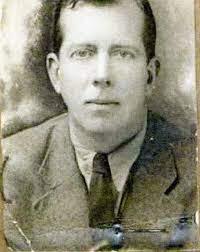

Henri Le Saux (Swami Abhishiktananda) first visited the ashram in January 1949, along with Fr. Jules Monchanin (Parama Arubi Ananda) who was on his third visit.
From A Woman’s Work by Mary Ellen Korman – The two monks had already begun making plans to found an ashram. They realised they would need to experience an Indian ashram for theirs to be authentic, and visited several, including Ramakrishna Tapovanam. On arriving at Ramanasramam they tried to arrange a room to themselves so they could celebrate Mass, but were urged to go to breakfast. At this time, Roman Catholics could receive Communion and priests could celebrate Mass only if they had fasted since midnight, so to avoid eating breakfast the two monks said they had “already performed this morning rite.” They were advised to at least introduce themselves to Bhagavan. They went to the dining room where Bhagavan was seated before his breakfast. Père Monchanin introduced himself, reminding Bhagavan of who he was and that he’d visited two previous times, then introduced Le Saux, who spoke no Tamil and so remained silent. Bhagavan responded with hand gestures, “some inarticulate mumbles, and above all with a smile so full of kindness as to be unforgettable.”
Henri Le Saux also known as Swami Abhishiktananda (1910 – 1973) was a French Benedictine monk who, having moved to India in 1948 in search of a more radical form of spiritual life, adopted sannyasa in accordance with Indian tradition and became one of the pioneers of Hindu-Christian dialogue. Swami Abhishiktananda first visited Sri Ramanasramam in January 1949, when the Maharshi was already ill. He had only two meetings with him. Later he would spend several weeks and months at a time in the caves of Arunachala between 1950 and 1955 in deep meditation. A leading thinker in the development of the dialogue between Christianity and Hinduism, and a leader in the Christian Sanyas and the Ashram Movement, he founded the Christian ashram ‘Shantivanam.’ He was the author of many books, including Saccidananda: A Christian Experience of Advaita, and The Further Shore.
Always Beyond: The Cave of the Heart The Life of Swami Abhishiktananda by Shirley du Boulay.
Face to Face with Sri Ramana Maharshi Compiled and Edited by Professor Laxmi Narain.
https://www.stillnessspeaks.com/wp-content/uploads/2016/07/Face_to_Face_with_Sri_Ramana_Maharshi.pdf

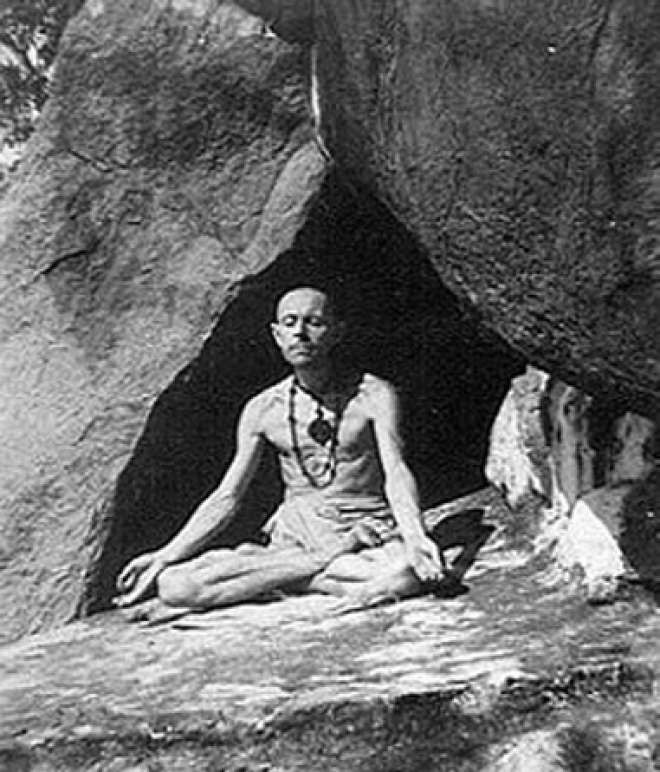

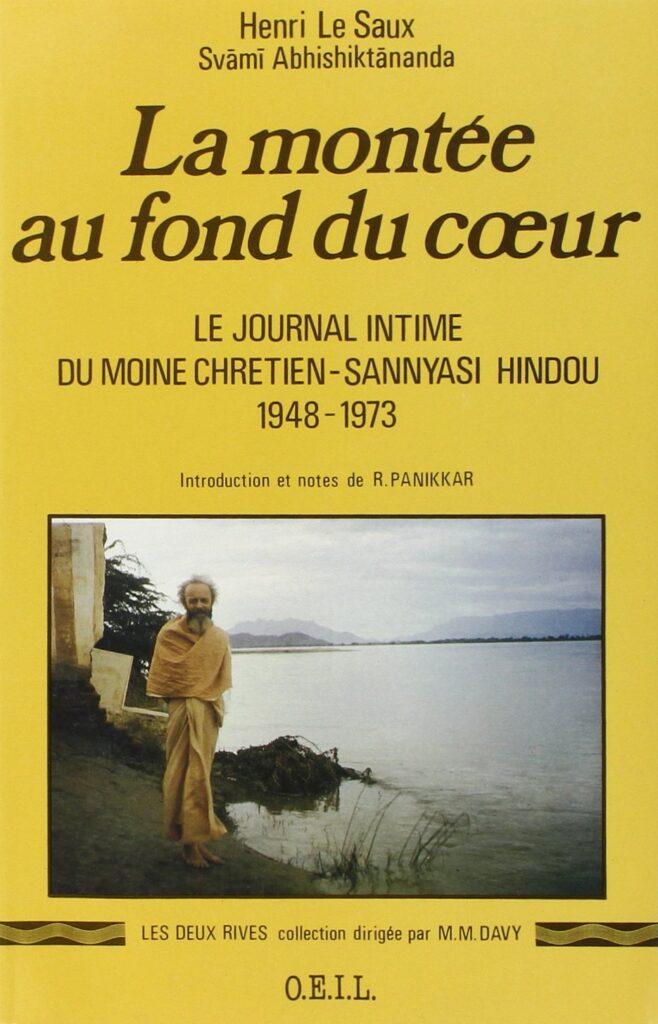
https://www.youtube.com/embed/W6MSwbPtIKY?feature=oembedThis 2016 documentary ‘Dawn of the Abyss: The Spiritual Birth of Swamiji’ reveals an awakening in the life of the Benedictine monk Henri Le Saux.

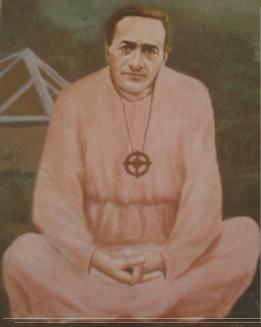
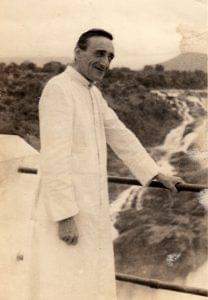
Wolter A. Keers (1923 – 1985) was a Dutch teacher and writer who lectured on yoga and Advaita in Europe. Roda MacIver, the wife of David MacIver, took Keers to Ramanasramam in 1950. He travelled extensively in India during the 1950s, becoming a disciple of both Ramana Maharshi and Atmananda Krishna Menon. He returned and began teaching in Brussels during the 1970s. He also translated the book I am That by Nisargadatta Maharaj into Dutch. He left his body in 1985 by stretching out on the floor in his living room in front of a photo of Sri Ramana Maharshi and then passed away.
Face to Face with Sri Ramana Maharshi Compiled and Edited by Professor Laxmi Narain.
https://www.stillnessspeaks.com/wp-content/uploads/2016/07/Face_to_Face_with_Sri_Ramana_Maharshi.pdf
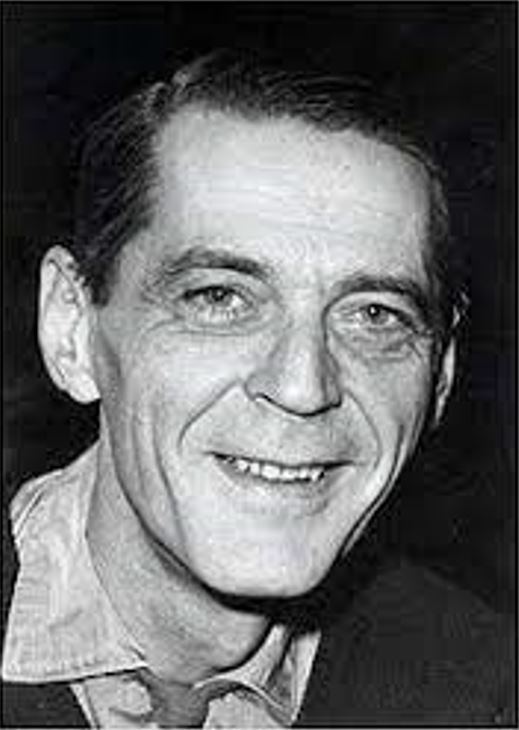
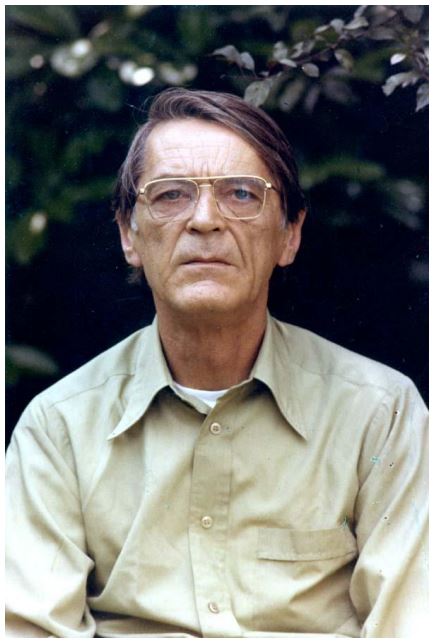
Eleonore de Lavandeyra (d 2020, aged 95/96) went to Tiruvannamalai during the Maharshi’s last, long illness and yet she found in his look a “light, love and strength” which filled her then and has never left her.
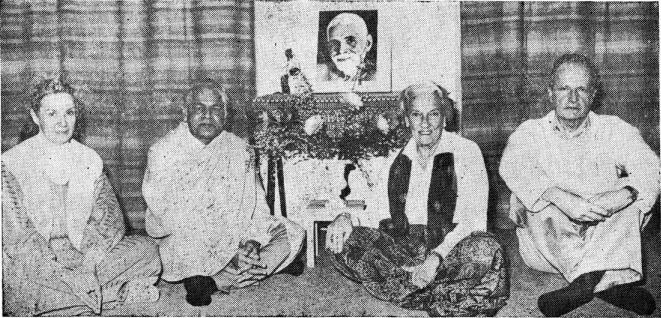
From The Mountain Path April 1980 – AT FLEURIER, SWITZERLAND On January 2, 1980, the devotees of the Maharshi in Switzerland, France and Italy met in Fleurier to celebrate the Centenary.
After an Indian dinner, they moved to the Library where a beautiful picture of Sri Bhagavan brought to those present his penetrating glance and abundant grace. A few minutes’ silence was followed by the testimonies of four speakers who had all met the Maharshi in person in Tiruvannamalai. Swami Nityabhodananda explained Sri Bhagavan’s method of self-enquiry leading to Self-realization.
Miss Ella Maillart described her search for “Indian Wisdom” and discovery of “light” in the Maharshi’s message. The sole reality is this light and it is best taught in the universal language of silence. She had planned a brief stay at Tiruvannamalai but spent years there.
Eleonore de Lavandeyra went to Tiruvannamalai during the Maharshi’s last, long illness and yet she found in his look a “light, love and strength” which filled her then and has never left her. She plays on the tanpura whose fundamental sound is a great support to meditation. This was experienced by all present during the spell of meditation at the end of the meeting.
Hendri Hartung, the last speaker, recalled four persons who had helped him in the quest: Olivier de Carfort, Rene Guenon, K. F. Durkheim and Sylvia Hartung.
Music and meditation followed and fulfilled a memorable day charged with the Maharshi’s presence.

American yogini Judith Tyberg (Jyotipriya) (1902 – 1980) stayed for a week sometime between 1947 and 1950. With the Maharshi lying on his bench, Judith and many others gathered around, she found it very easy to meditate in the pure atmosphere of the sage. Her diary is filled with the record of her questions to him and his replies. But one exchange especially stood out, she asked Ramana Maharshi what she would do when all of her spiritual teachers would depart from this life. He assured her with these words “We’ll never leave you. None of your teachers will ever leave you.” Then he added, “You’re already realised, you just don’t know it.”
In 1947, at the age of 45, Judith Tyberg left the US for India to work towards an M.A. in Indian Religion and Philosophy at the Benares Hindu University. But Judith had a deeper purpose – she was on a spiritual quest. As she explained at her first meeting with her departmental Chair, she had come seeking the lost secret of the Veda. Indeed, she said, if all of India’s unfathomable spiritual culture acknowledged the authority of the Veda, there must be illimitably more to it than what she had been given to understand in America. The prevailing view of the time, promoted by Max Meuller and other “Orientalists”, was that the hymns of the Veda were at best glorified Nature poetry, or more commonly, “an interesting remnant of barbarism”. She was told that she had come to the wrong place, that the secret was still lost.
Disappointed, she turned to leave; but a young Philosophy lecturer by the name of Arabinda Basu had overheard her conversation, and brought to her a copy of Sri Aurobindo’s Bases of Yoga and a typescript of his not-yet-published Secret of the Veda. Judith stayed awake reading all night for in her hands, she discovered, were the answers she had been seeking for so long.
In October 1947, Judith arrived at the Sri Aurobindo Ashram at Pondicherry. Arriving on the evening of Lakshmipuja – just as the Mother was about to give Pranams. At the touch of the Mother’s hands on her head, “electric forces” went right through her being. At her first private meeting with the Mother, Judith expressed her longing to give her life to all that was Beauty and Truth. “You chose long ago to serve”, was Mother’s reply. She then told Judith that she and Sri Aurobindo had been waiting for Judith to arrive. Judith asked the Mother for a spiritual name. Next morning, the Mother handed her a chit written in Sri Aurobindo’s hand – “Jyotipriya, the Lover of Light,” it read.
Jyotipriya accepted Sri Aurobindo and the Mother as her gurus. She finished her studies at BHU and spent many hours with many of India’s illustrious spiritual personalities – Anandamayi Ma, Swami Sivananda of Rishikesh, Yogi Krishna Prem, Ramana Maharshi and others. But the Sri Aurobindo Ashram became her “spiritual home.” Here, she found the answer to her “deepest heart’s longings since childhood,” and in the Ashram residents and close friends like Nolini Kanta Gupta, A.B. Purani, Indra Sen, Sisir Mitra and Prithvi Singh, she found the “cream of Hindu culture.” Jyotipriya left the Ashram in 1950, to return to America and became Sri Aurobindo and the Mother’s premier pioneer in the United States.
Judith, along with Charles and Faith Penn they edited a biography, covering the years 1968 to 1971, of Sathya Sai Baba called Sathyam Sivam Sundaram Part III by N. Kasturi.
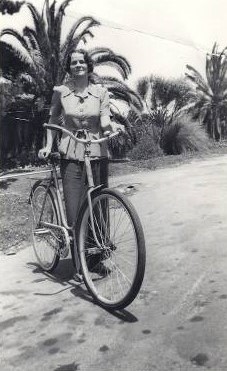
Western devotees at Ramana Maharshi’s Mahasamadhi, taken from an Indian Govt Newsreel – 15 April 1950.
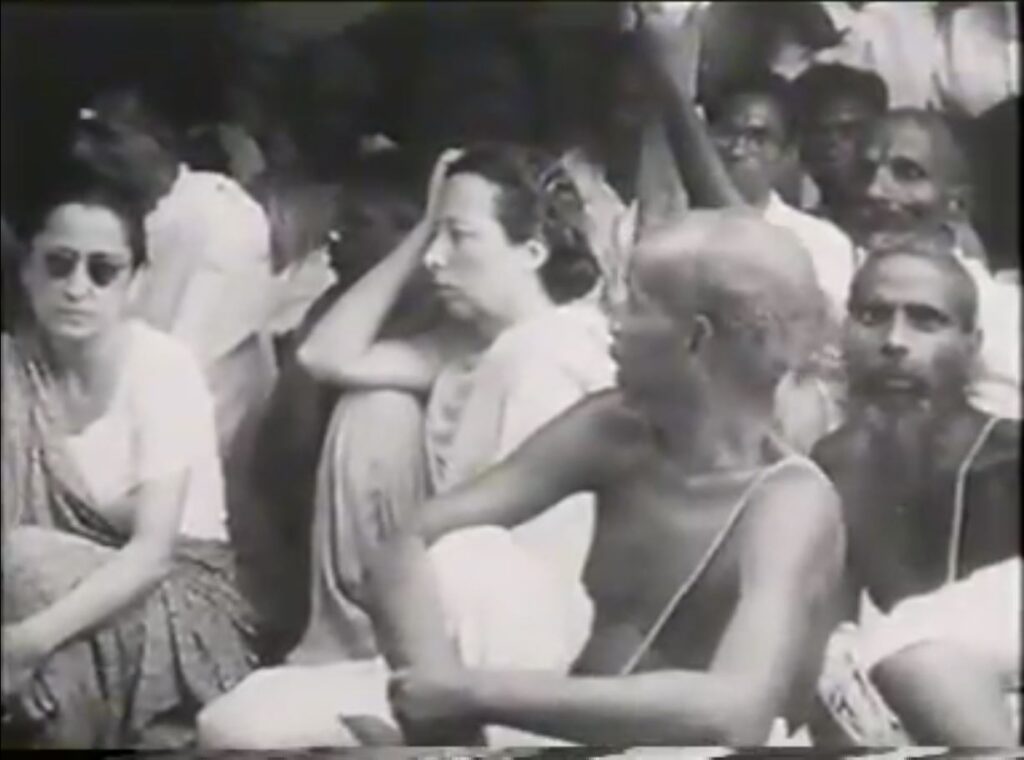
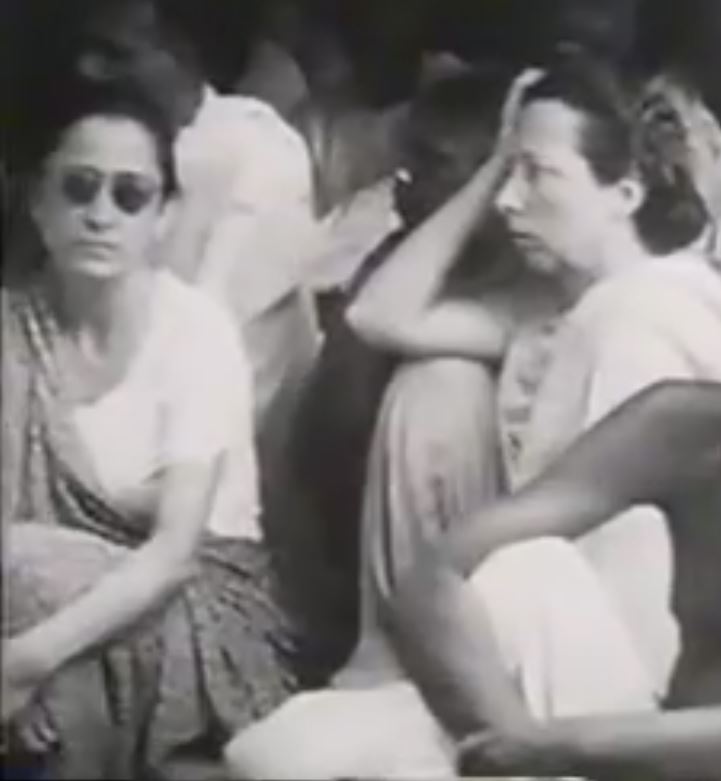

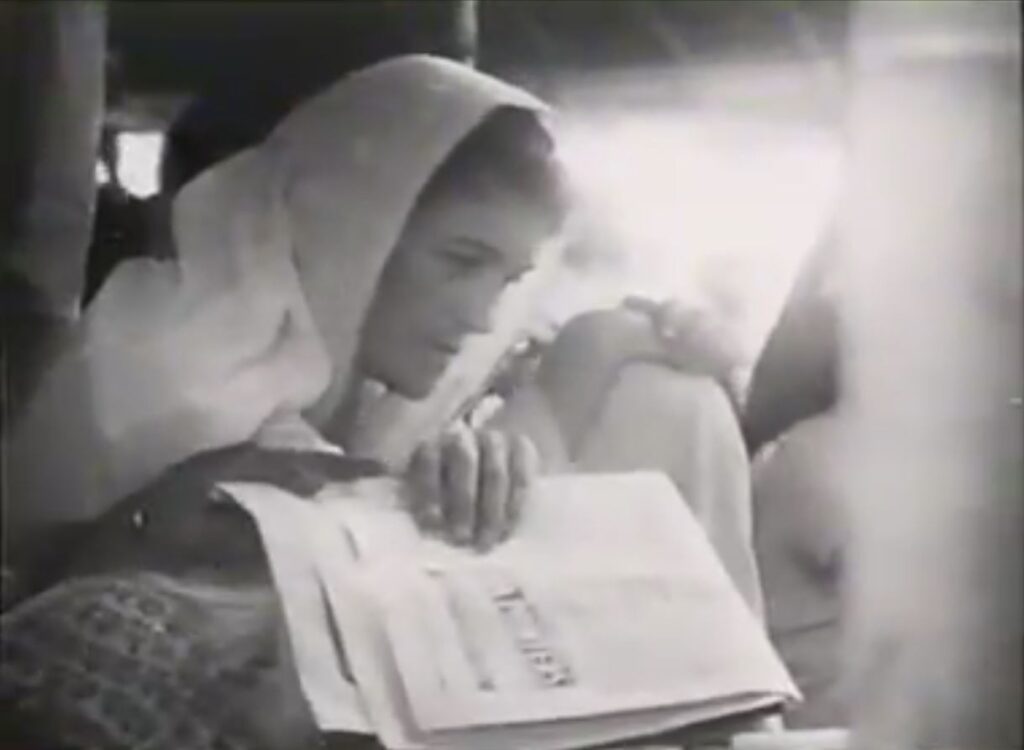
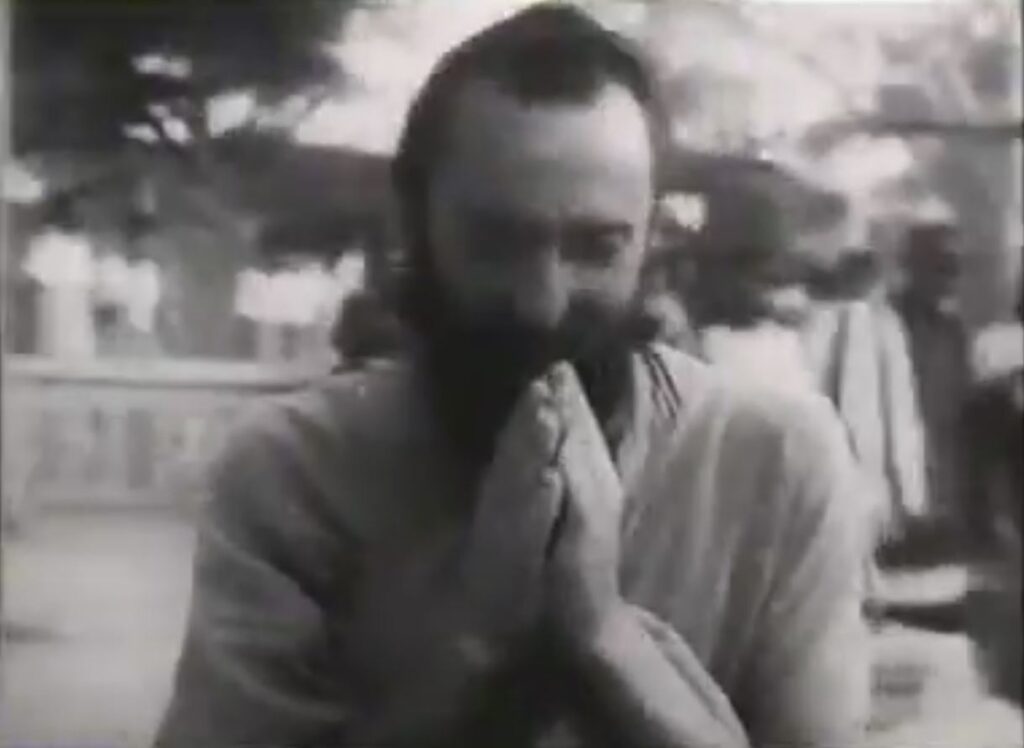
Gary Snyder and Joanne Kyger had stayed with the Osborne’s briefly in Janurary 1962, staying in a little room on the top of the house from which they could look out at Arunachala through a mass of bougainvillea. Gary Snyder was once described by fellow poet Allen Ginsberg in October 1955 at the Six Gallery reading for the first public performance of Ginsberg’s poem ‘Howl,’ as “a bearded youth of 26, formerly a lumberjack and seaman, who had lived with the American Indians.” Snyder’s uncles had all gone to sea or worked in logging camps. Ginsberg also said that Snyder was “perhaps more remarkable than any of the others.” Jack Kerouac who was also in the audience later recalled that Snyder as “the only one who didn’t look like a poet.” Kerouac thought Snyder as one of “the old-time American heroes.” Three years later, Kerouac published The Dharma Bums, a novel featuring Snyder as the mountain-climbing, haiku-hatching hero, Japhy Ryder.

Deborah Baker mentioned while speaking at the Indian Summer Festival in Vancouver in 2019, that Gary was a serious student of Zen Buddhism. Before arriving in India, while in Kyoto to become enlightened, he was desperate for Joanne to join him from California, “If you come to Kyoto and study meditation and Buddhism with me you will lose your ego” to which she replied “why would I want to lose my ego?, I have tried for years to have one.”
From Deborah Baker’s book A Blue Hand: The Beats in India “Don’t you want to study Zen and lose your ego?” Gary Snyder asked Joanne Kyger upon her arrival in Japan and learning of her decision not to stay. “What!” Joanne had replied with koanlike economy. “After all this struggle to obtain one?”
Author David Godman arrived in Tiruvannamalai in 1976 after reading Arthur Osborne’s book, The Teachings of Ramana Maharshi in his Own Words. After three days in the ashram, he spent the next eighteen months in Arthur and Lucia Osborne’s home, taking a room at the back of the house. Arthur had passed away a few years before. Despite his intention to stay in India for only six weeks, he has been there almost continuously ever since, residing mainly in Tiruvannamalai. In 1978, he began to do voluntary work for Sri Ramanasramam. He looked after their library from 1978 to 1985, edited their magazine for a short period of time, and from 1985 onwards did research for his various books. In 1993, he went to Lucknow and spent four years with H.W.L. Poonja a well known devotee of Ramana Maharshi. He returned to Tiruvannamalai in 1997 and has since been researching and writing new books on Ramana Maharshi.
Other devotees of Sri Ramana Maharshi
https://archive.arunachala.org/ramana/devotees/
Unidentified Western visitors and devotees of Ramana Maharshi
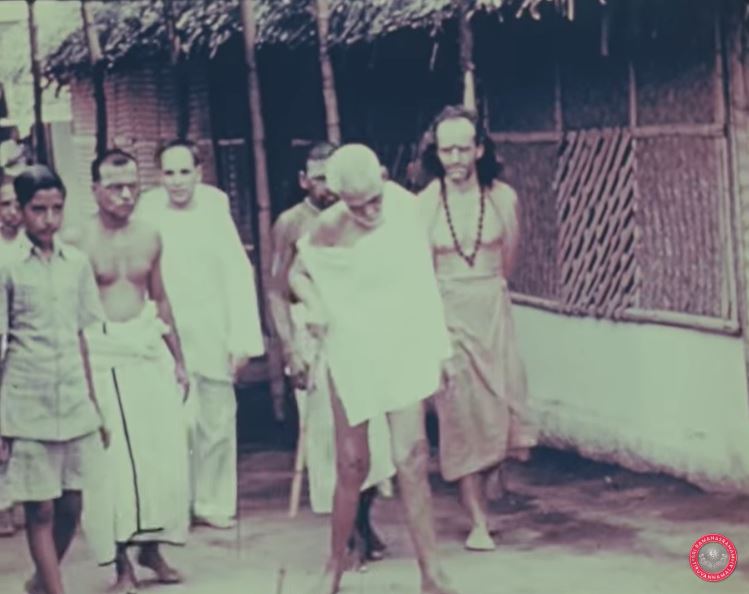


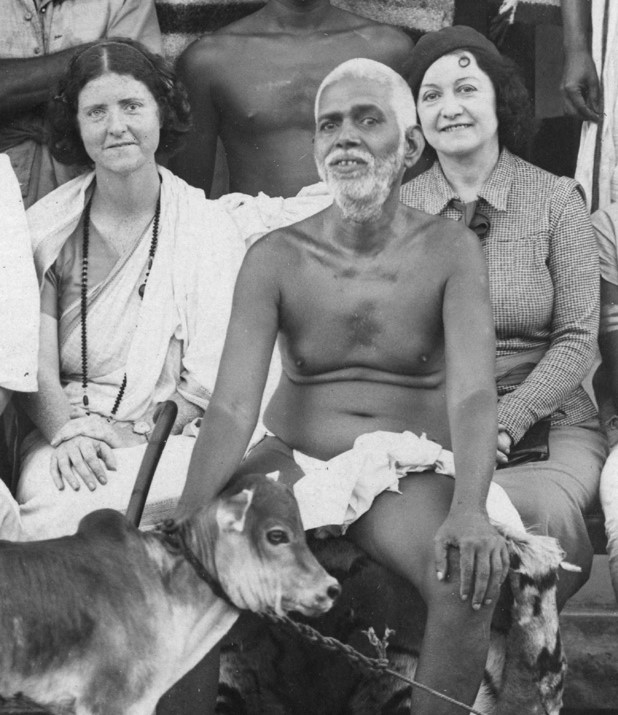

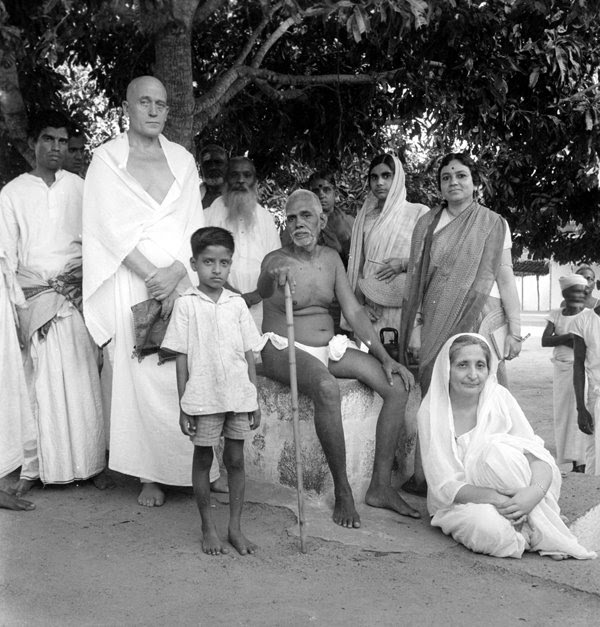
Parsi actress Feroze Taleyarkhan was born 1898. She came from a wealthy family. In the mid or late 1920s, she visited Hazrat Babajan’s shelter at the neem tree, being greeted with the words: “Oh, so you have come!” According to her own report, Taleyarkhan then broke into “a flood of tears.” Babajan consoled her. The saint herself wept. For two or three days, the visitor was not her usual self, being distracted from her surroundings. Babajan subsequently predicted a change for the visitor. After the matriarch’s death, Taleyarkhan became a devotee of Ramana Maharshi during the 1930s. She later authored the book Sages, Saints and Arunachala Ramana (1970).
https://archive.org/embed/sages-saints-and-arunachala-ramana

Fanny Guex
Ms Guex’s research deals with travel literature, connected histories and intercultural encounters. In particular, she studied 3 transnational life trajectories of Swiss citizens that went to India at the period of the Second World War and wrote about their spiritual and transcultural experiences: Ella Maillart (1903-1997), Lizelle Reymond (1899-1994) and Father Jean-Bernard Simon-Vermot (1923-2016). https://columbia.academia.edu/FannyGuex
